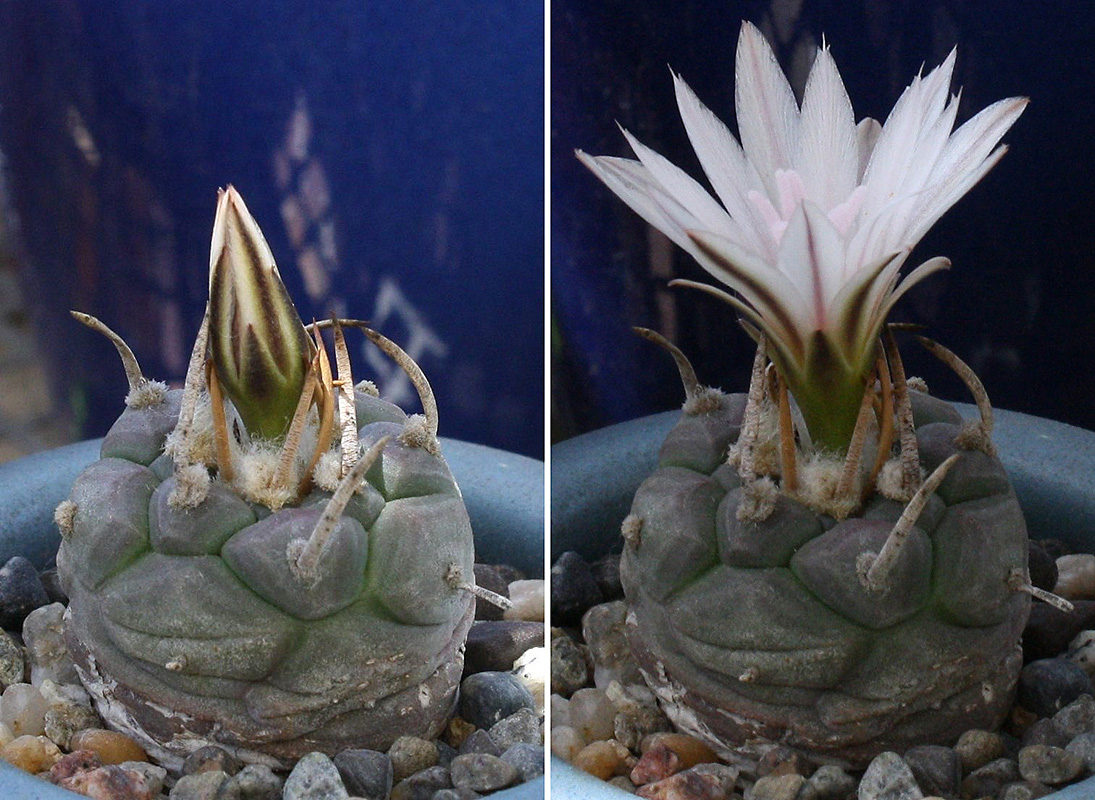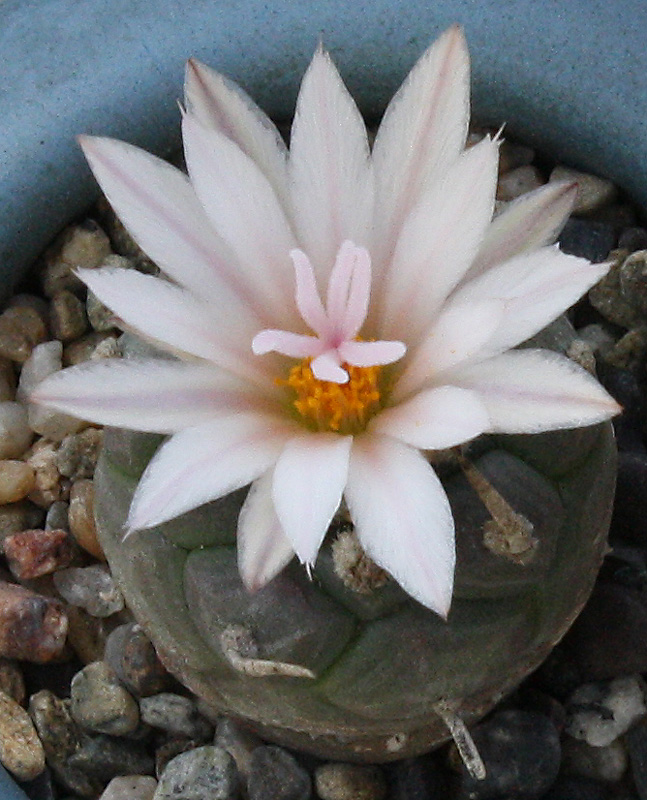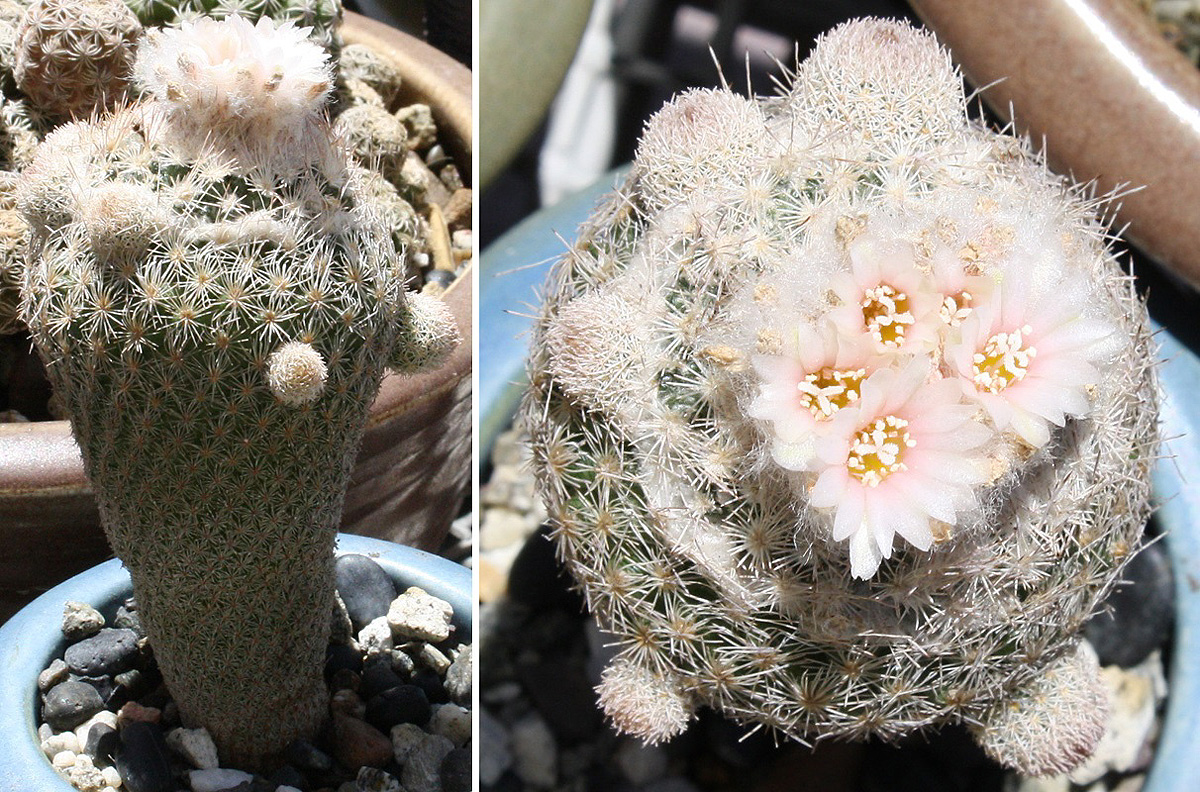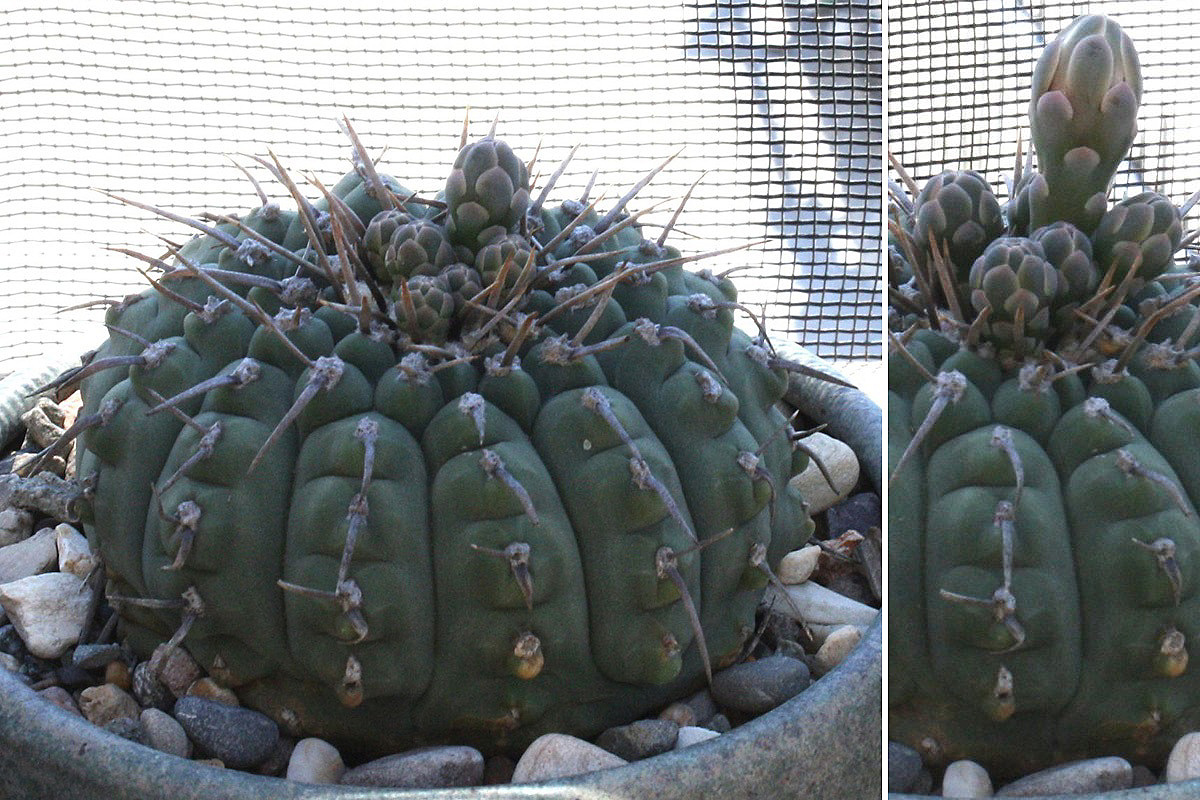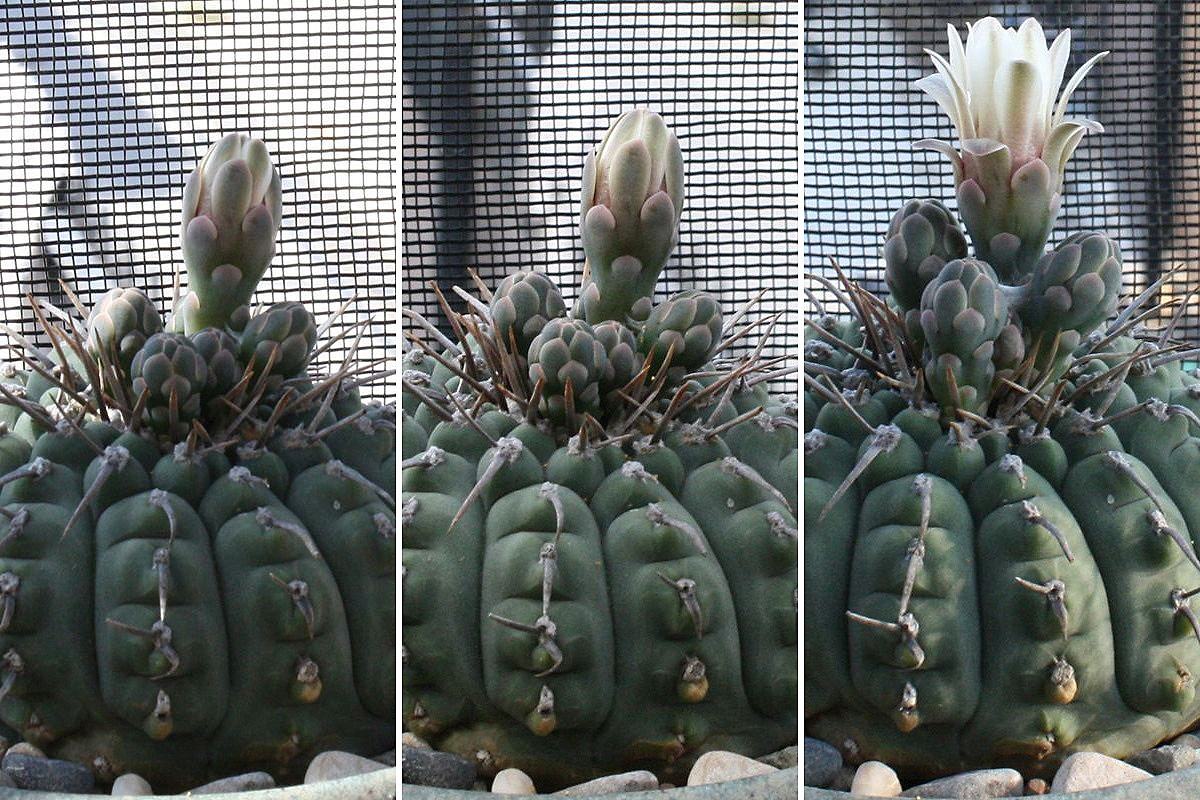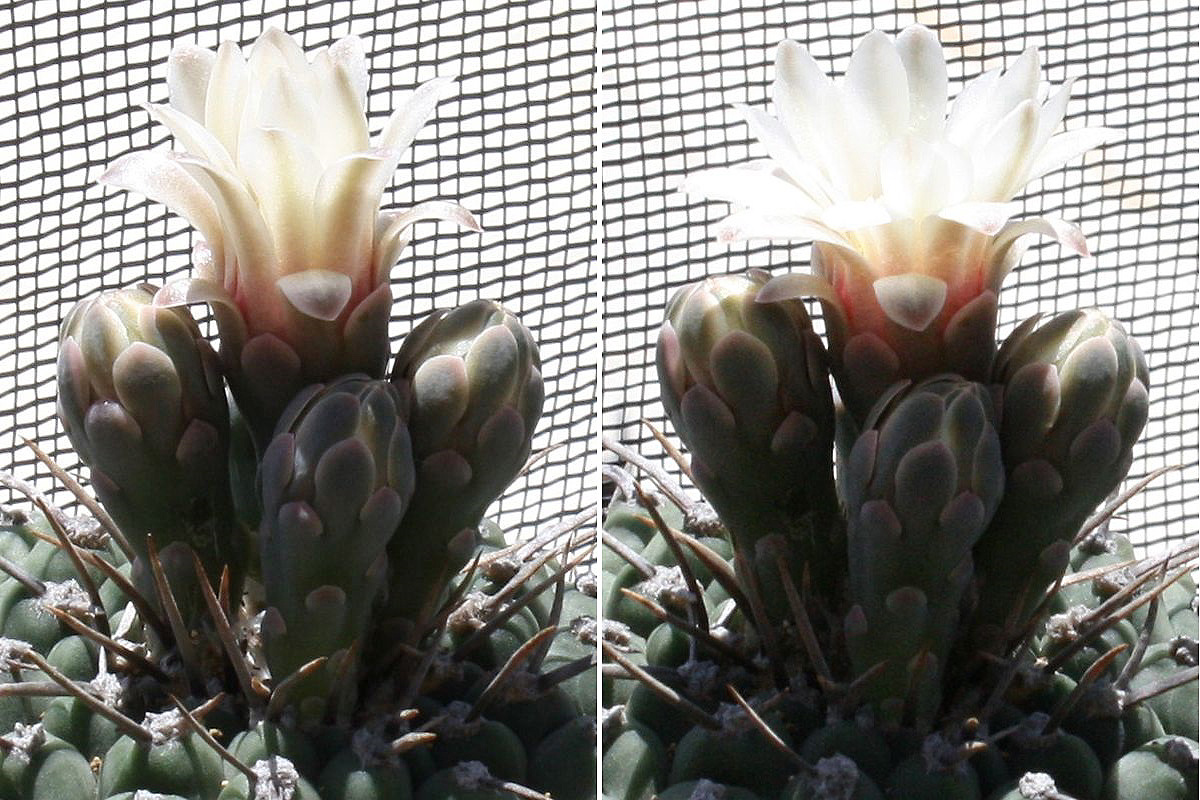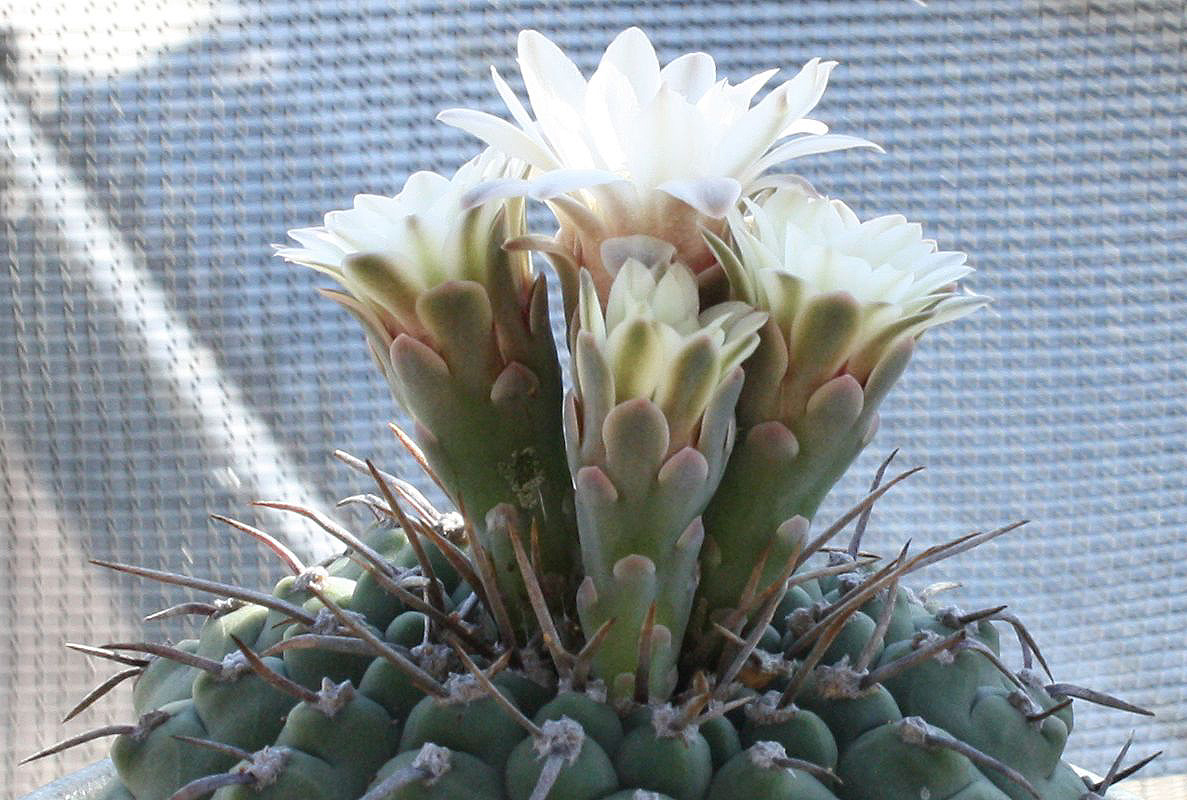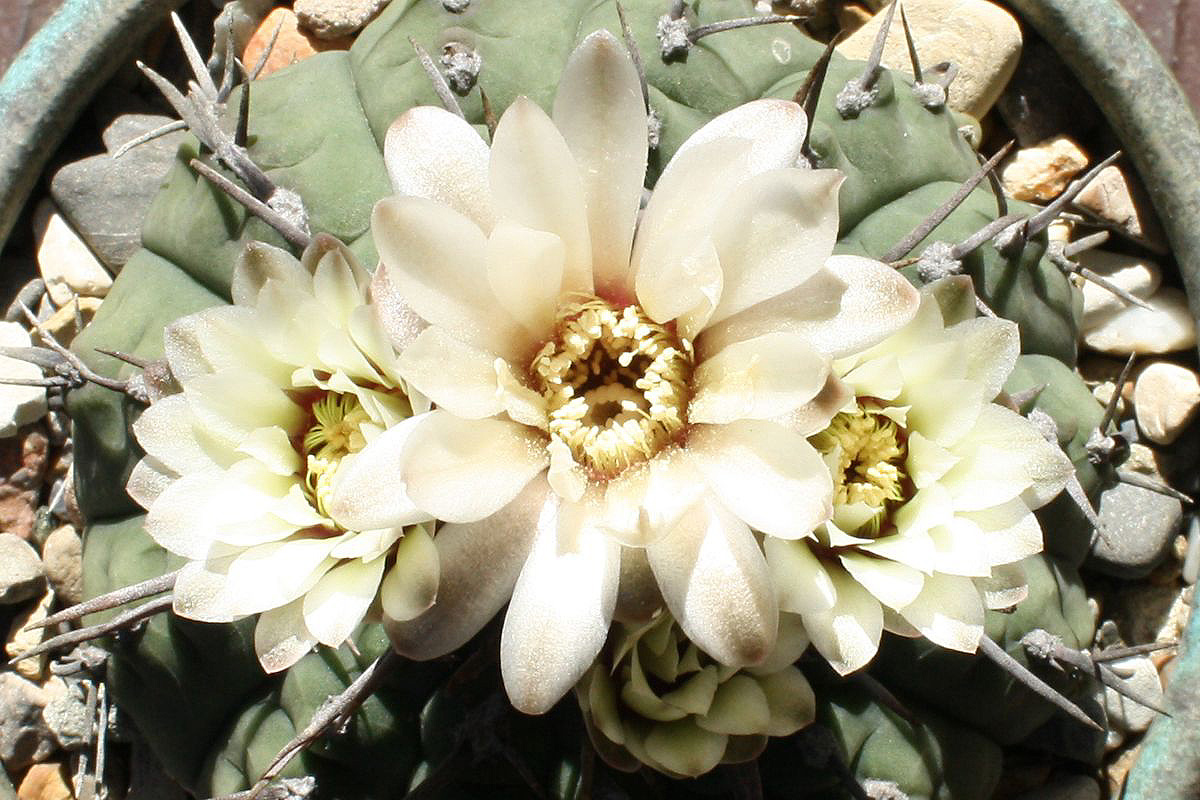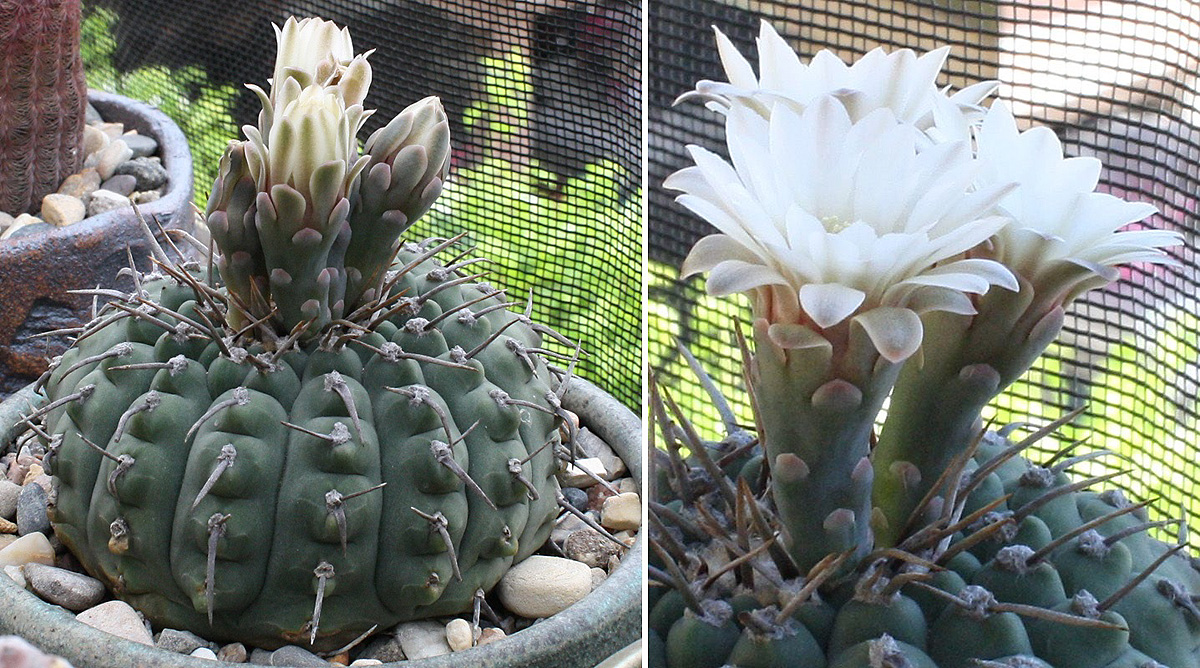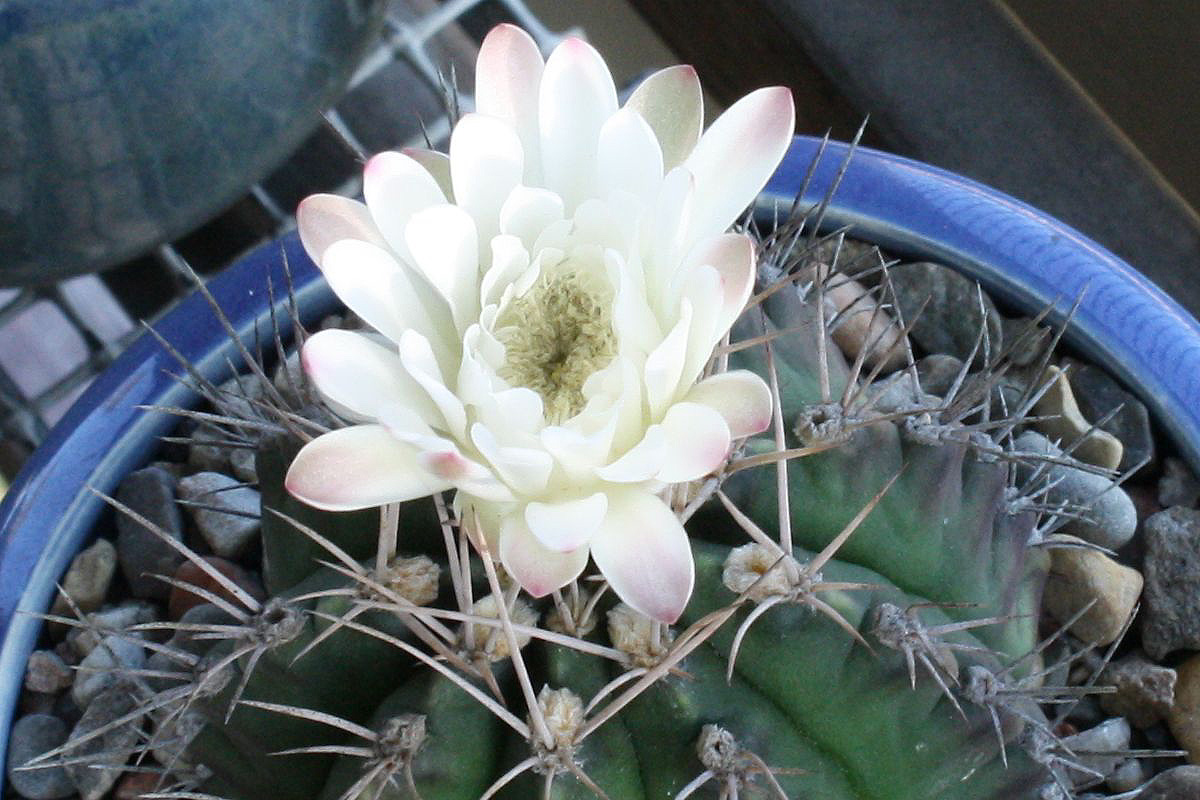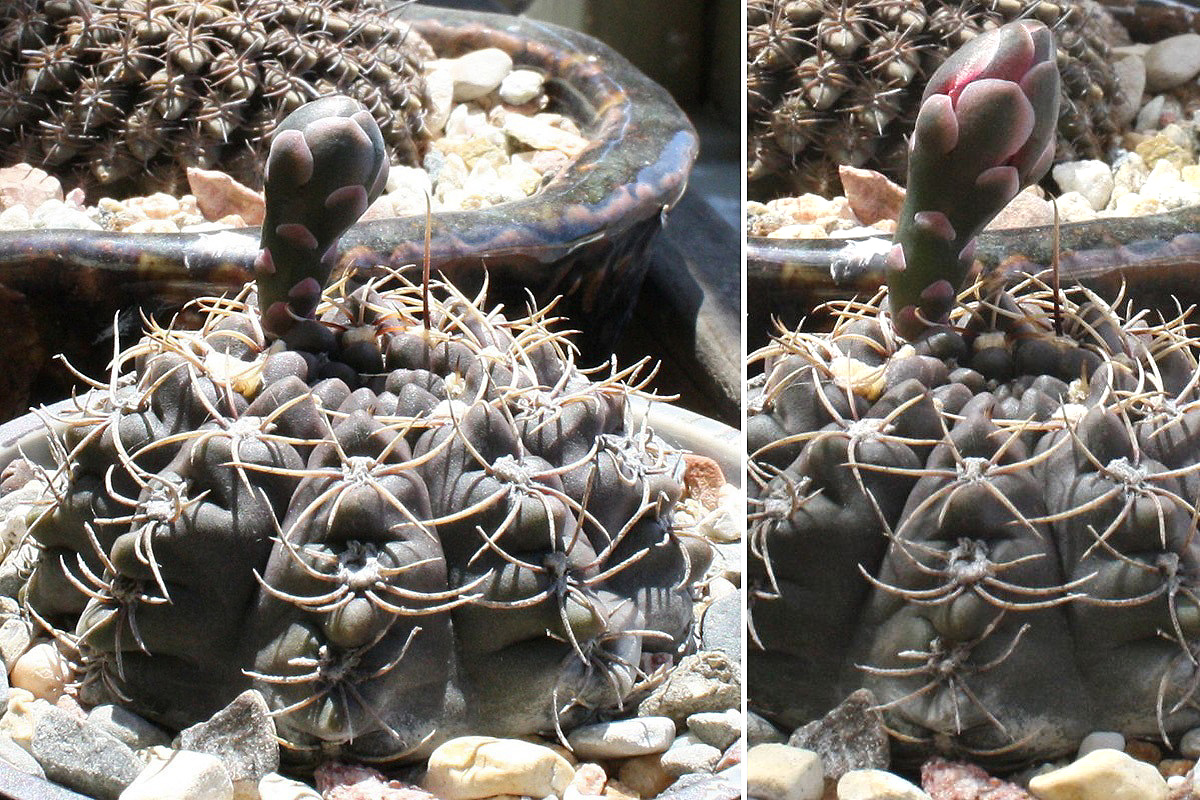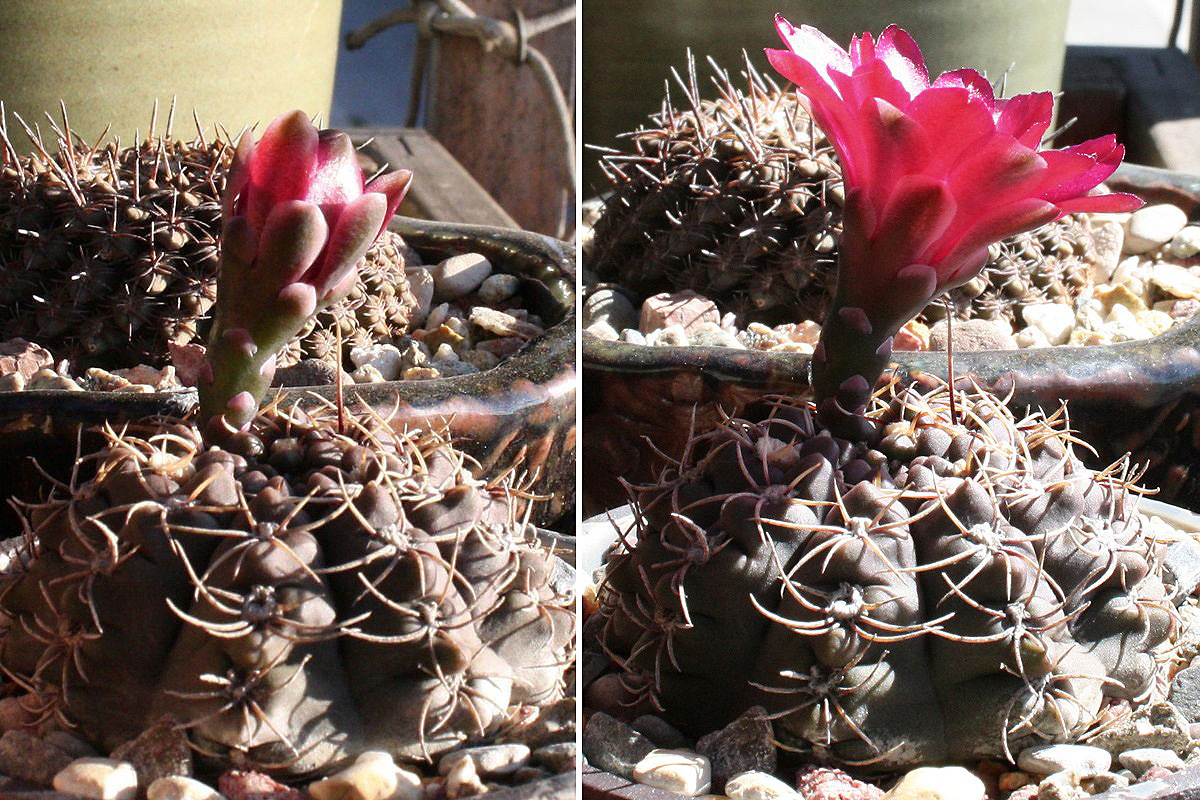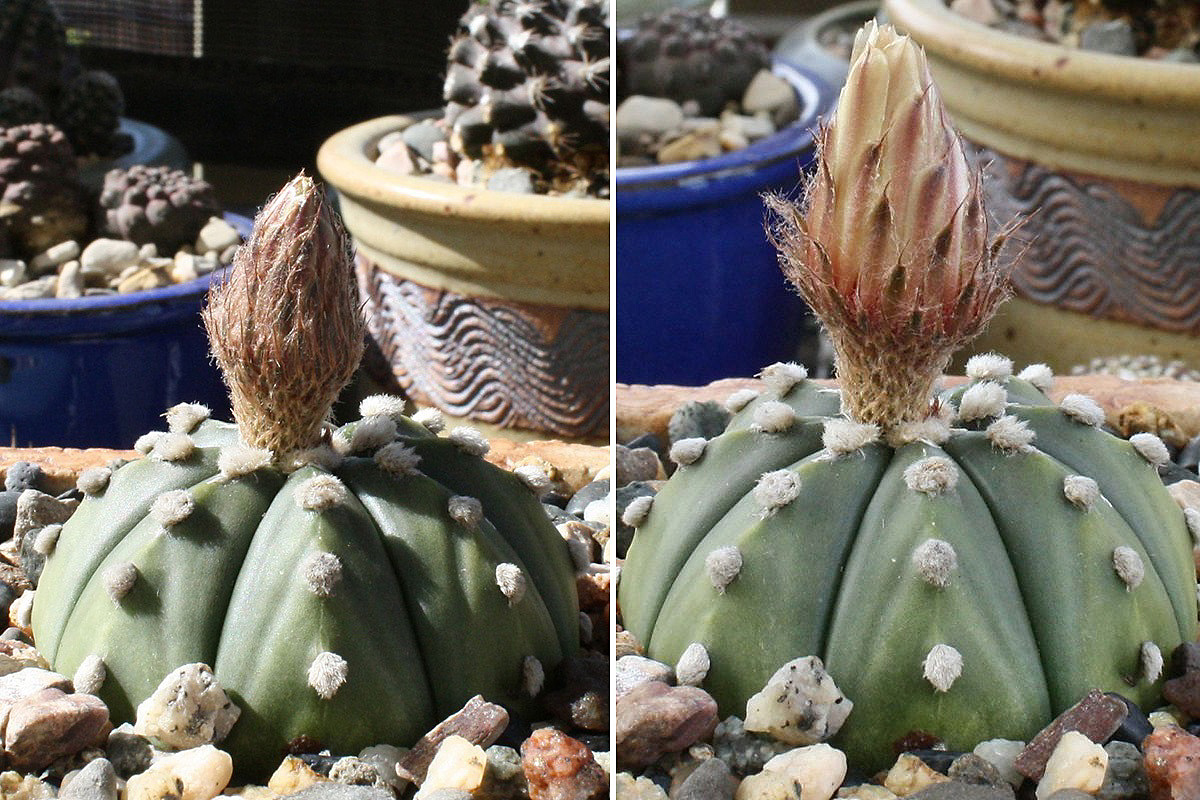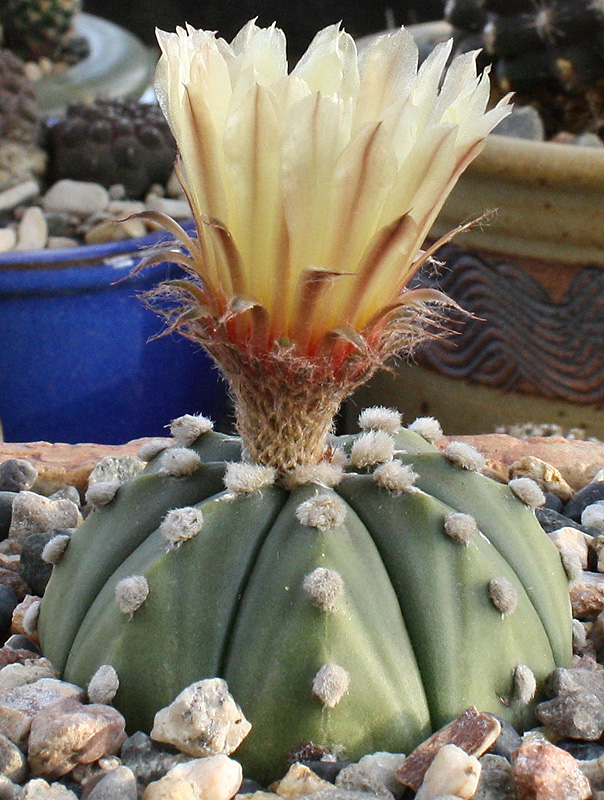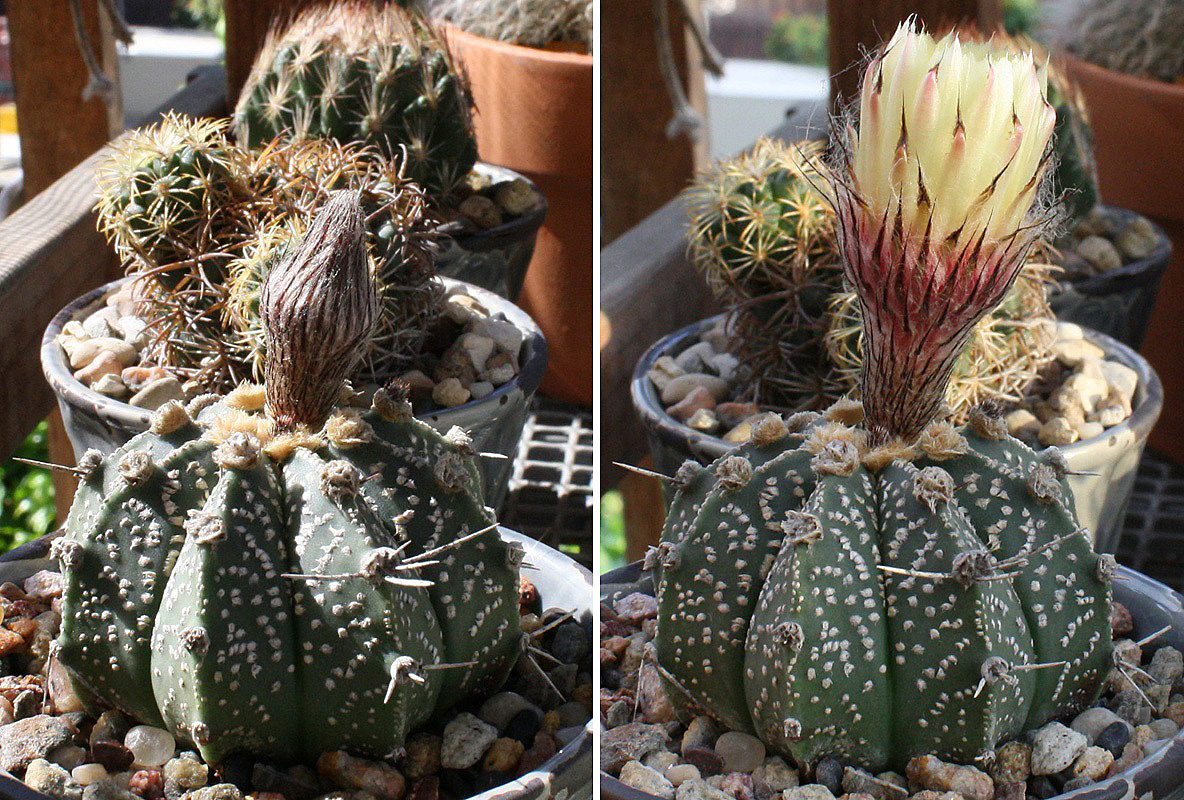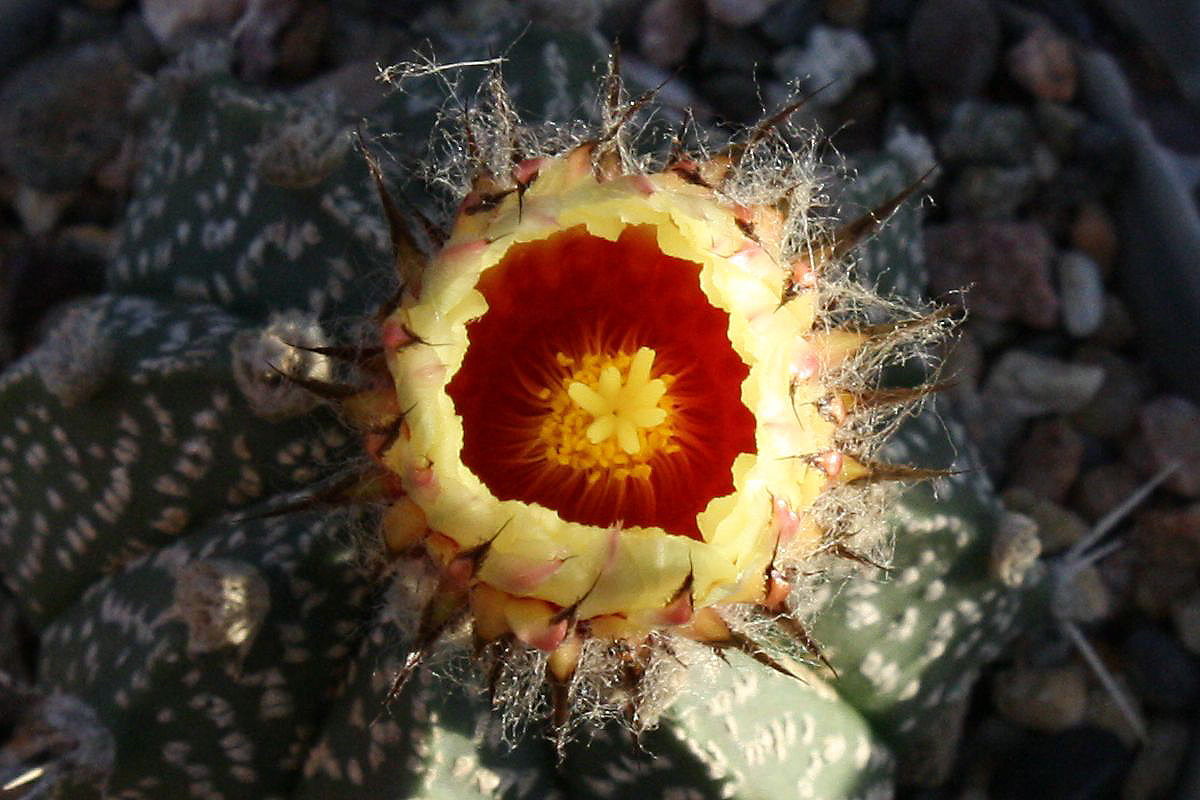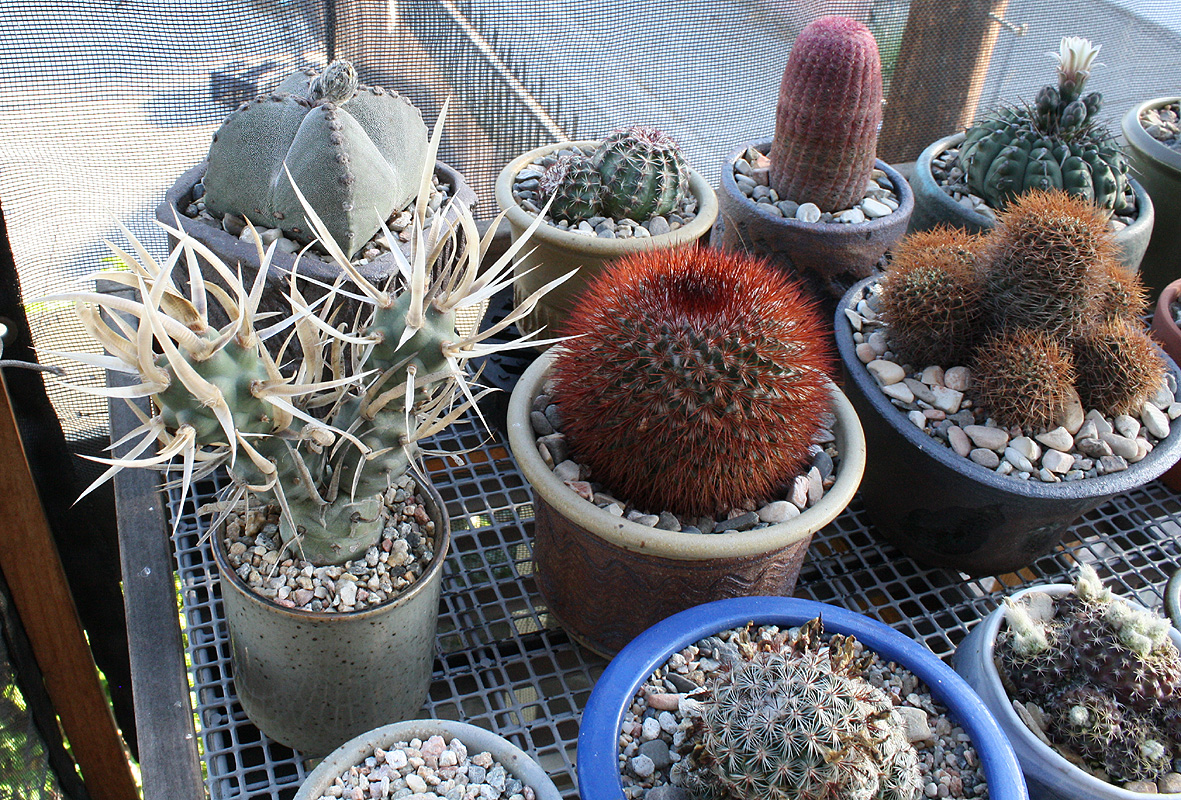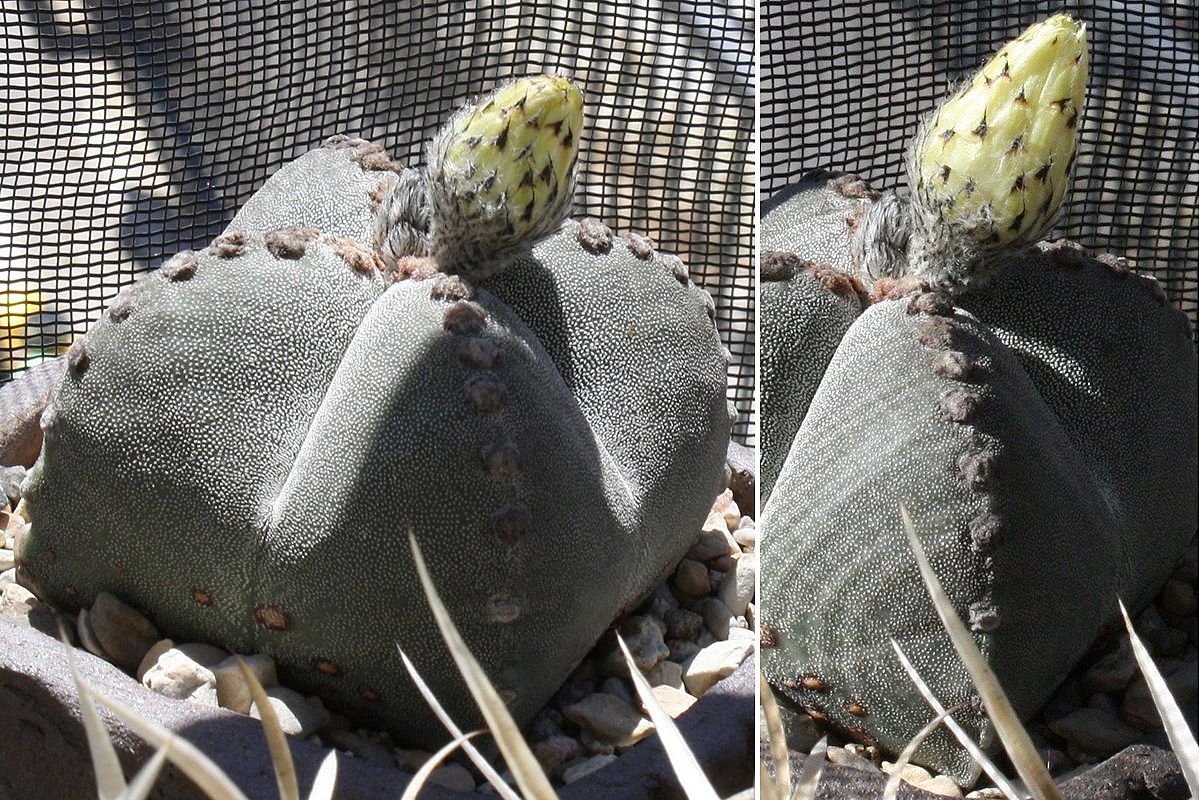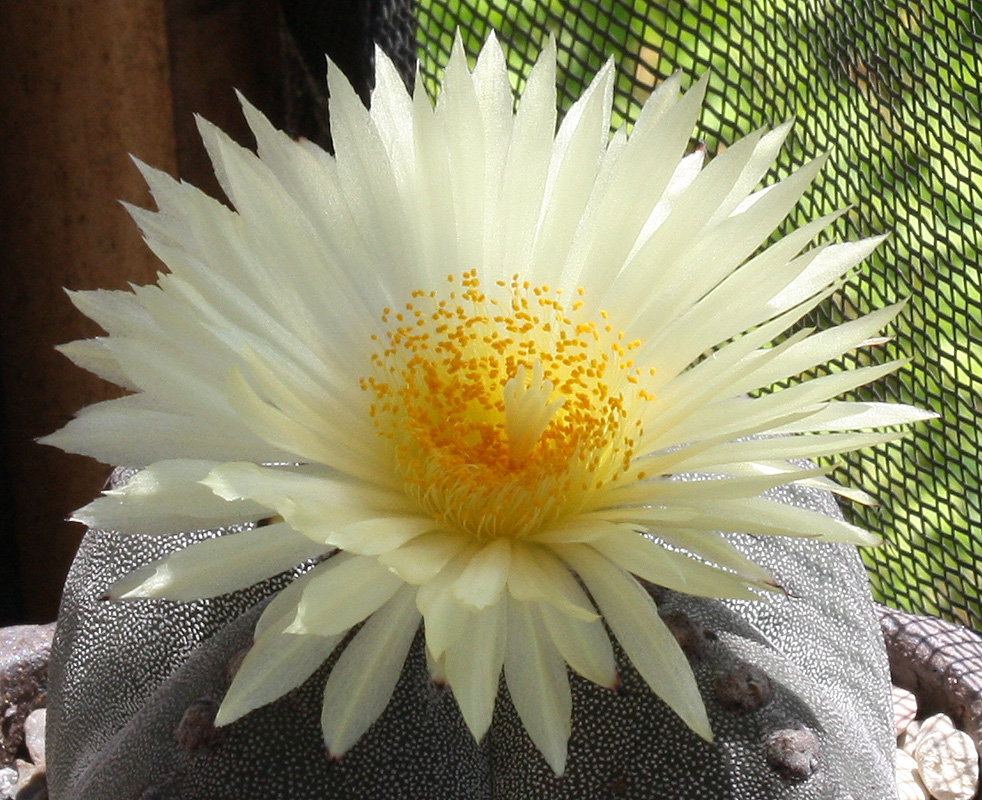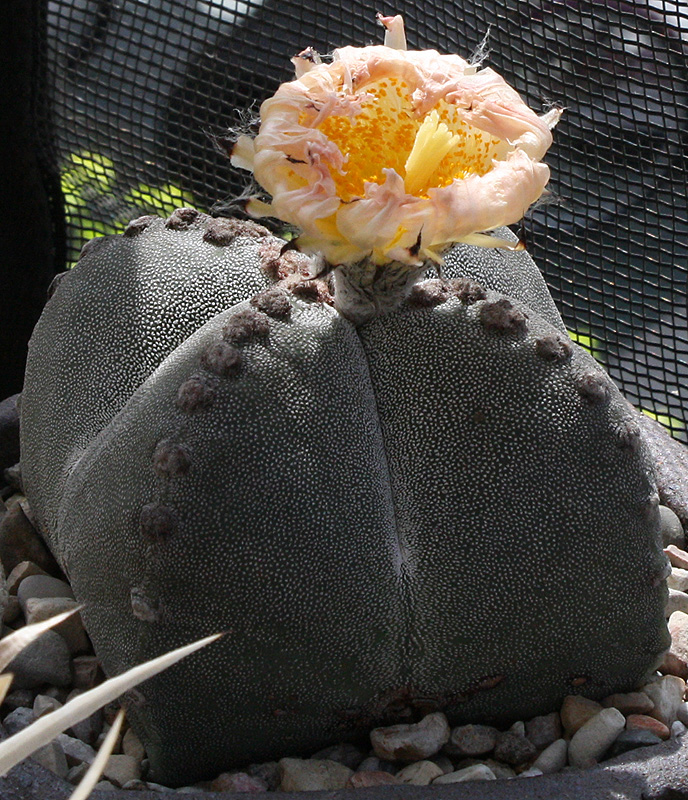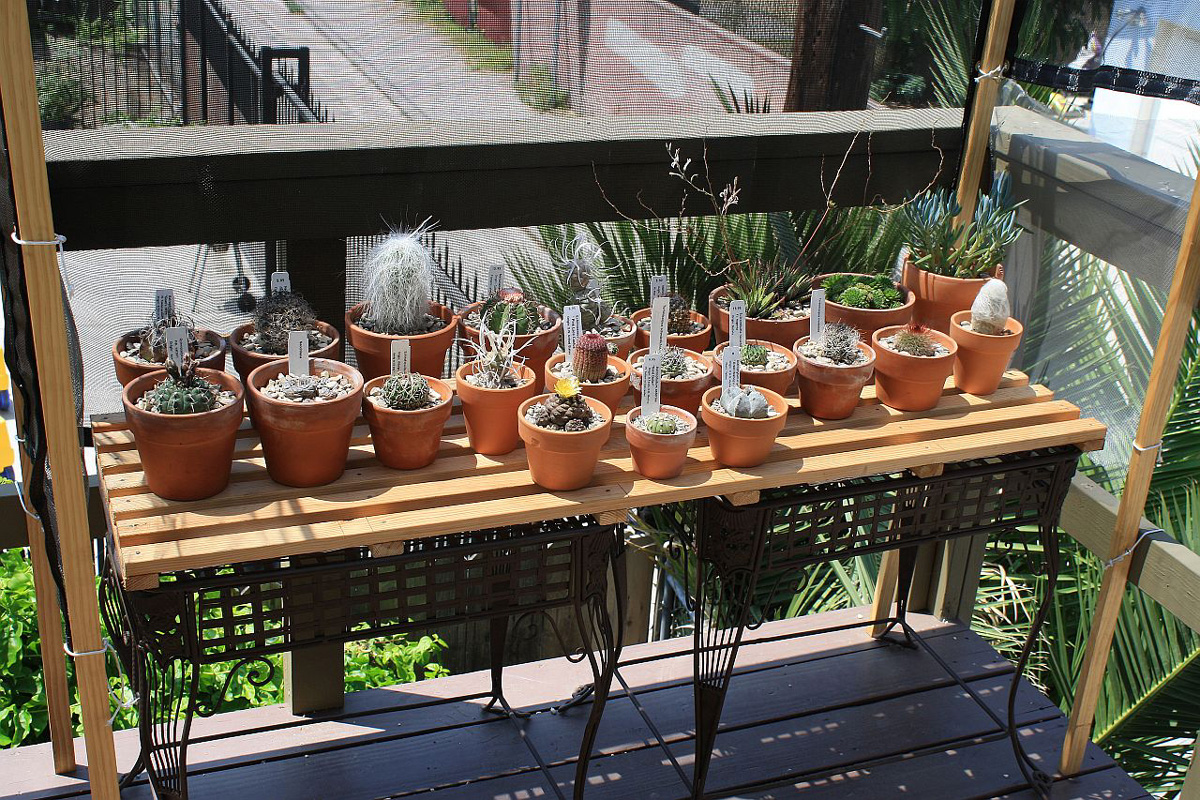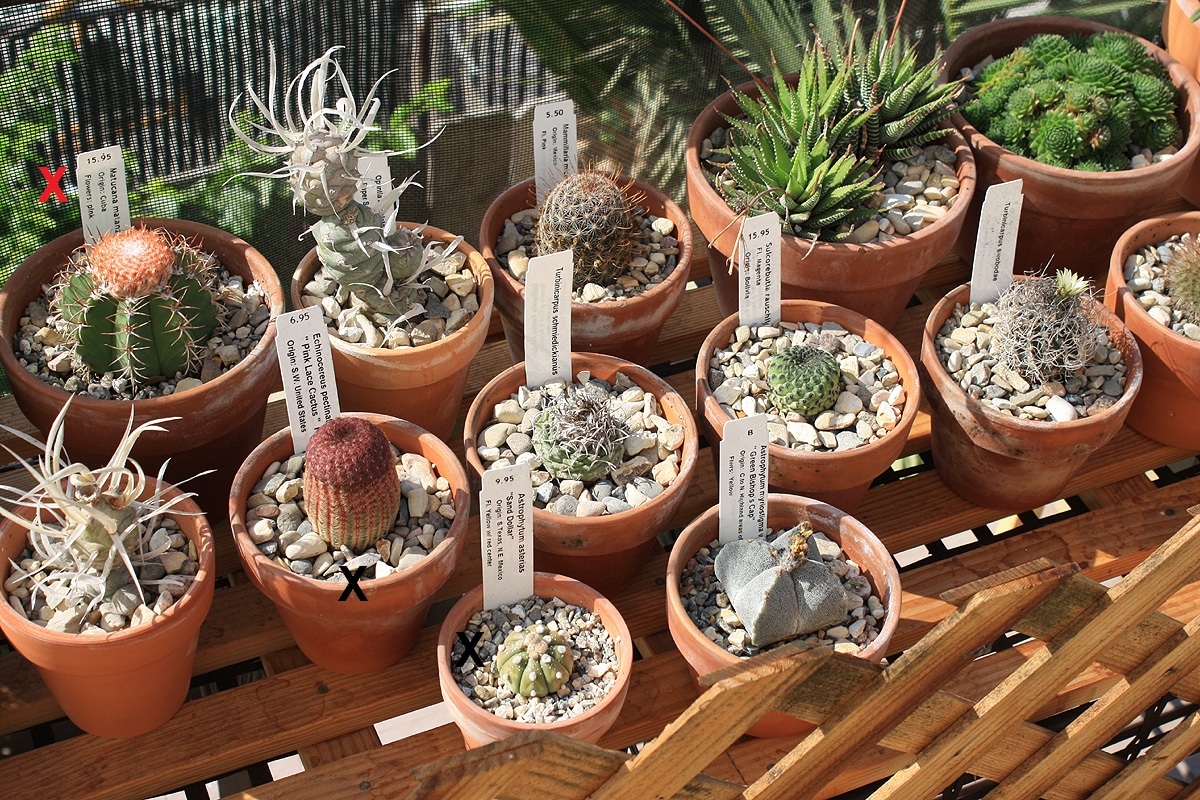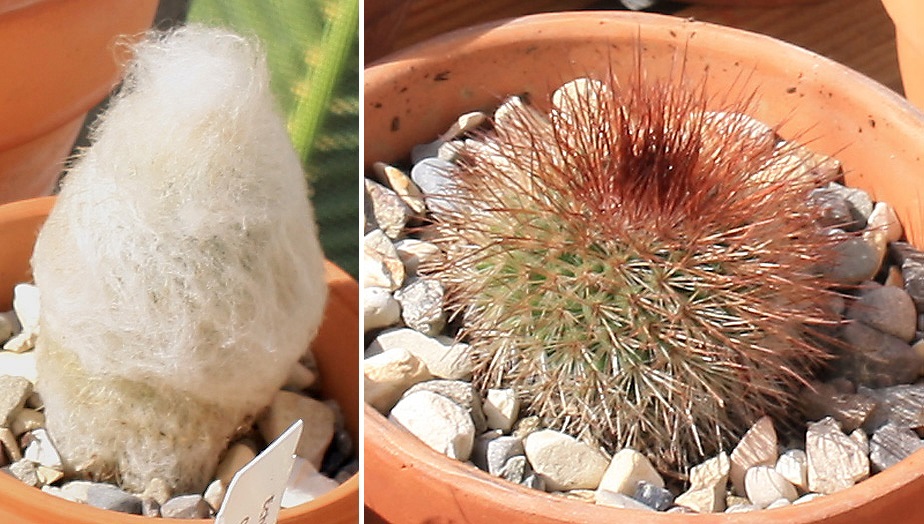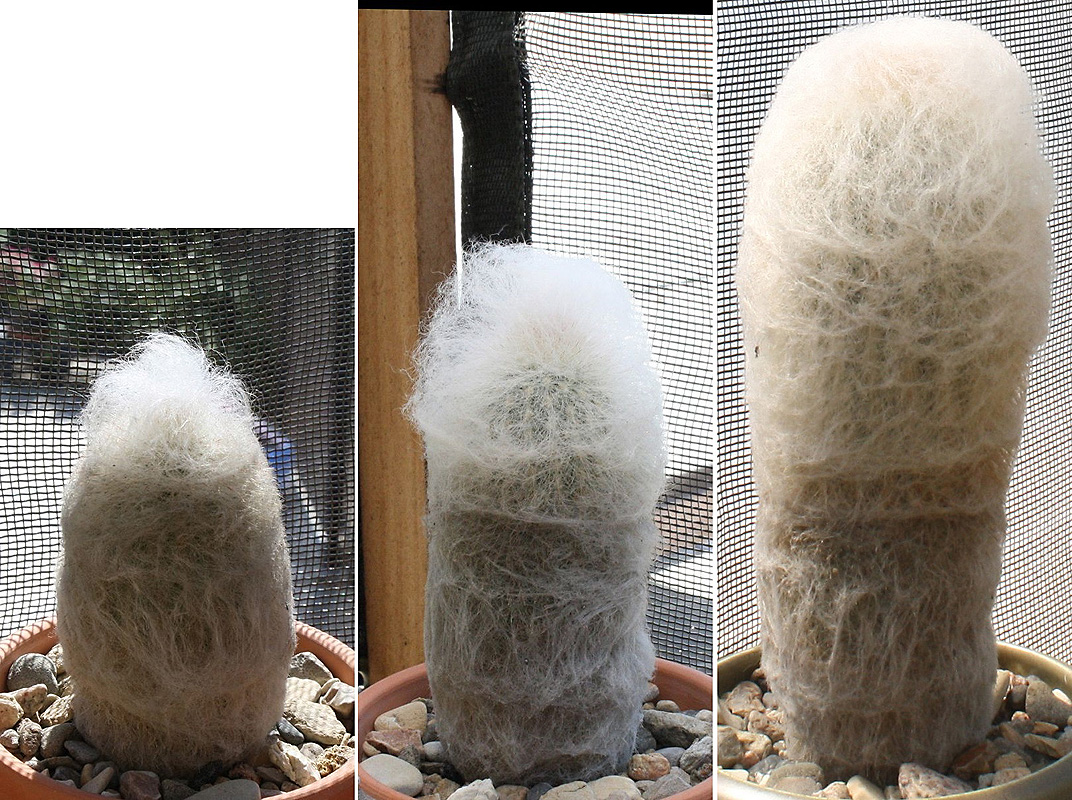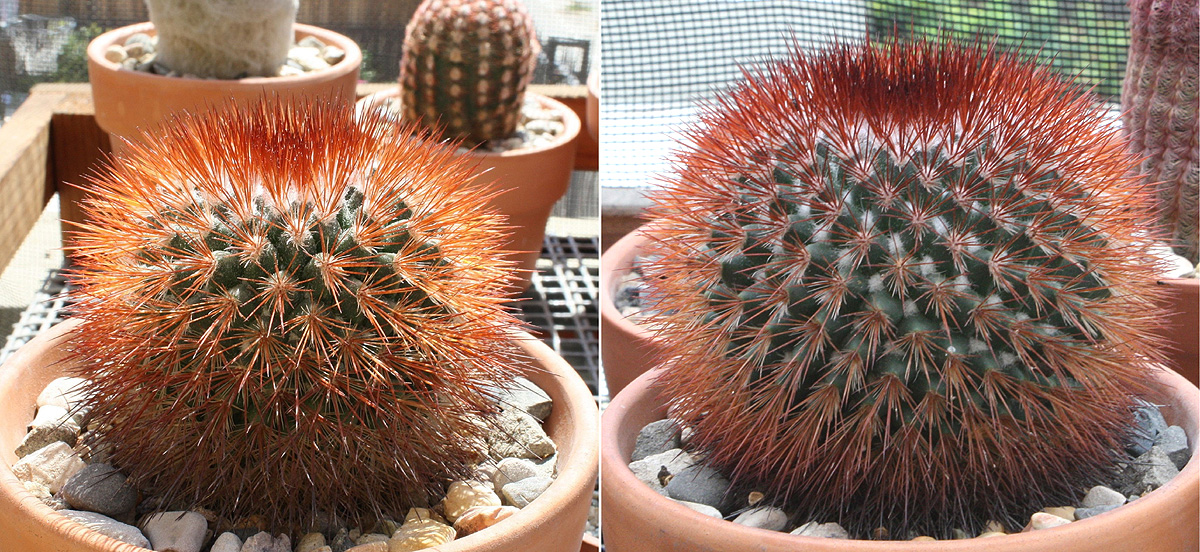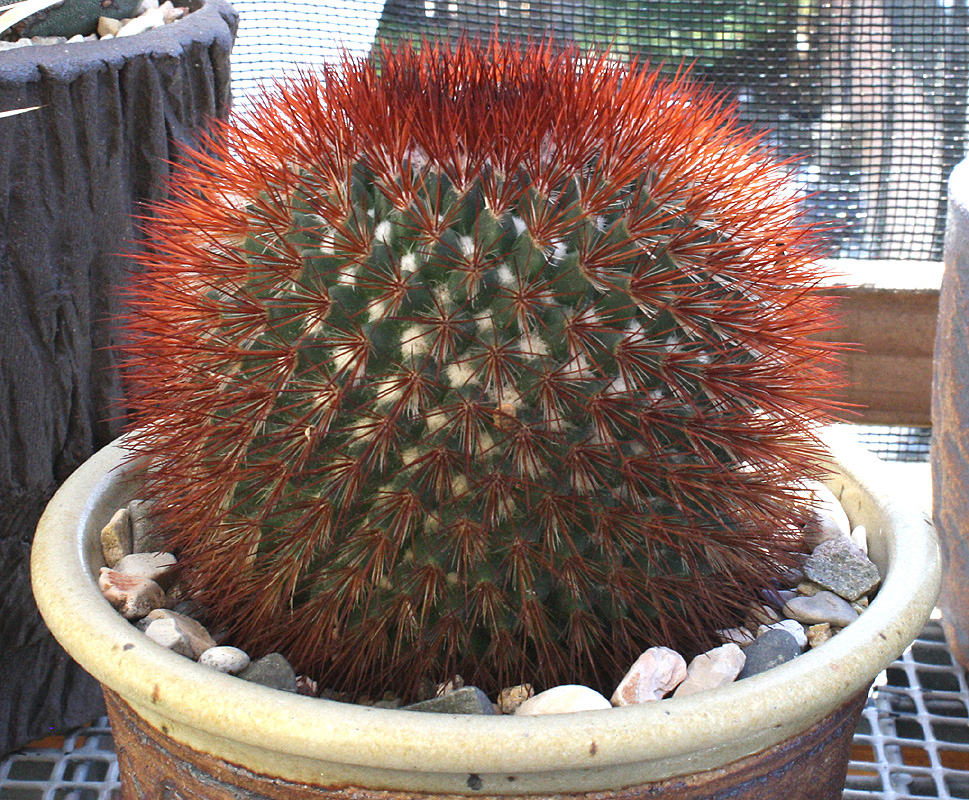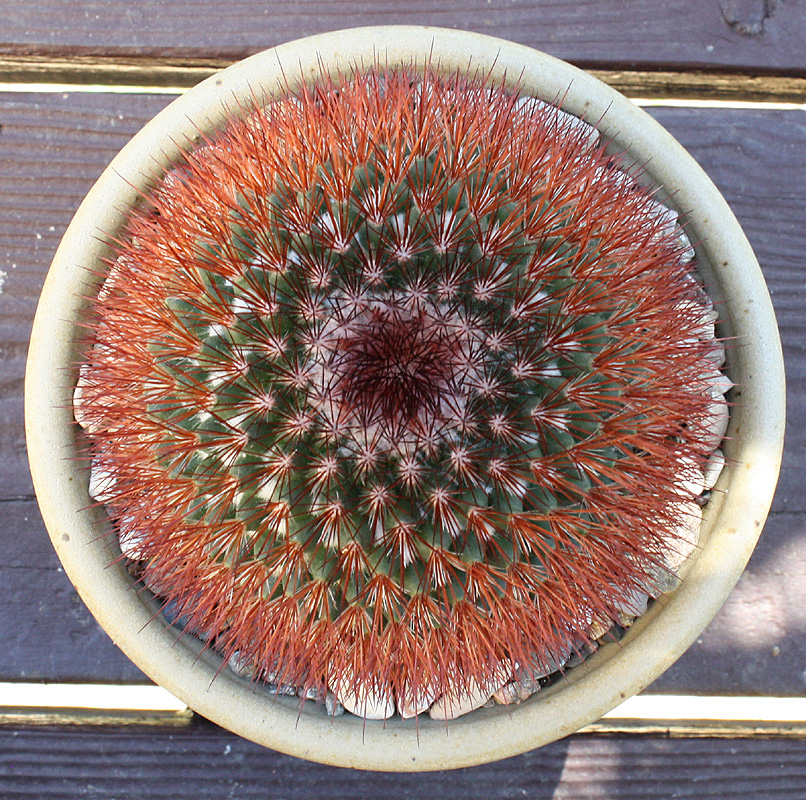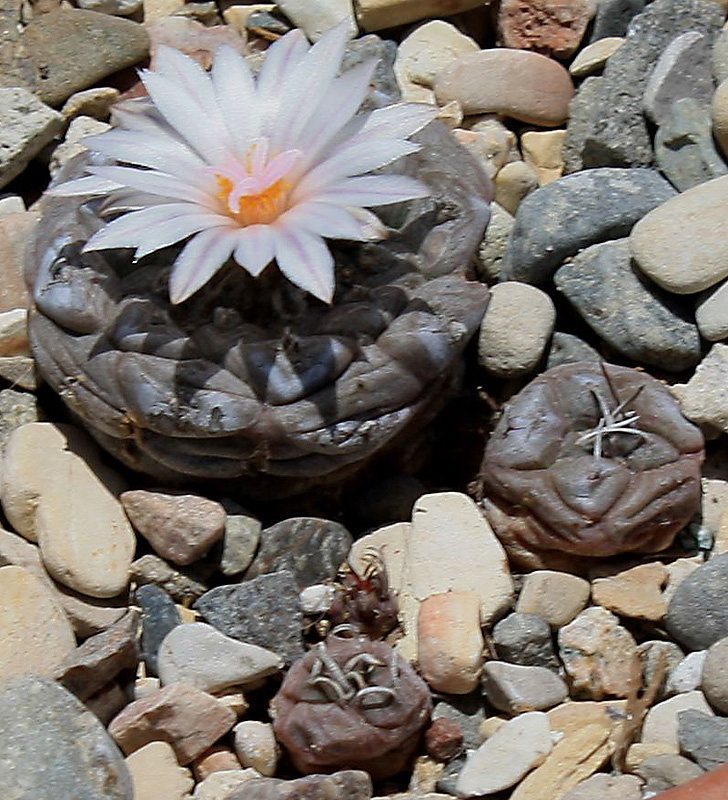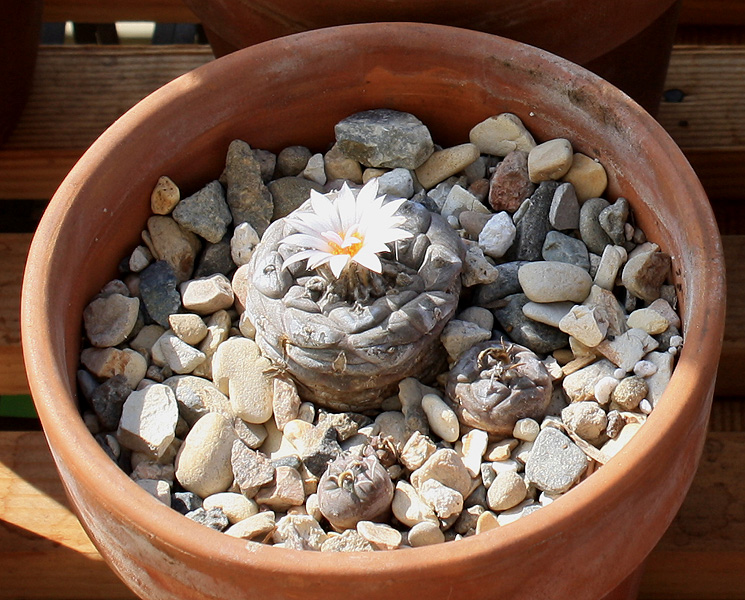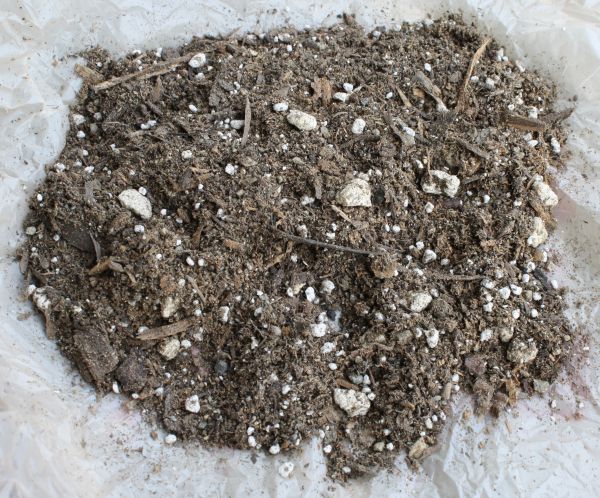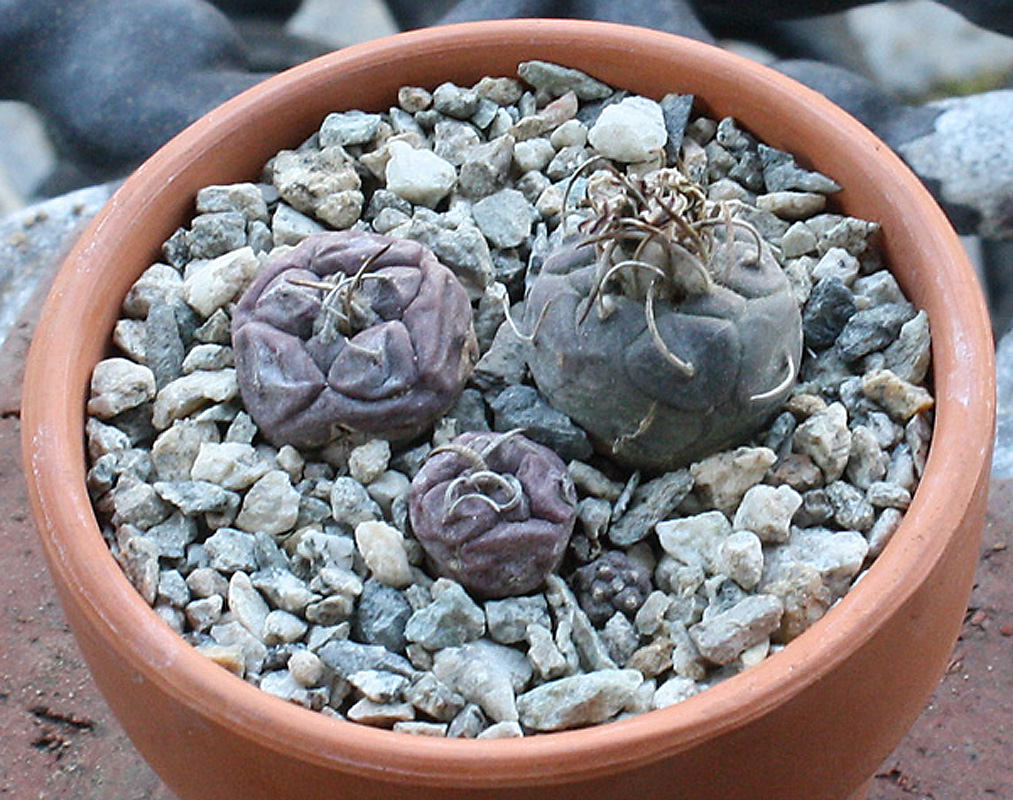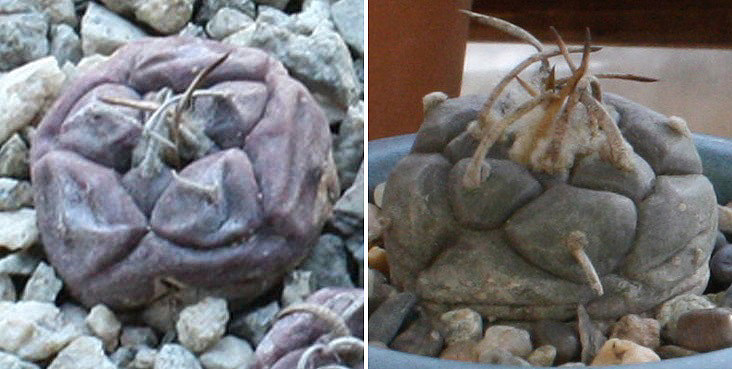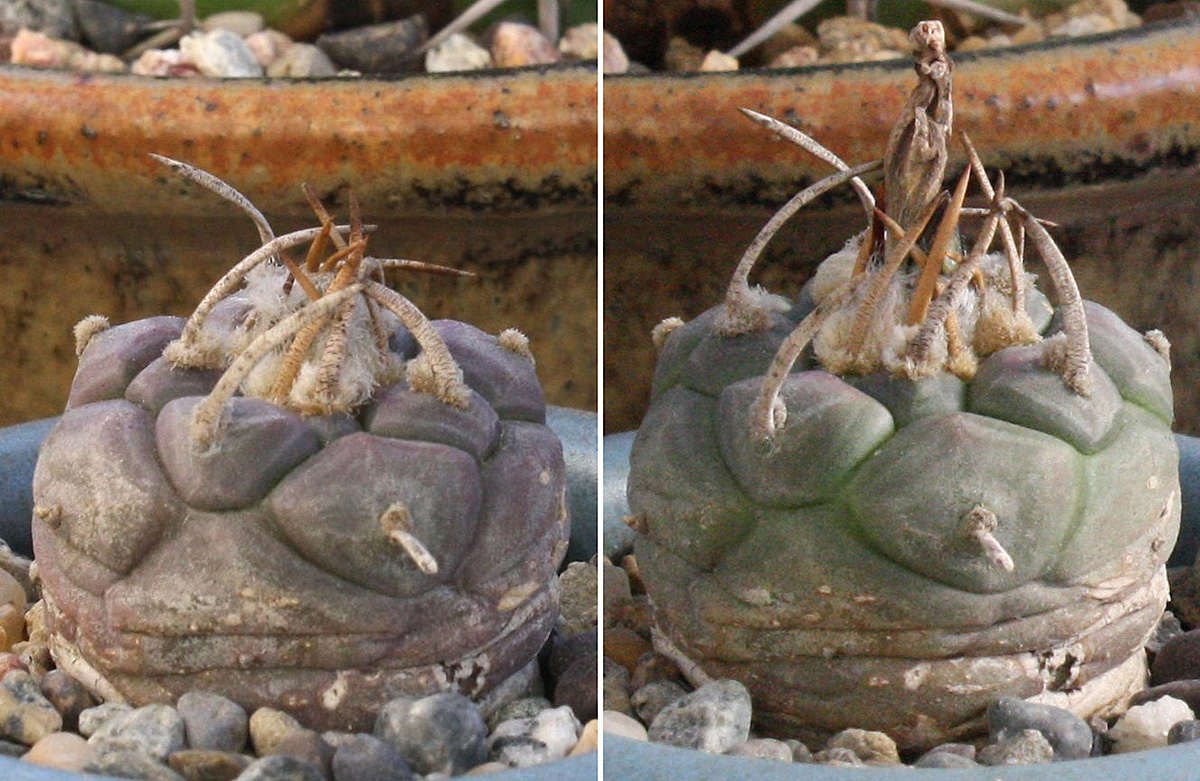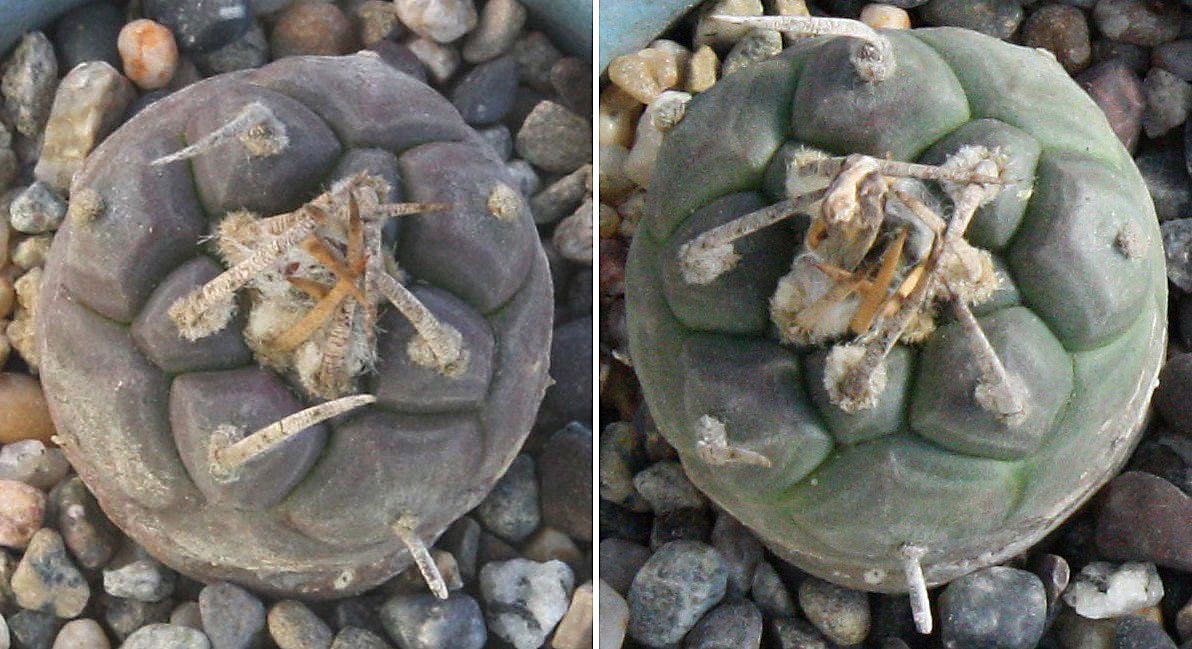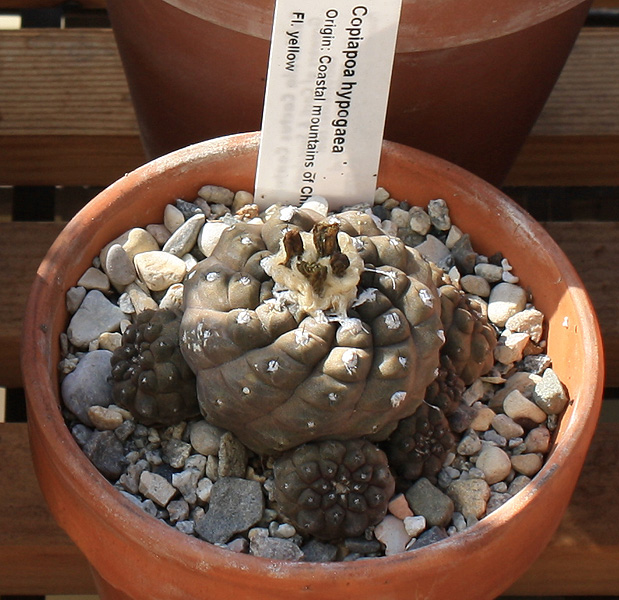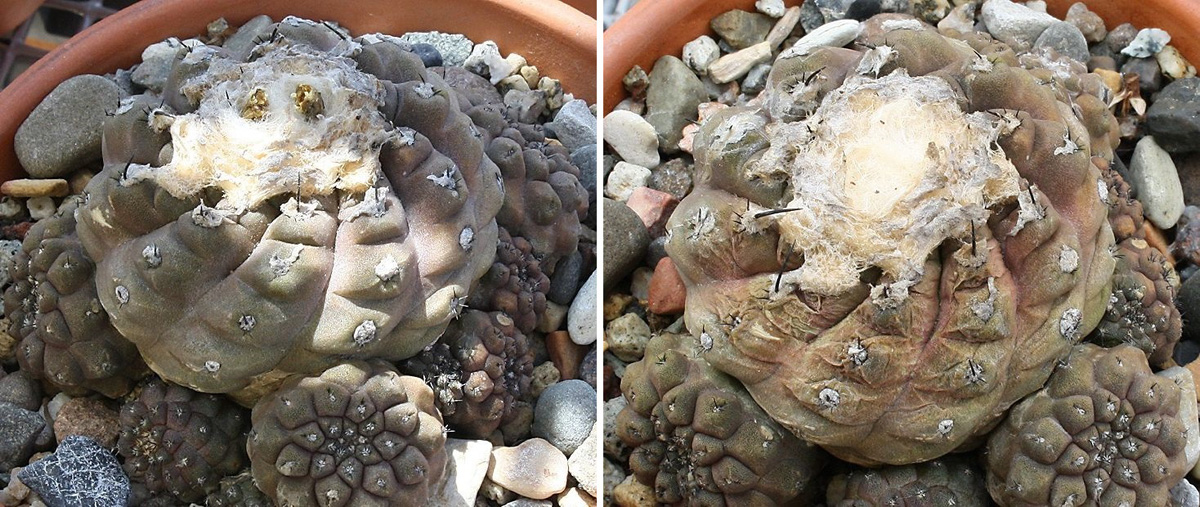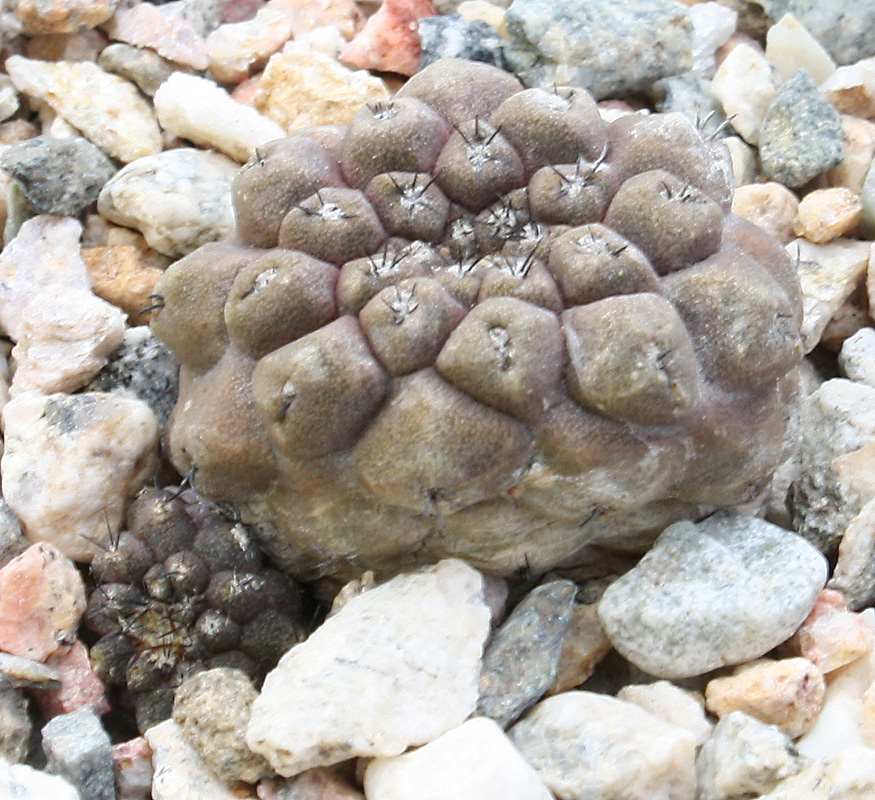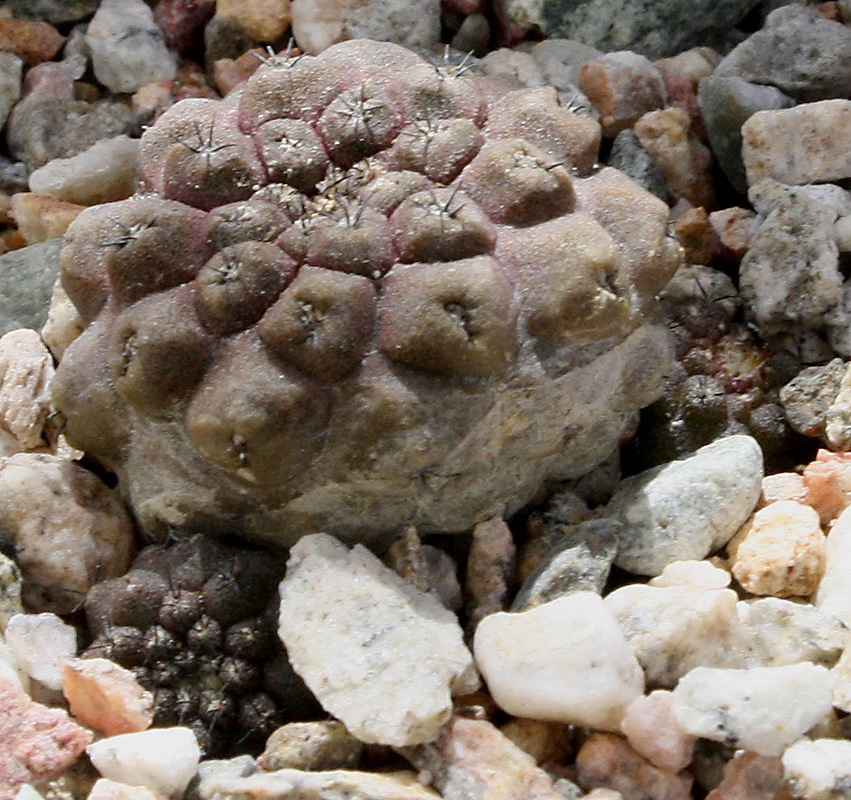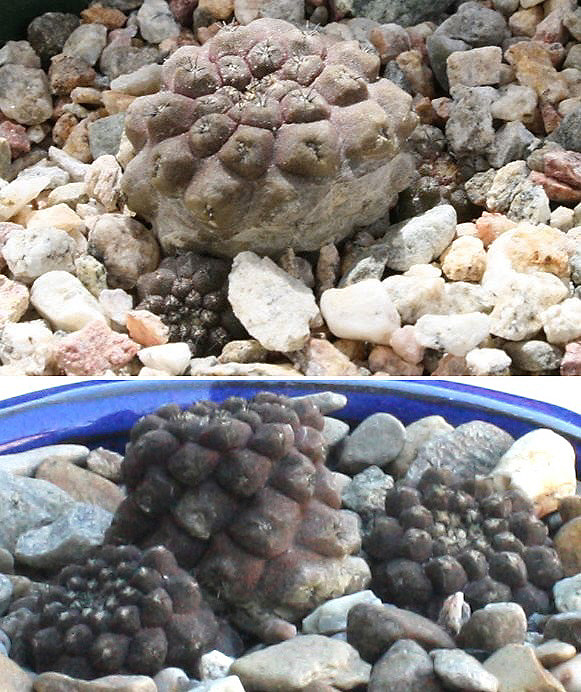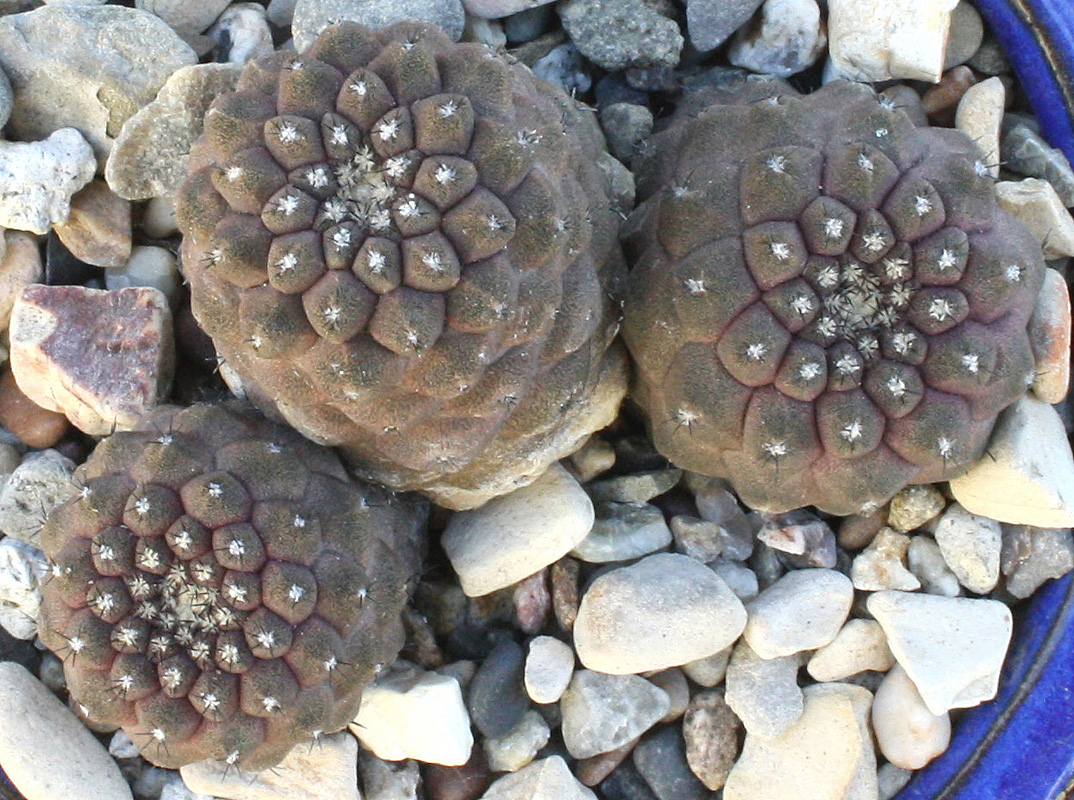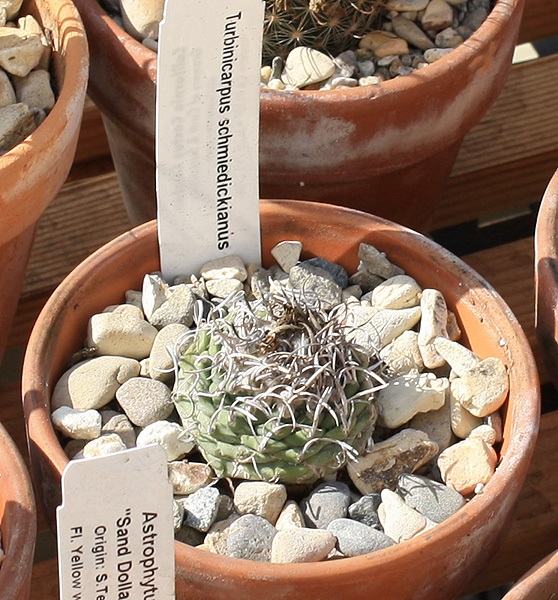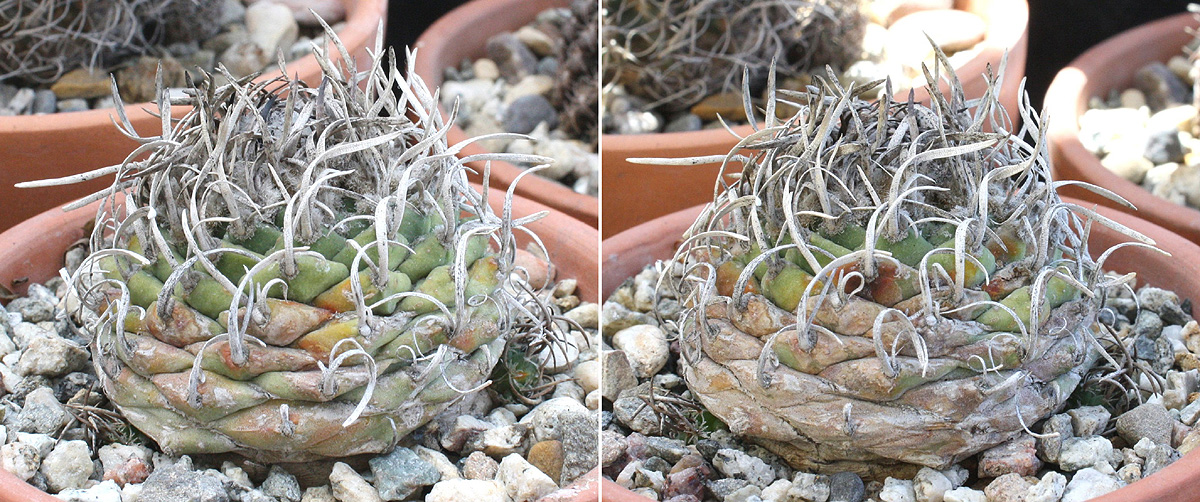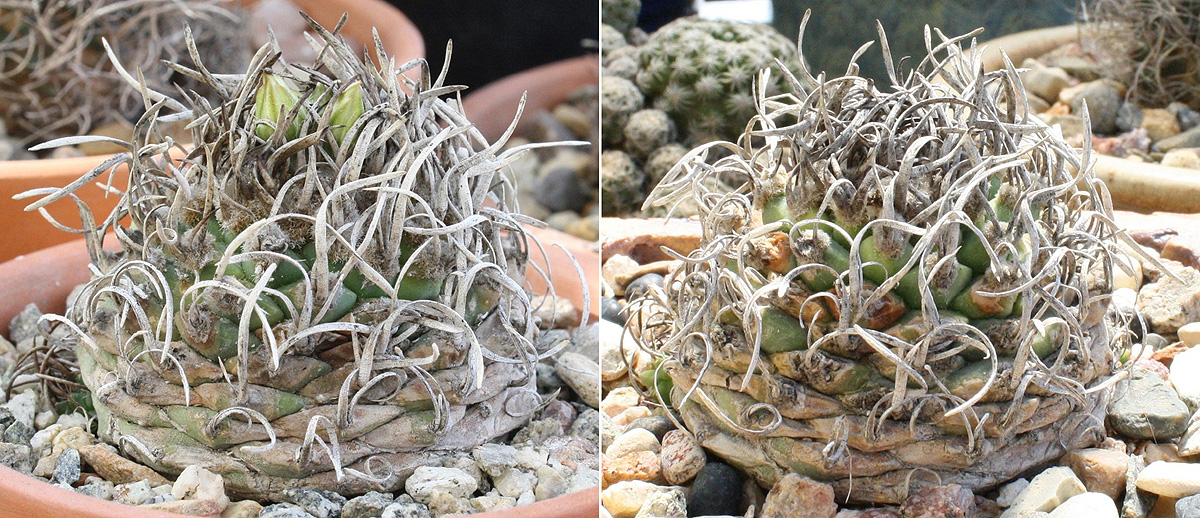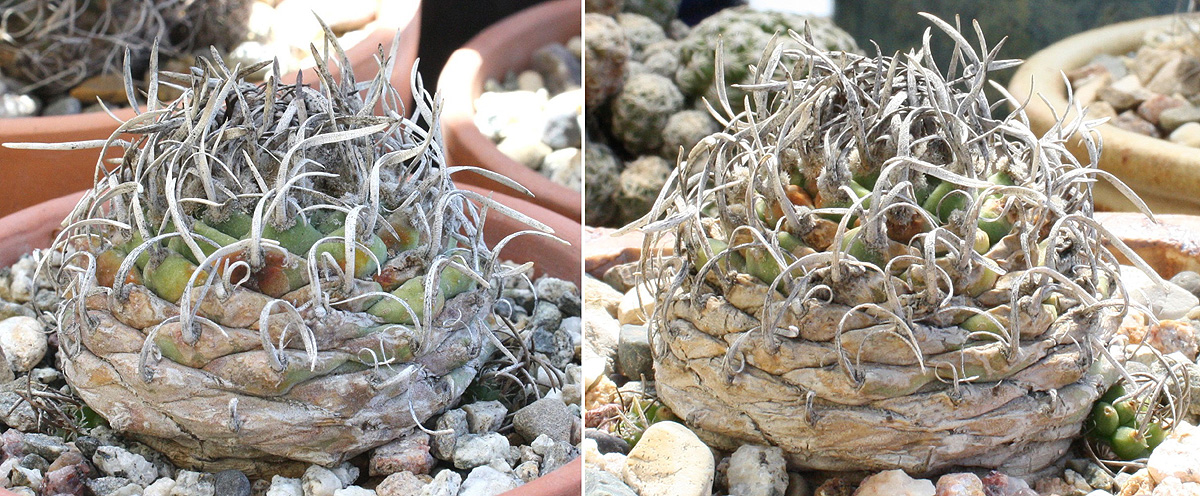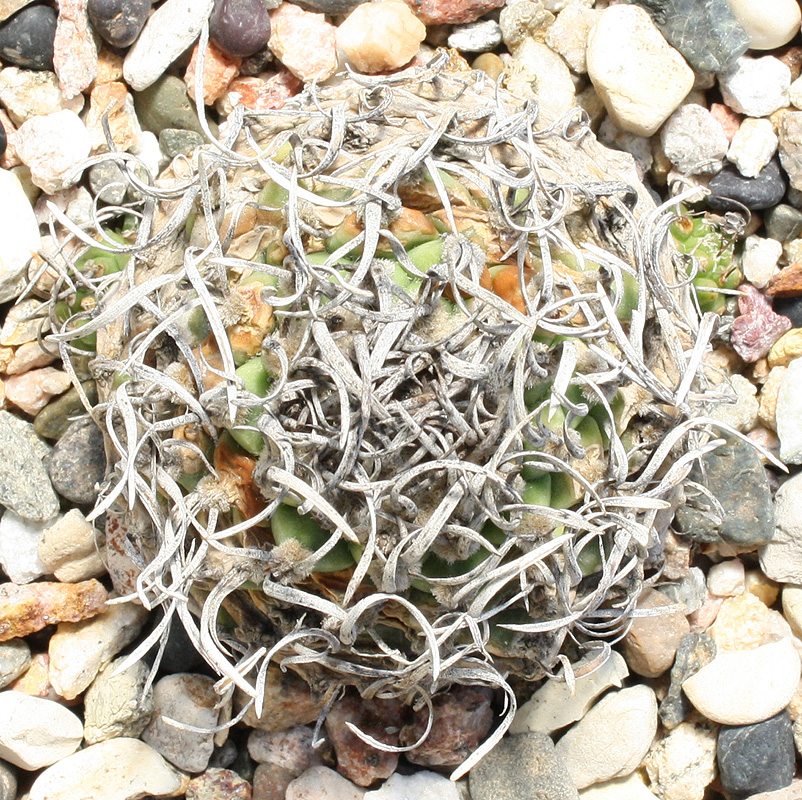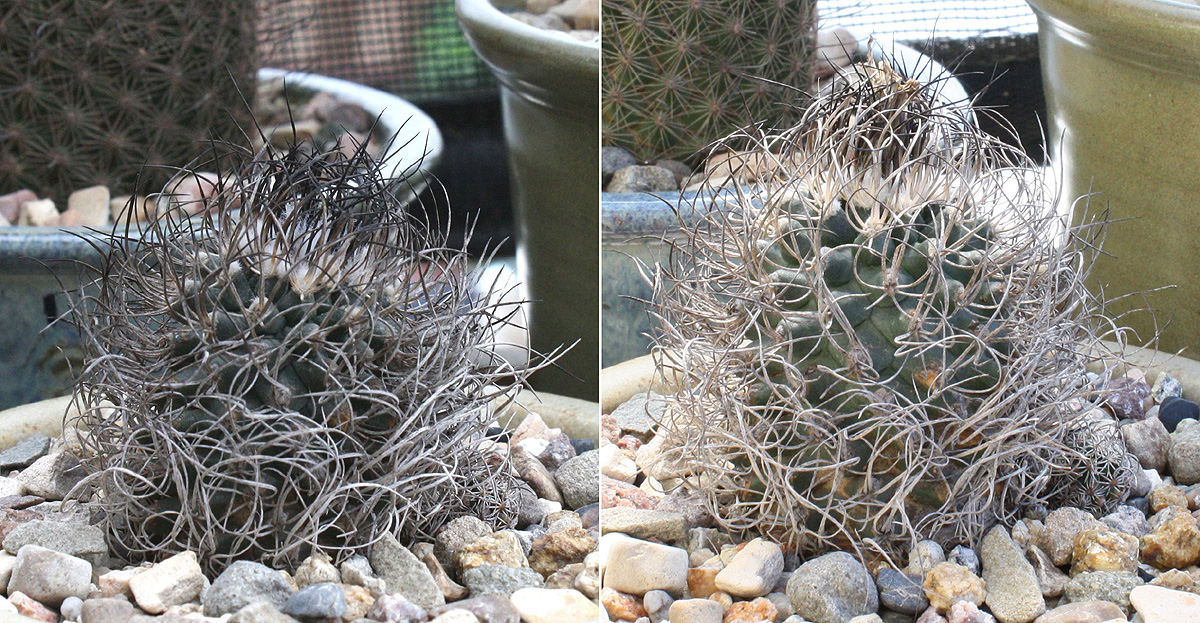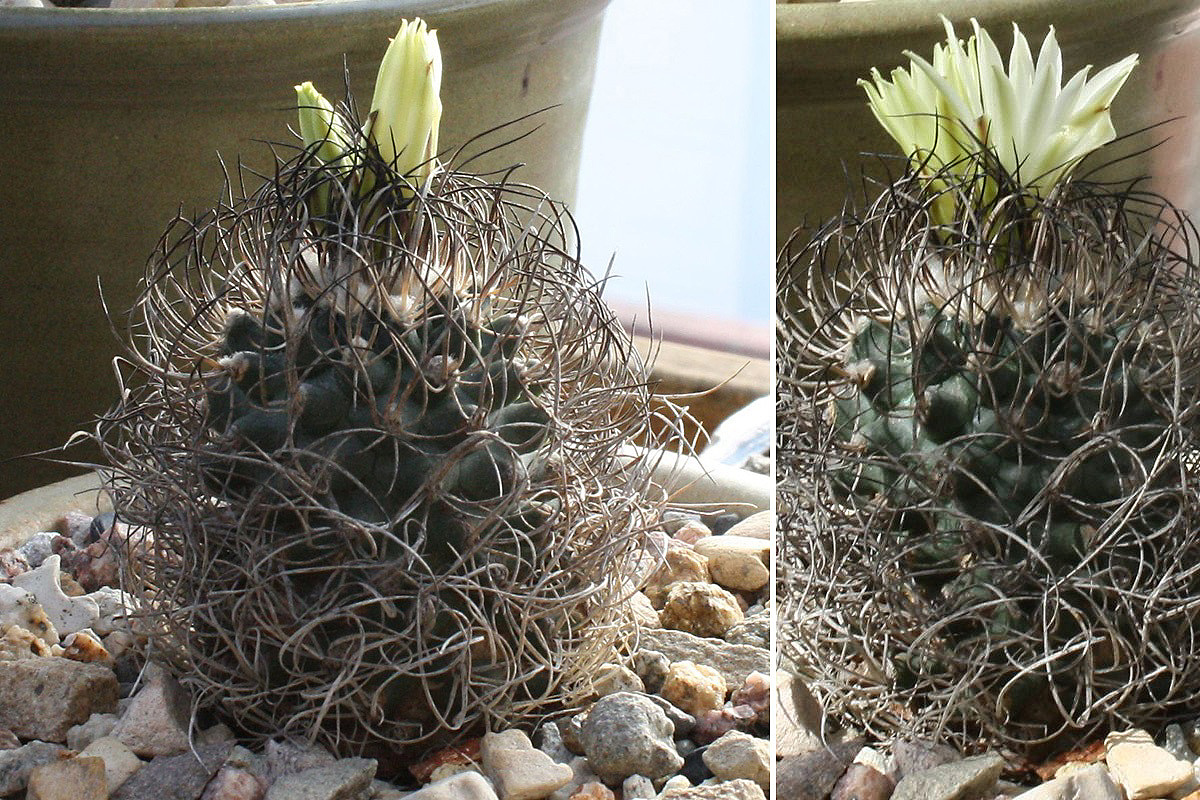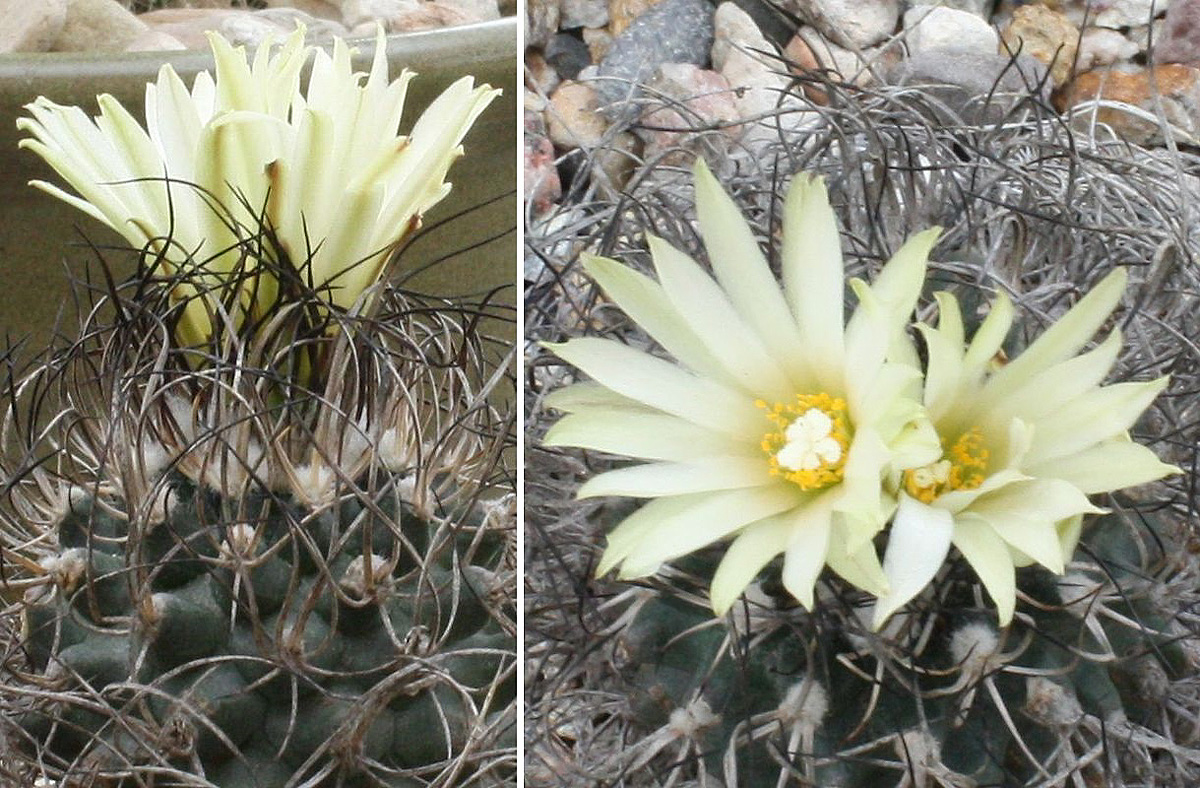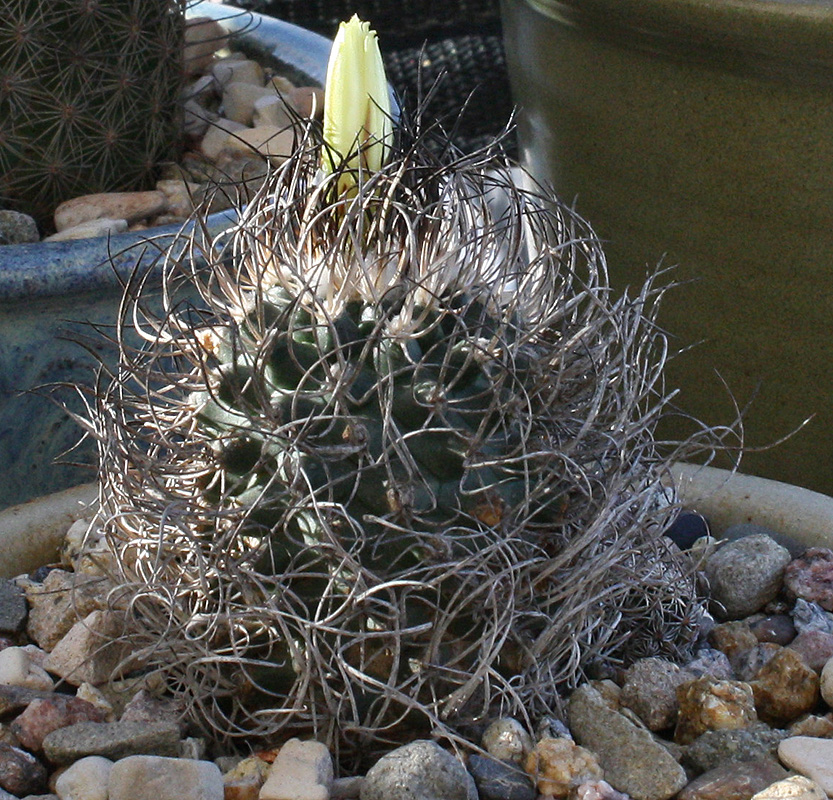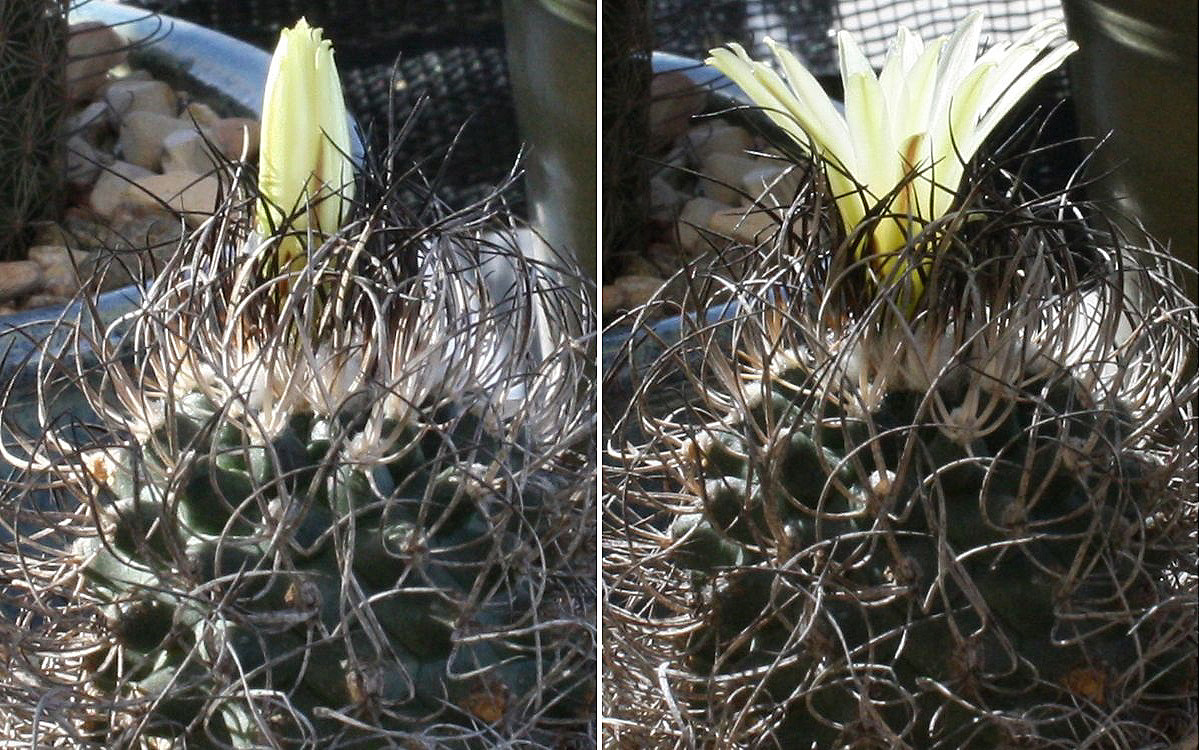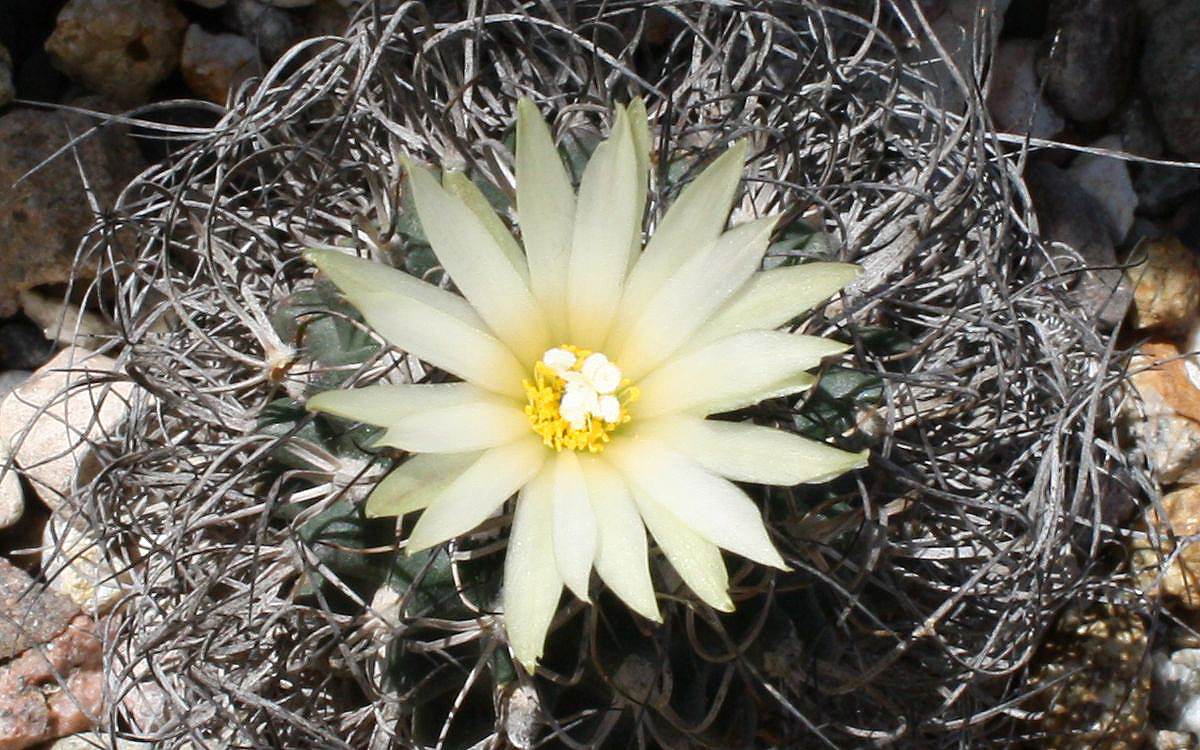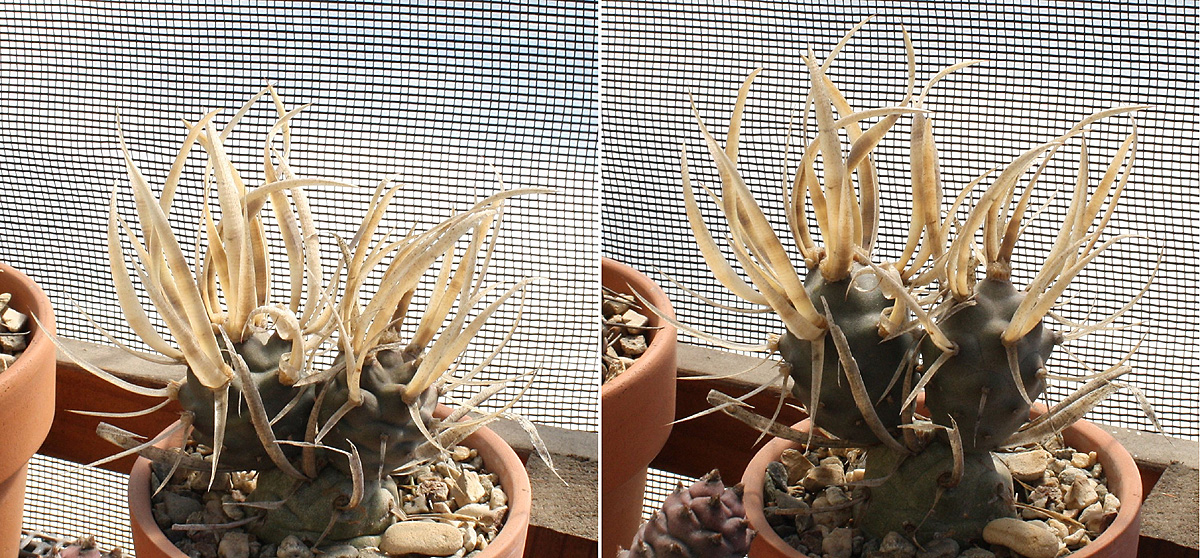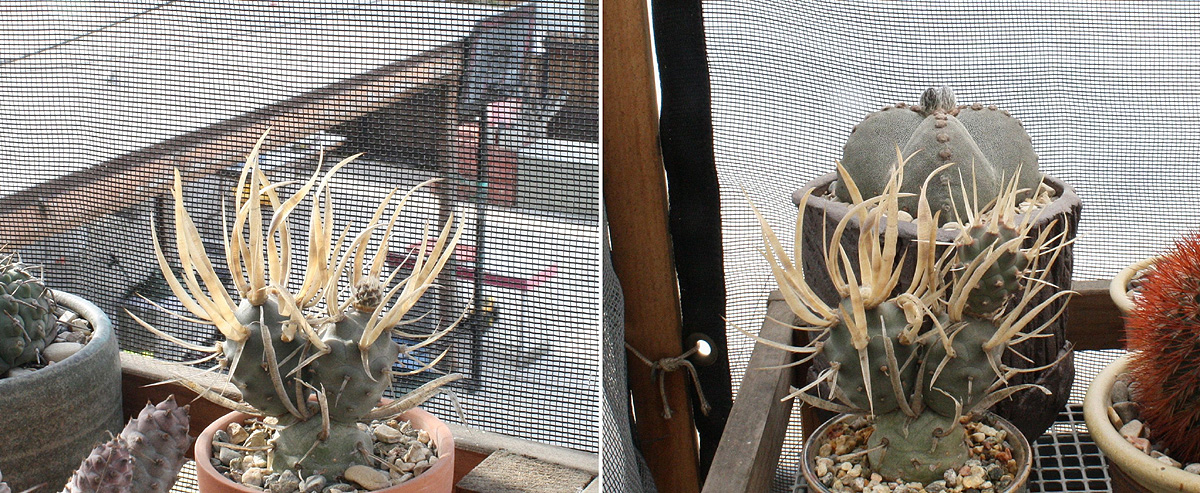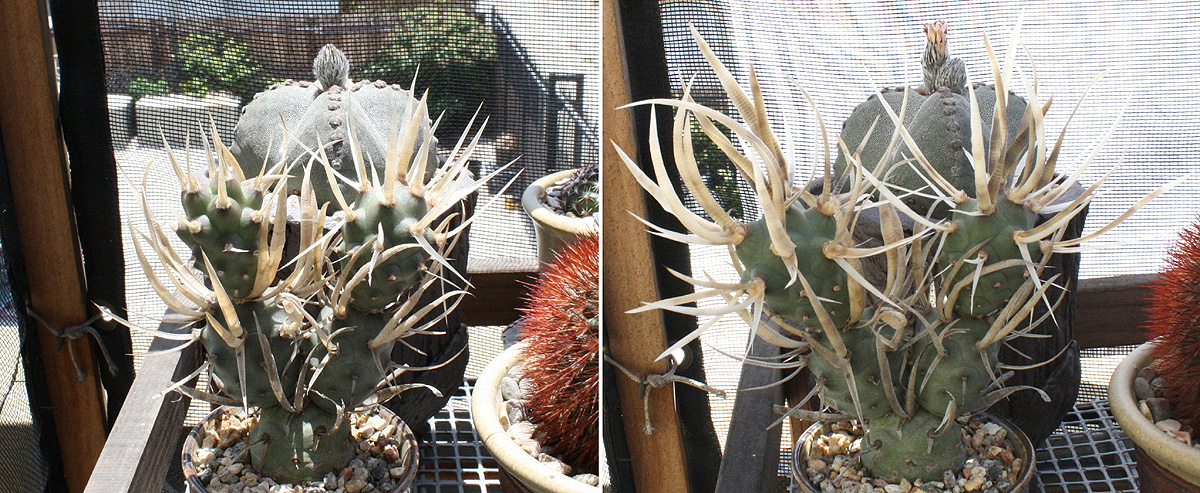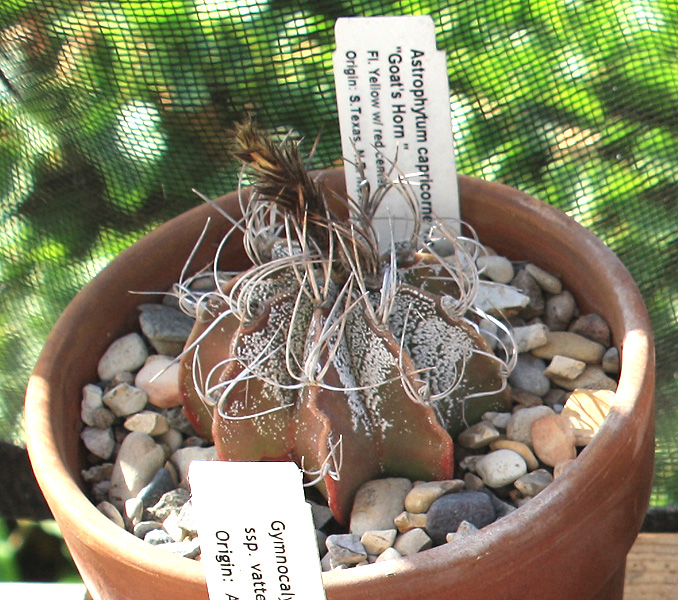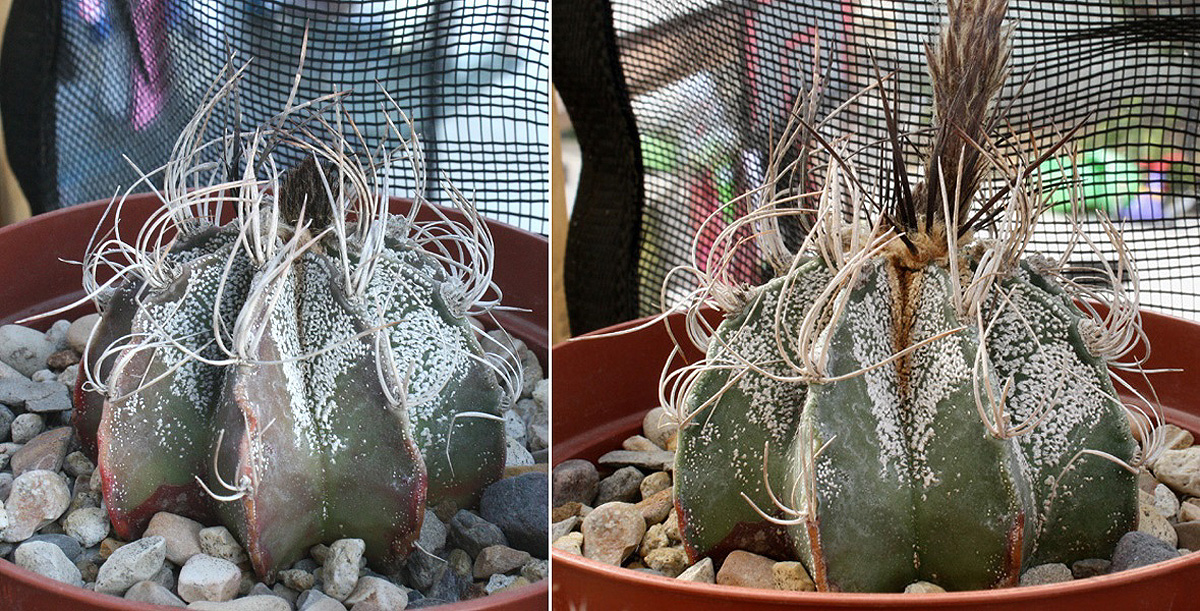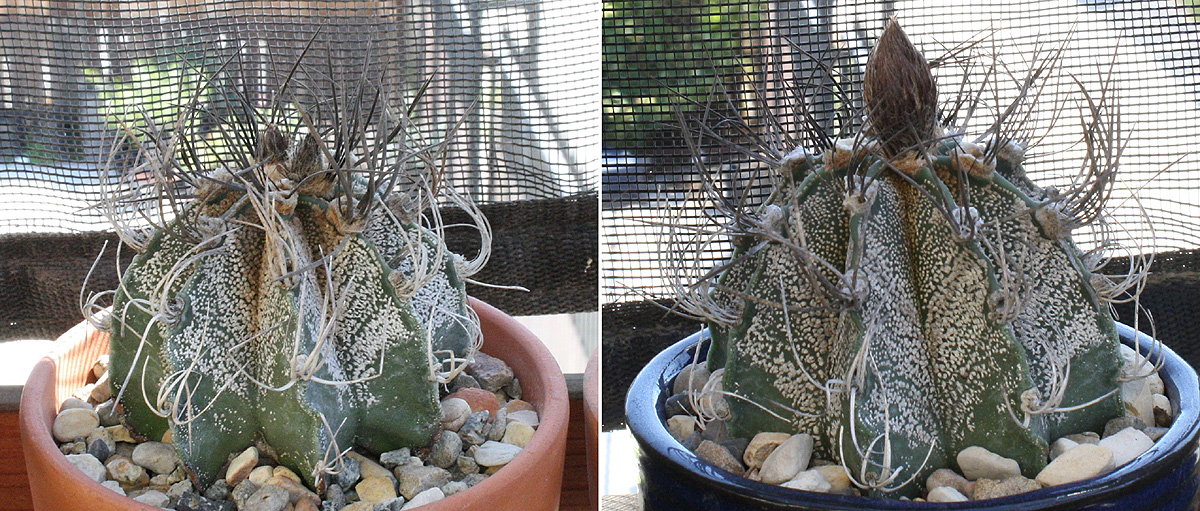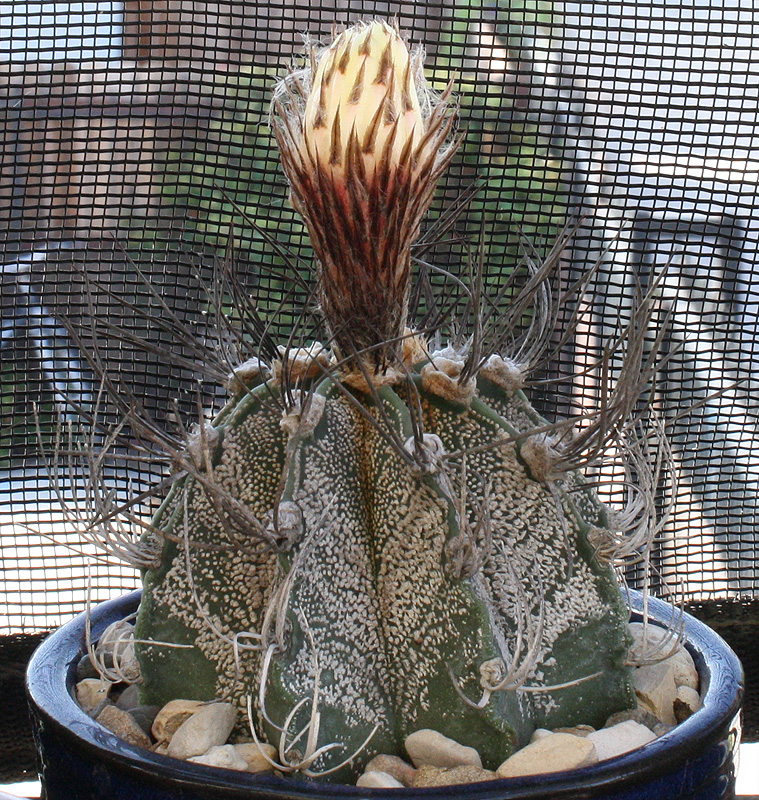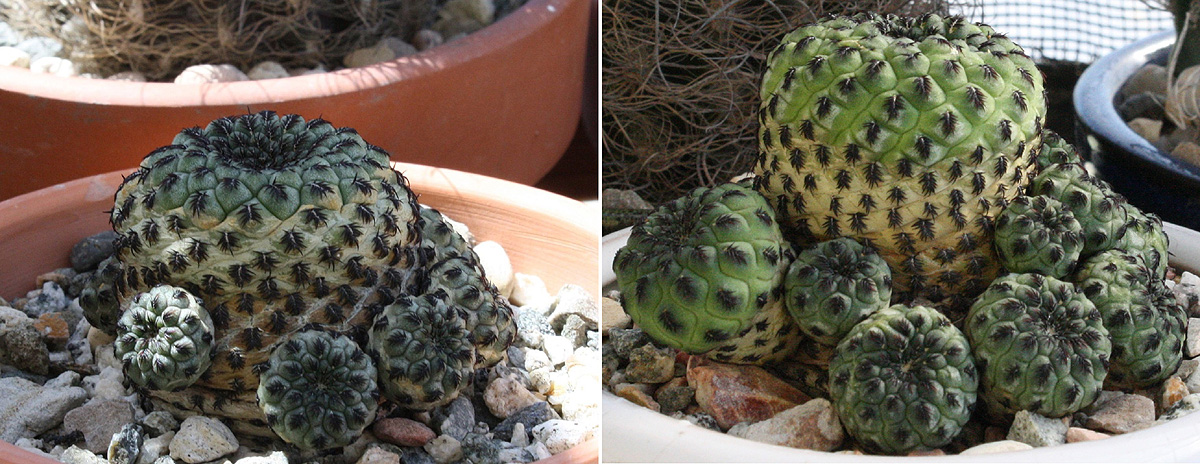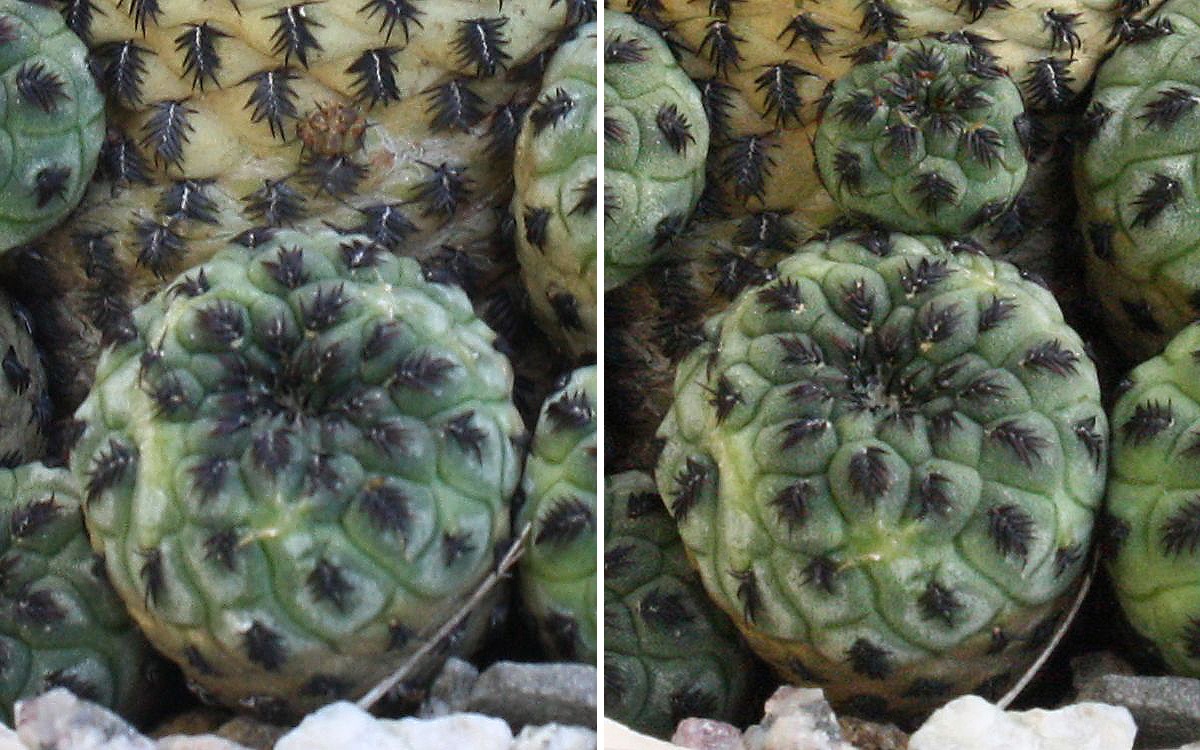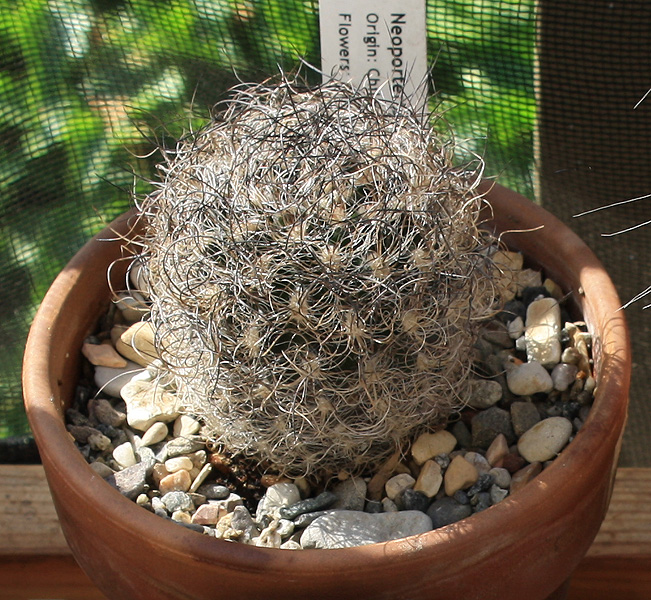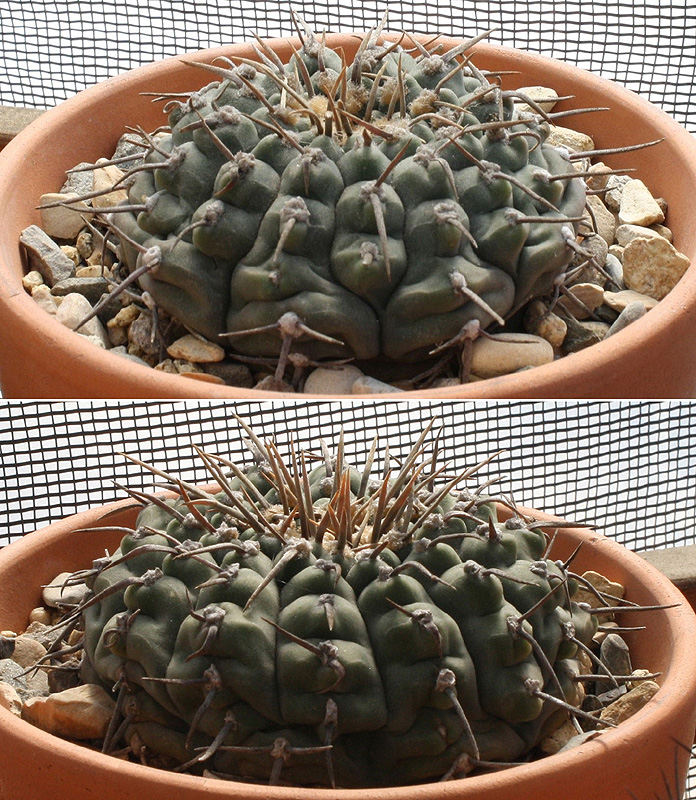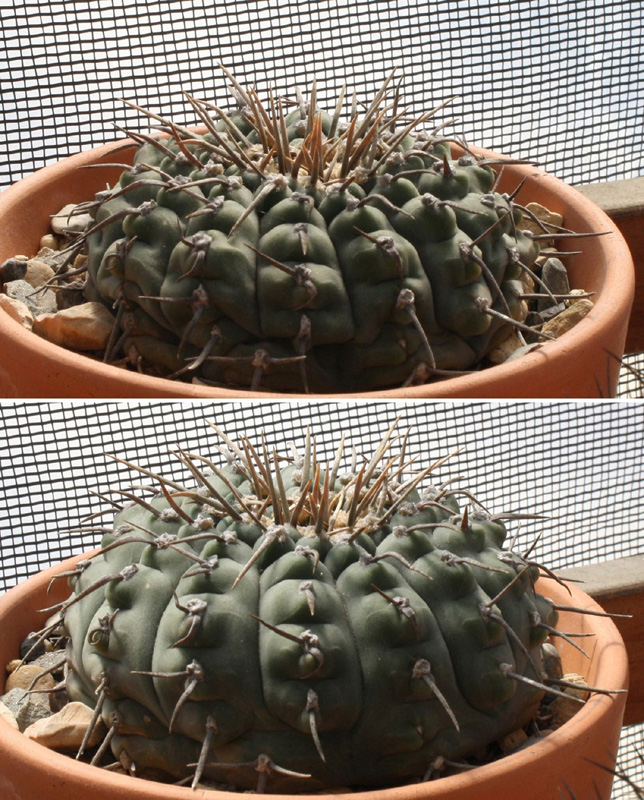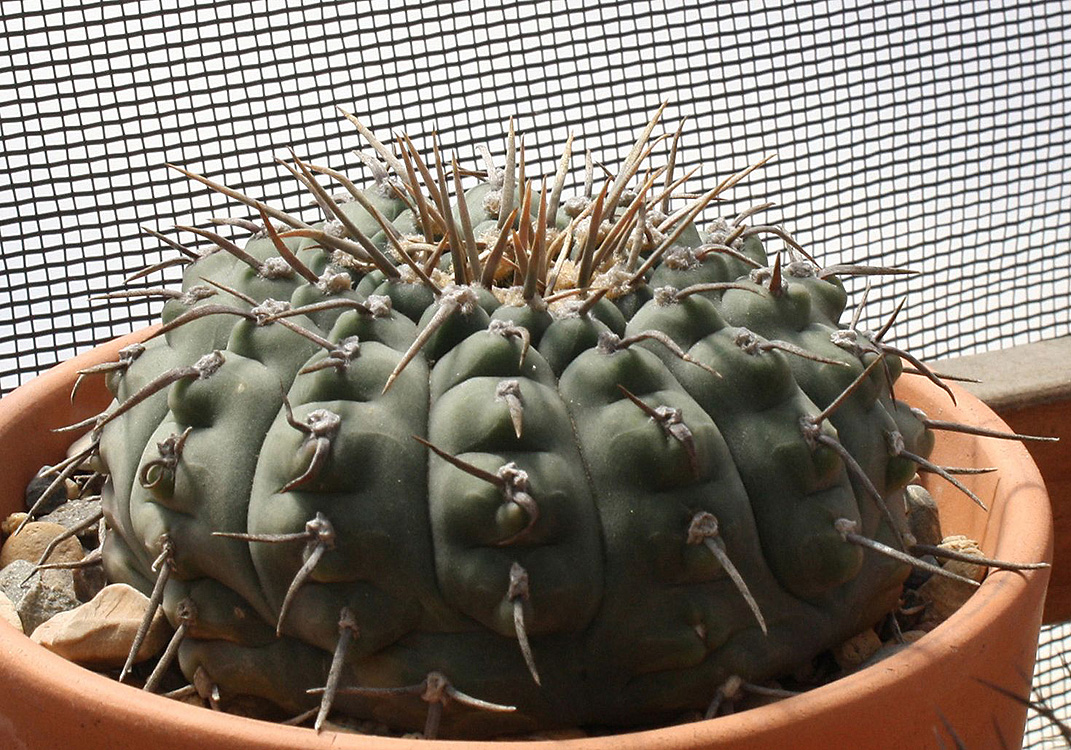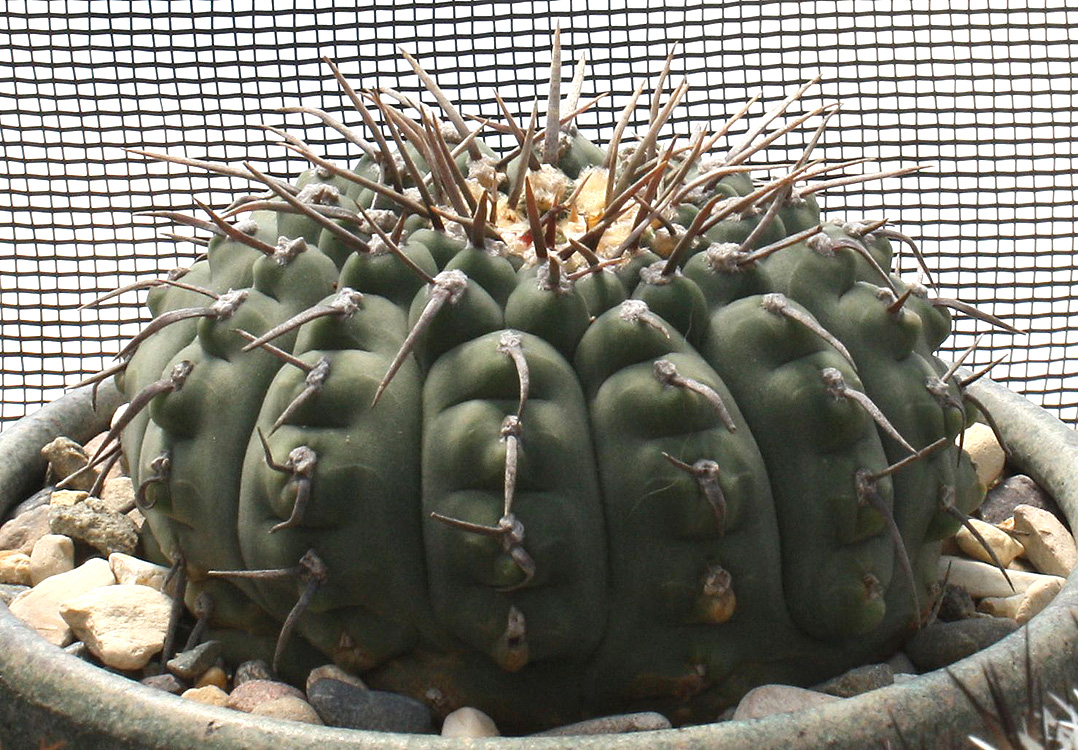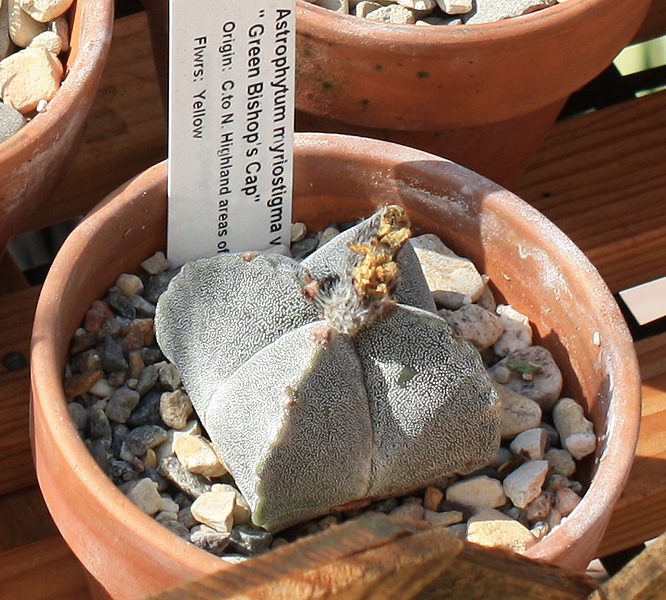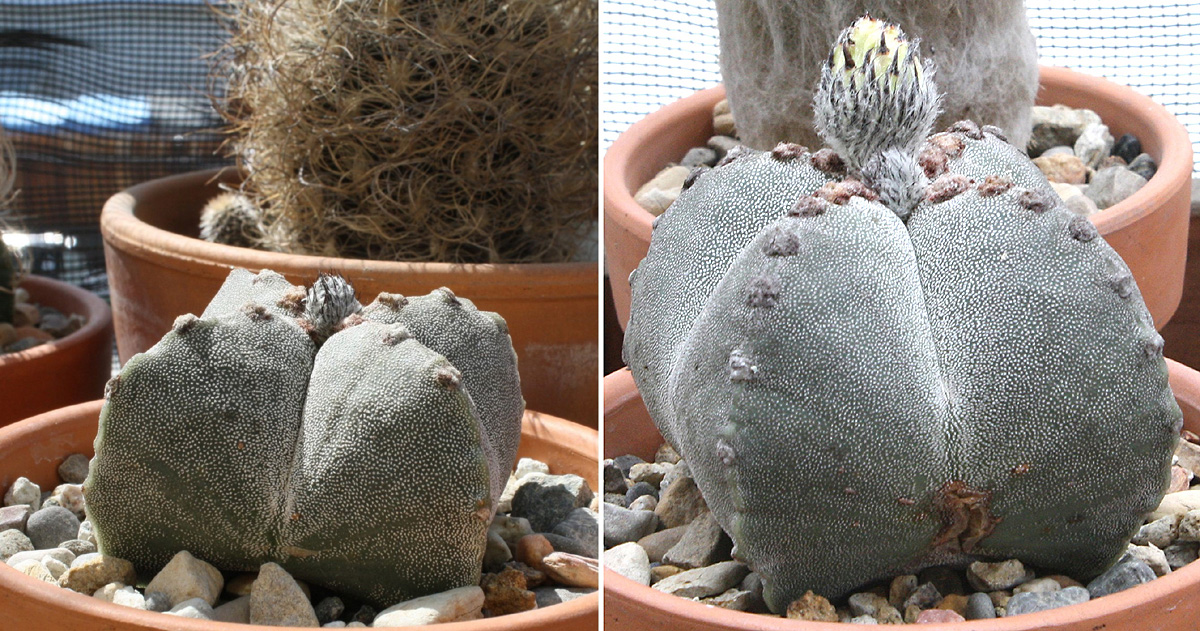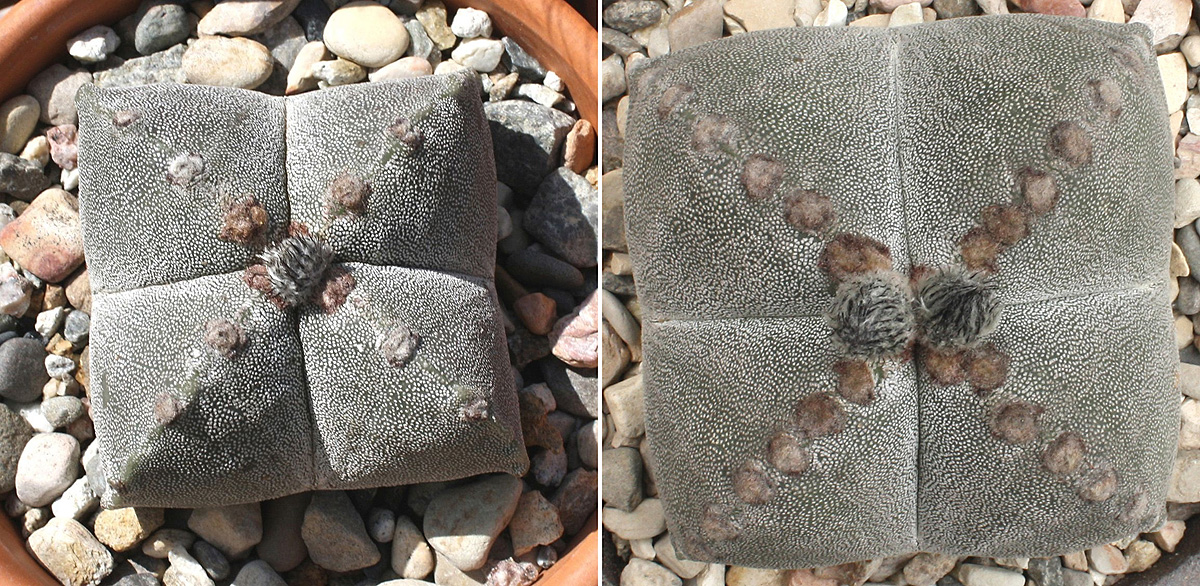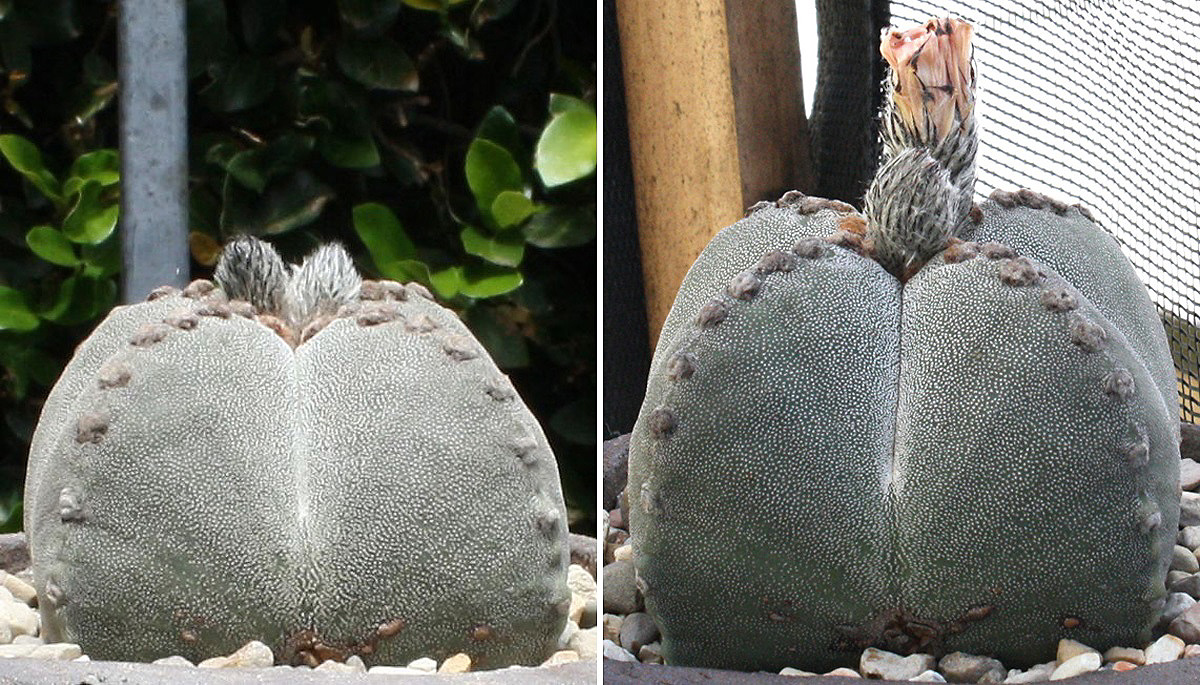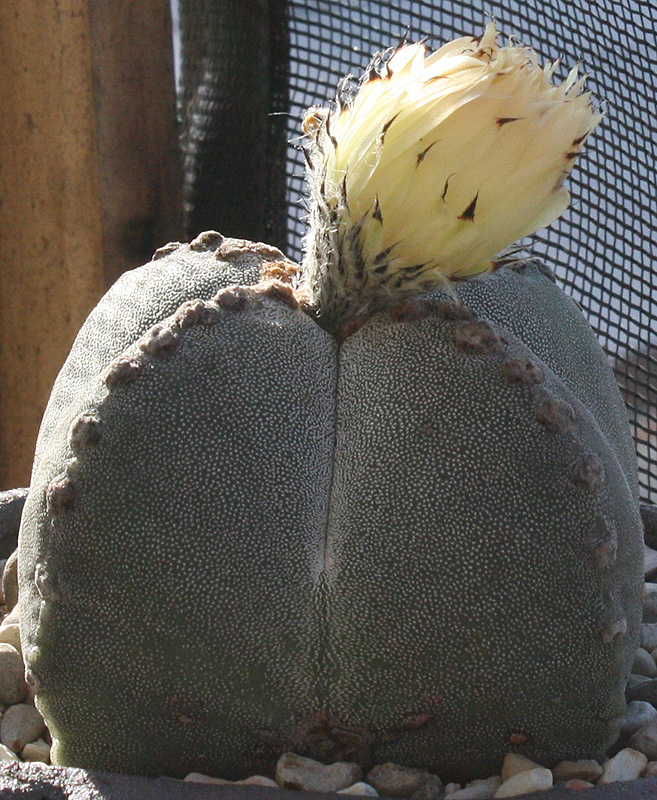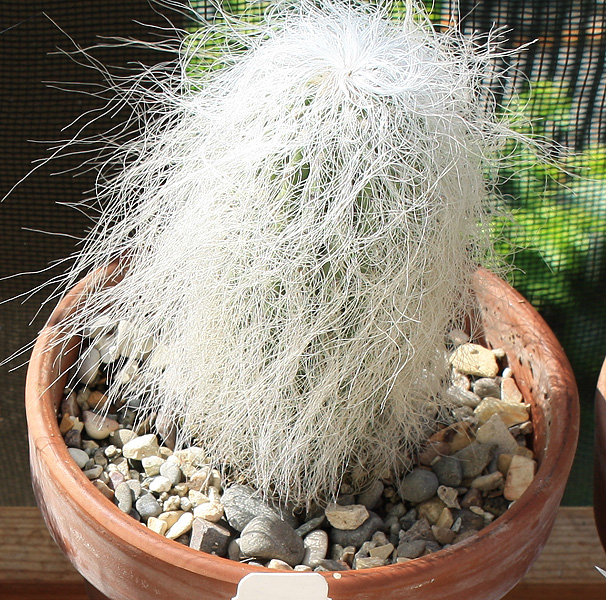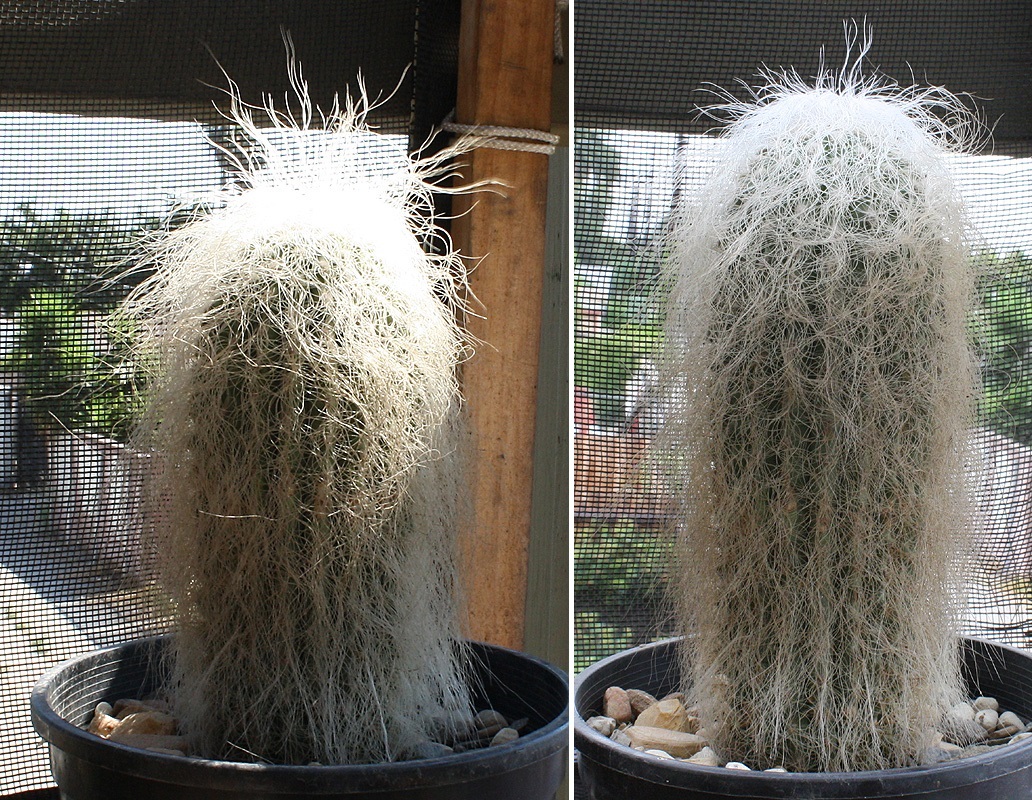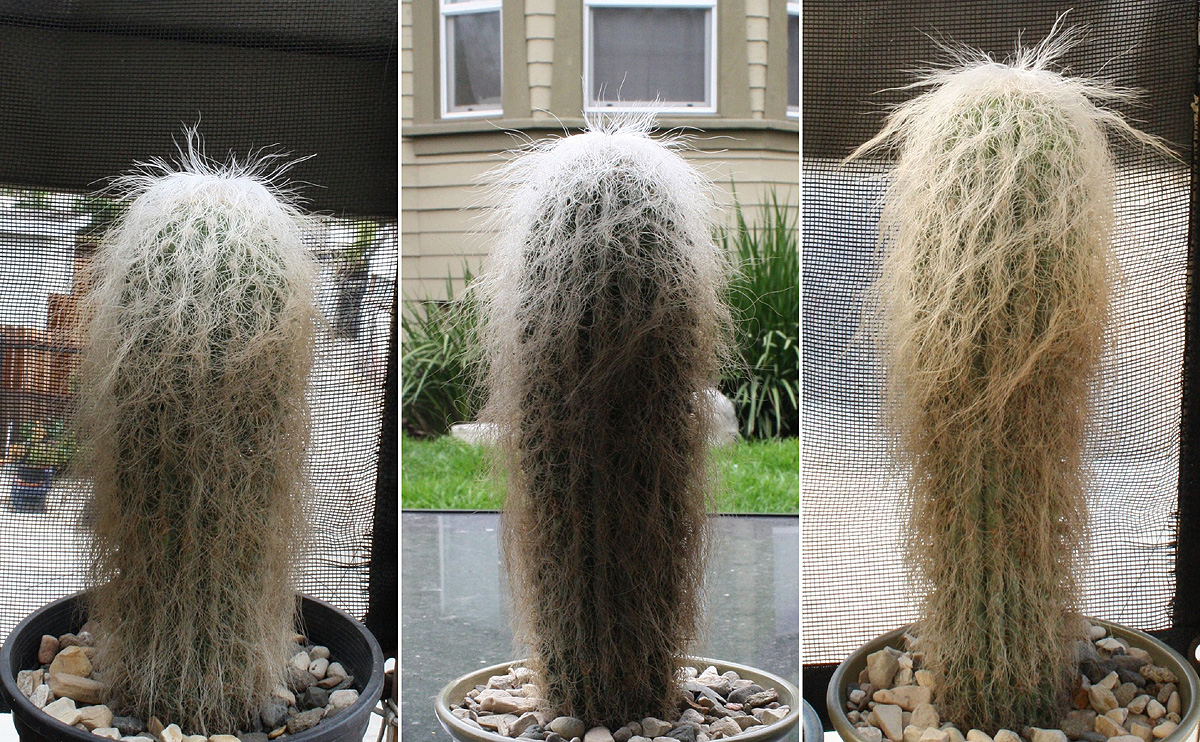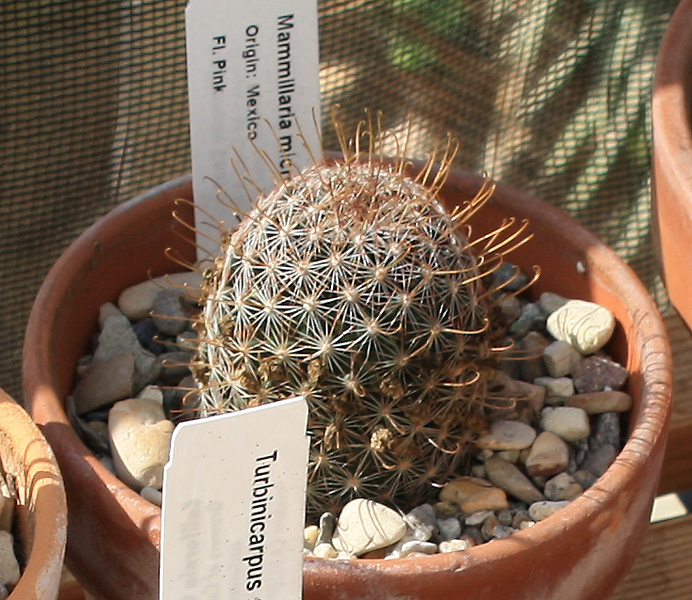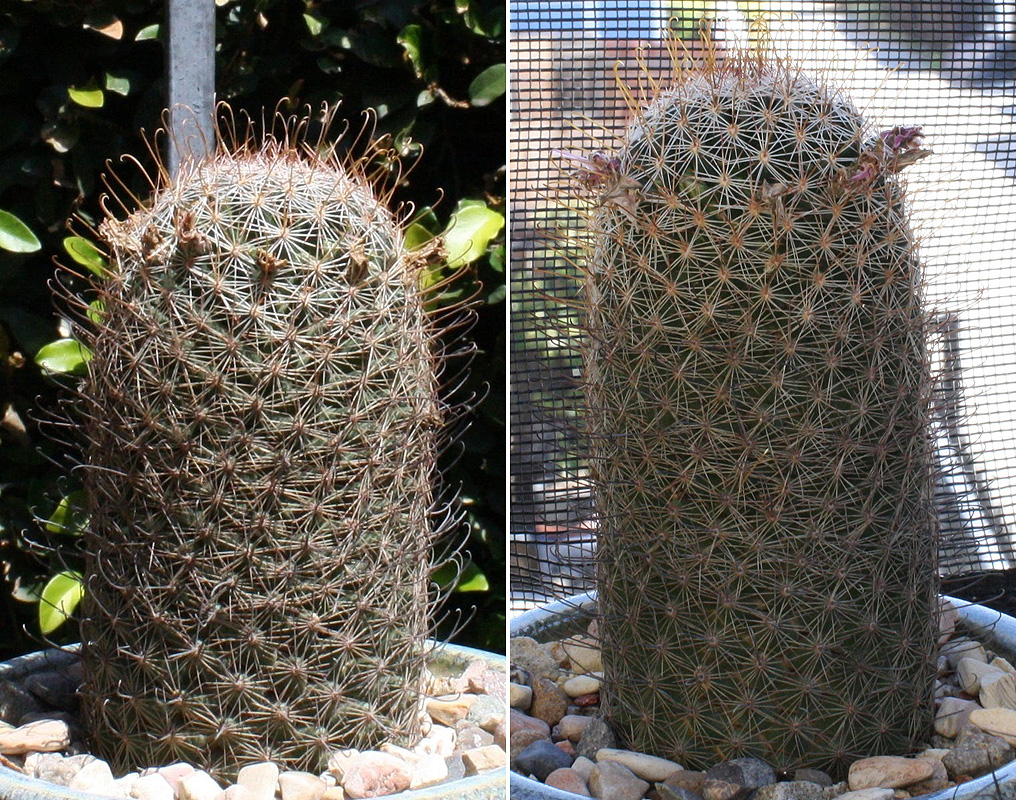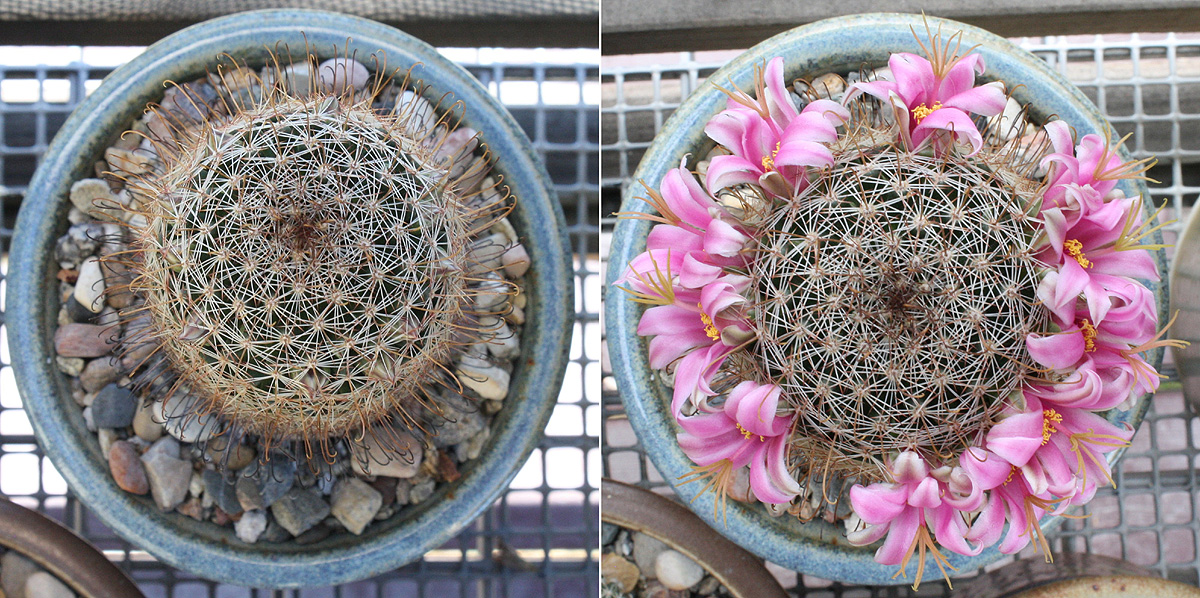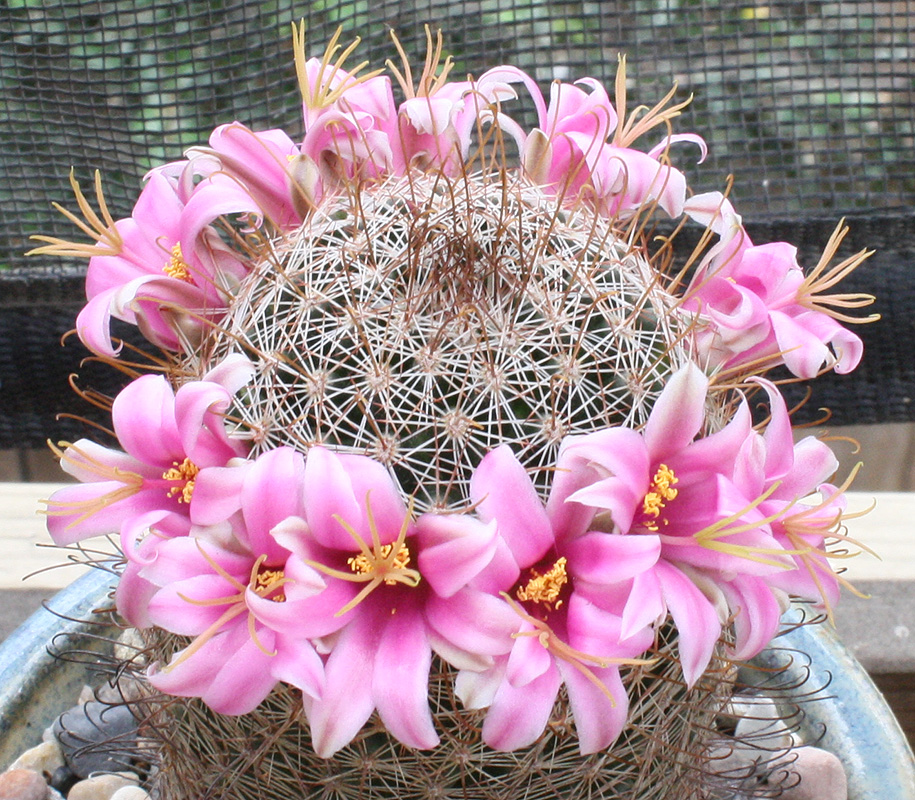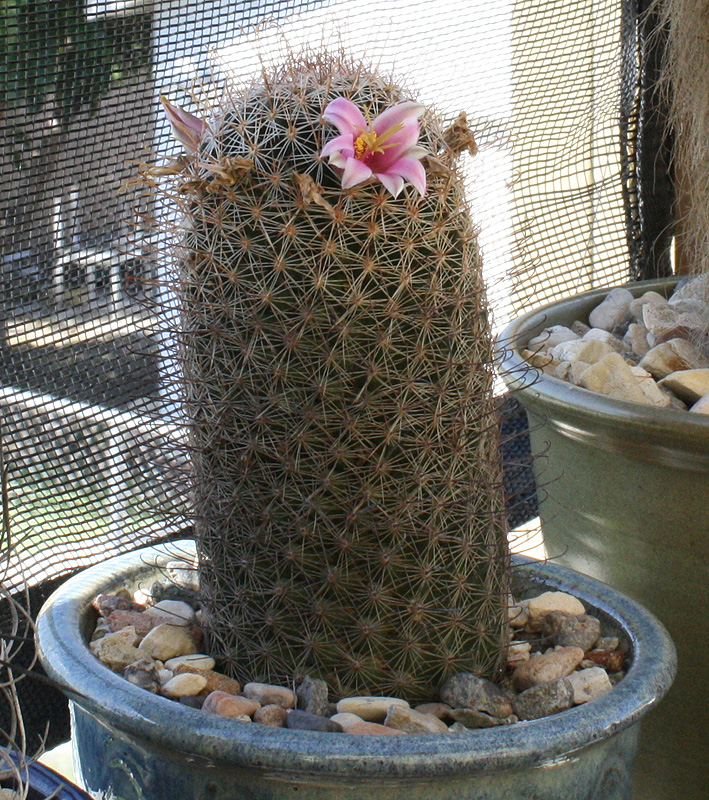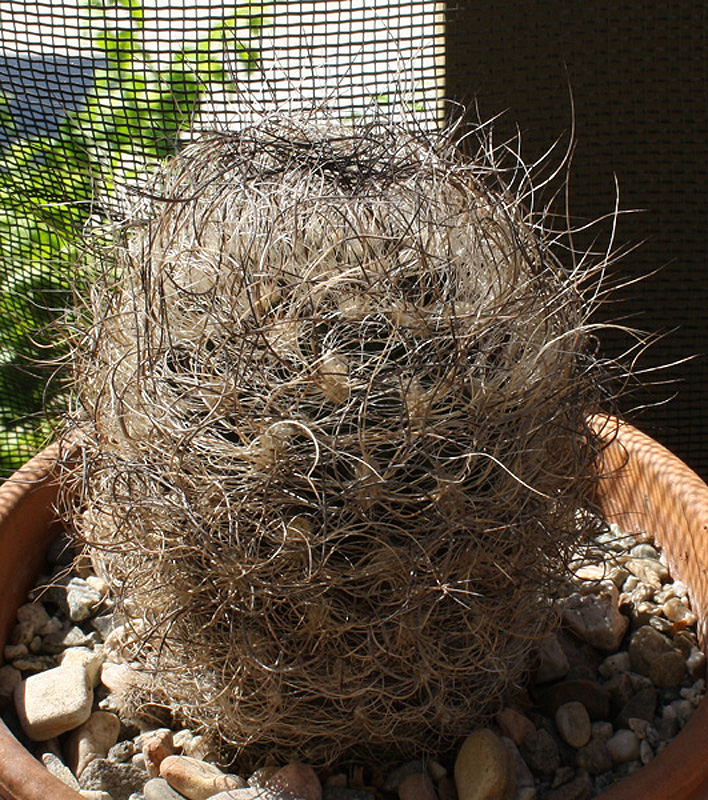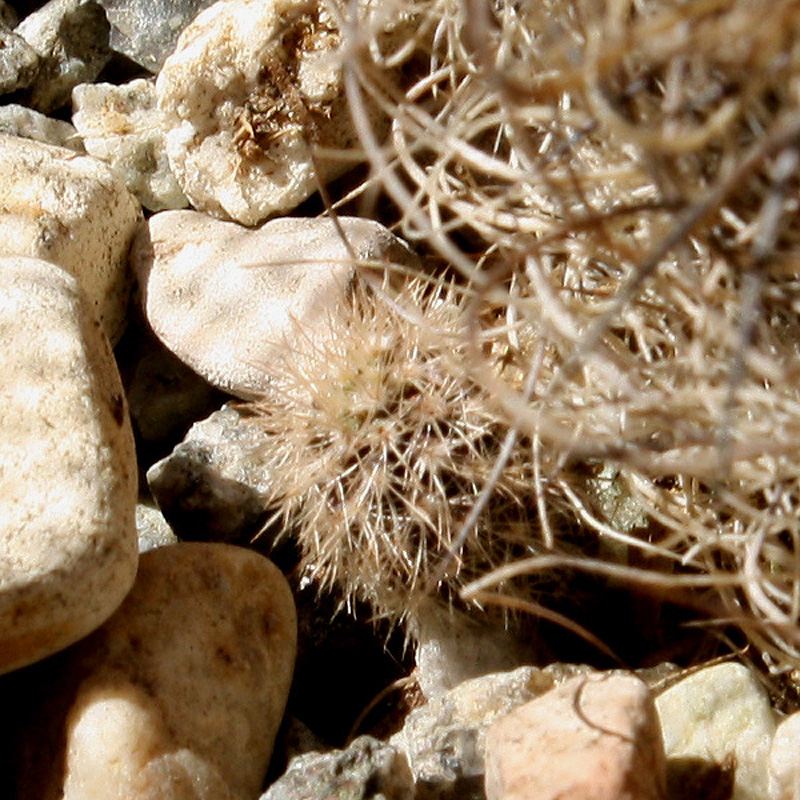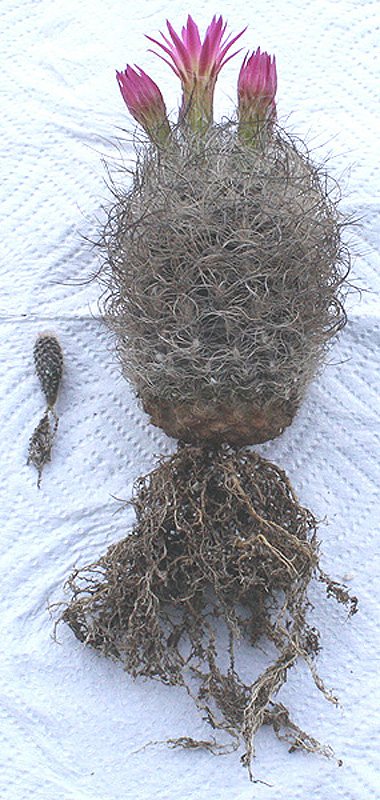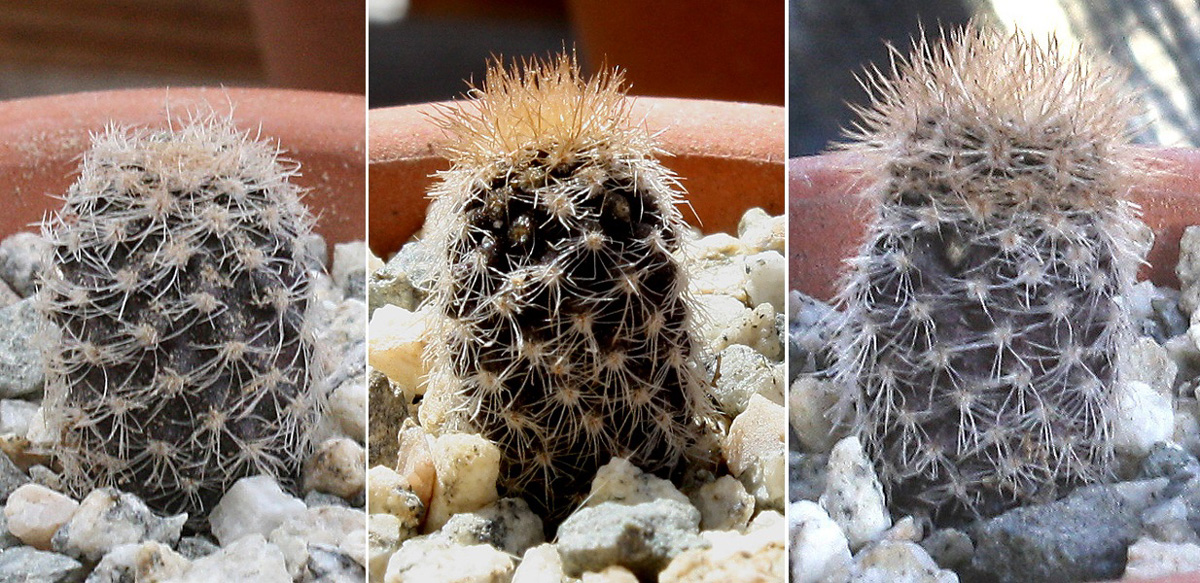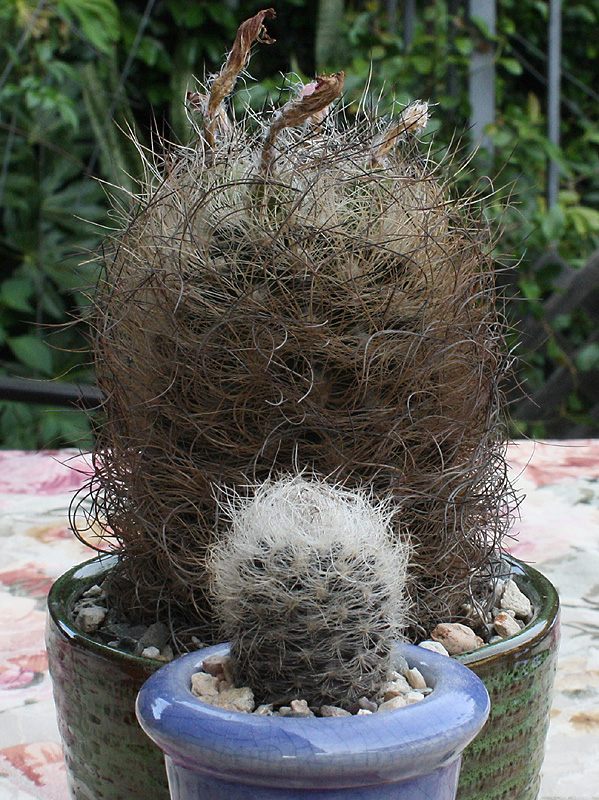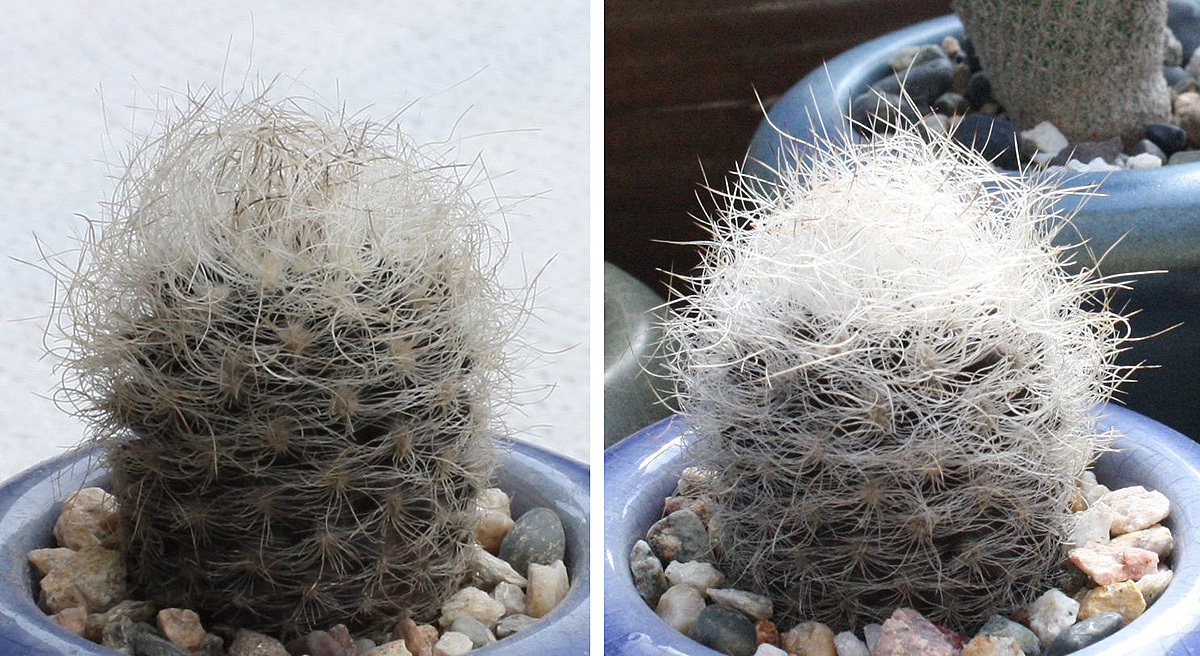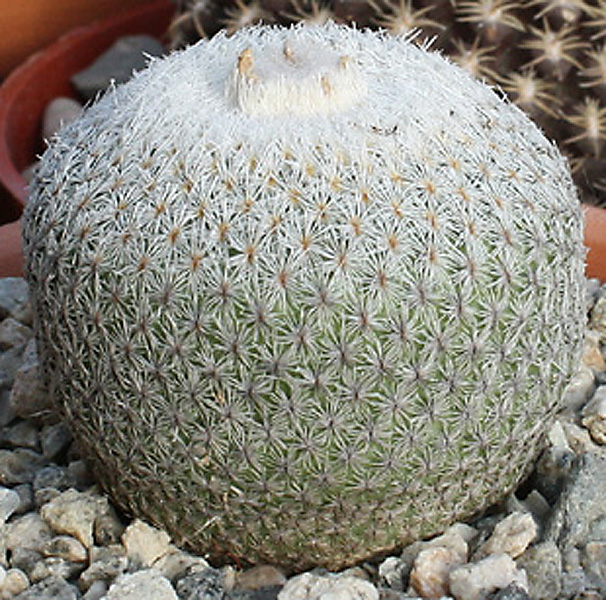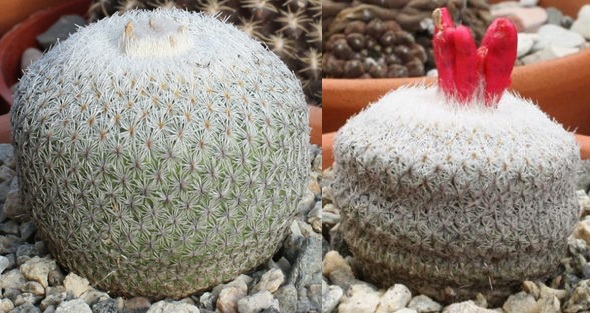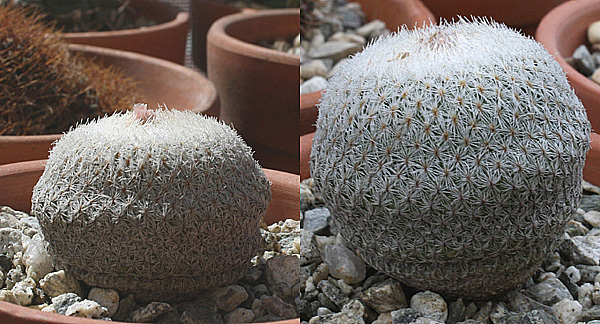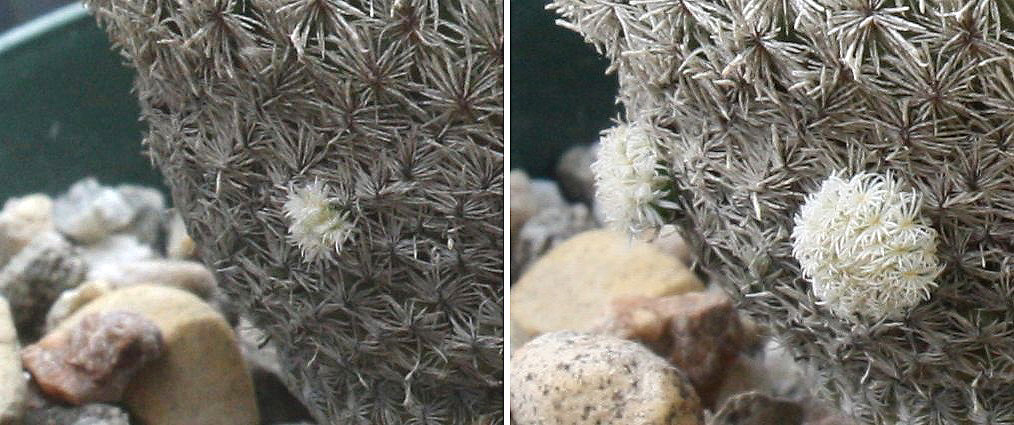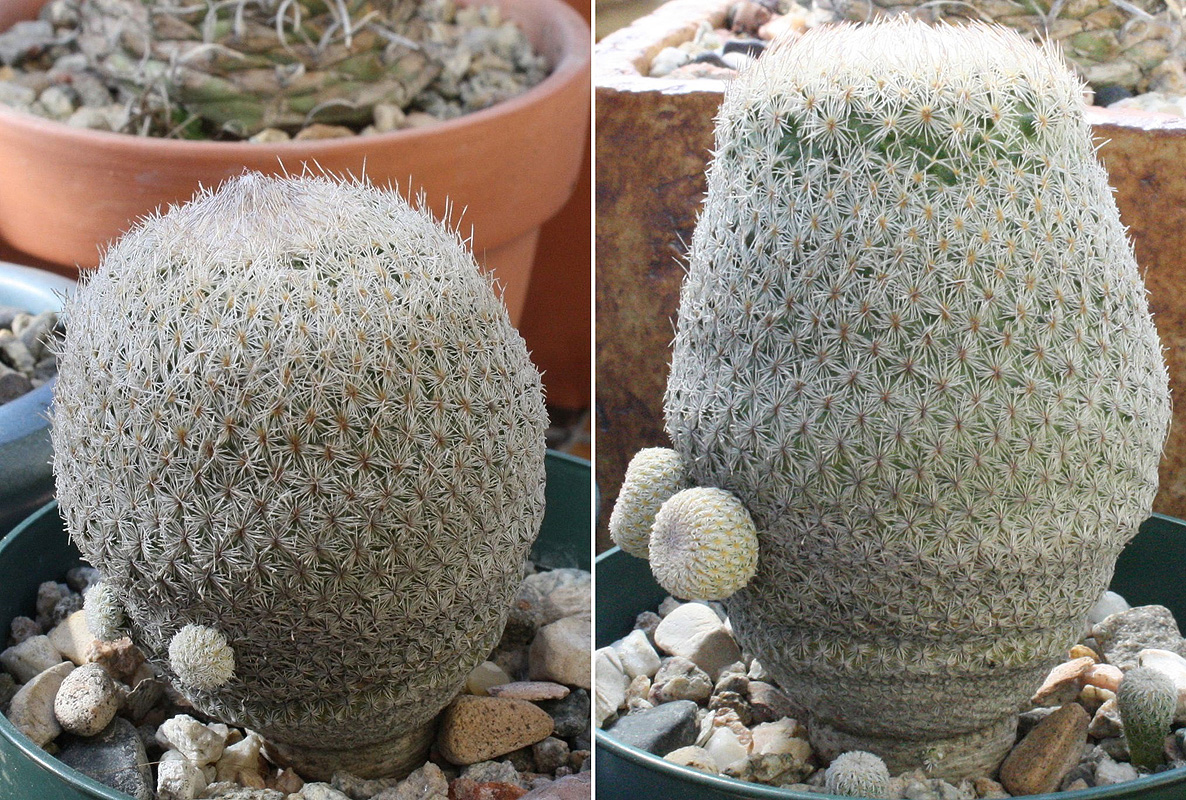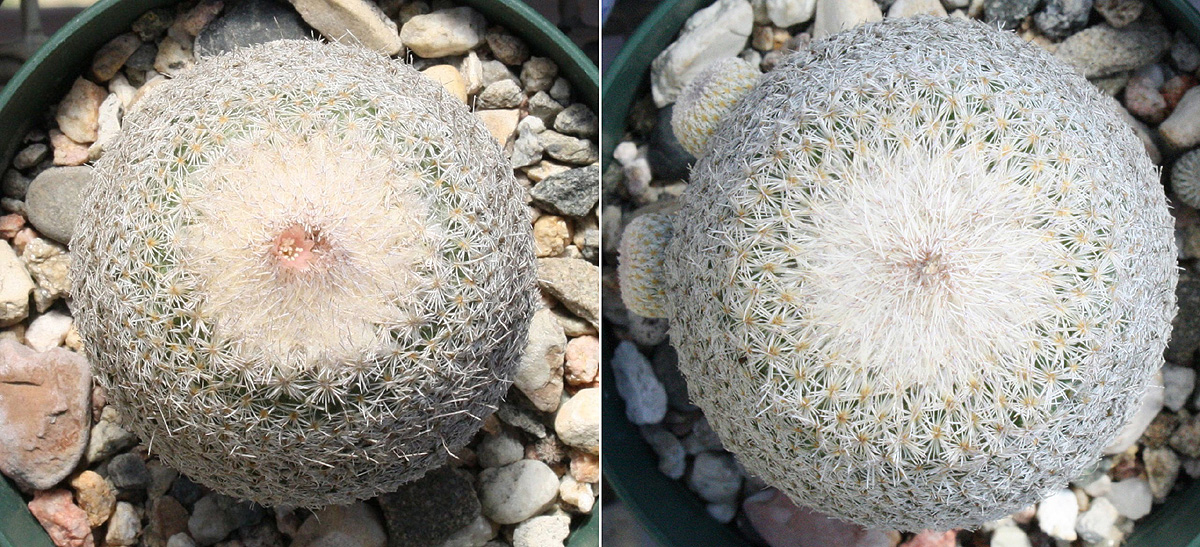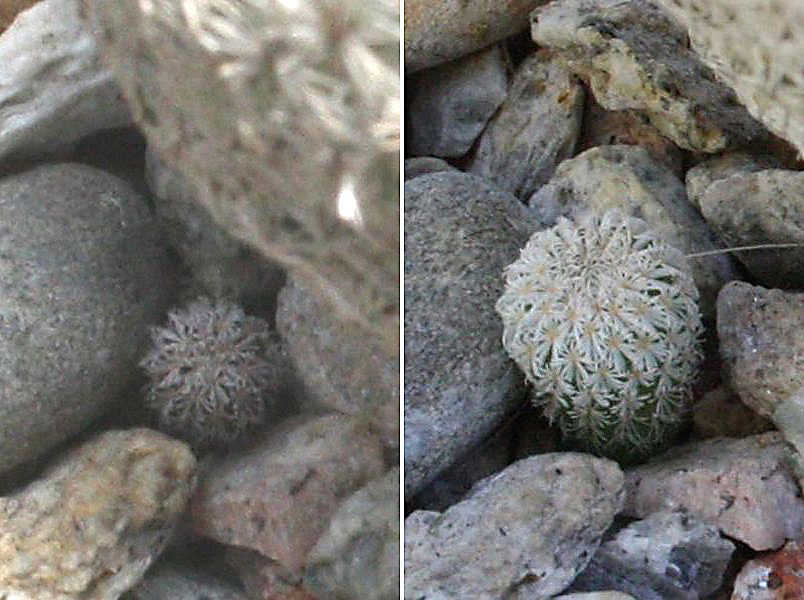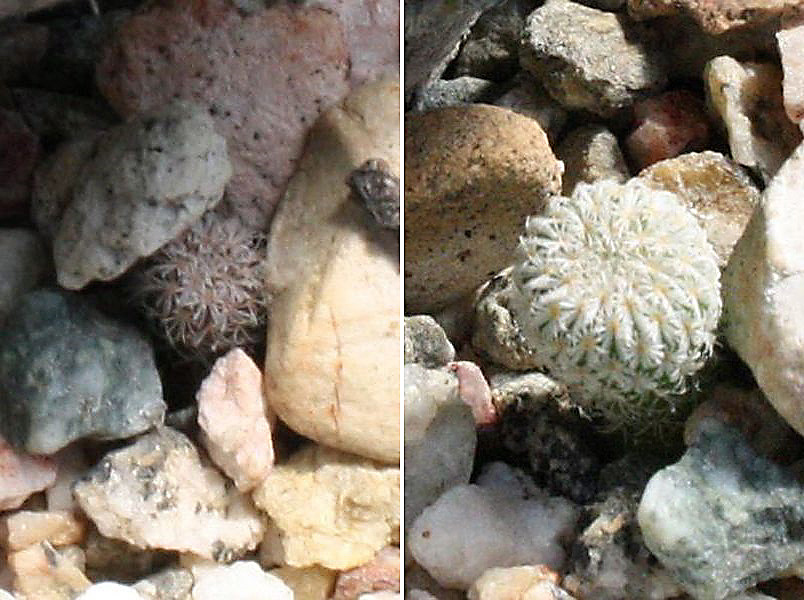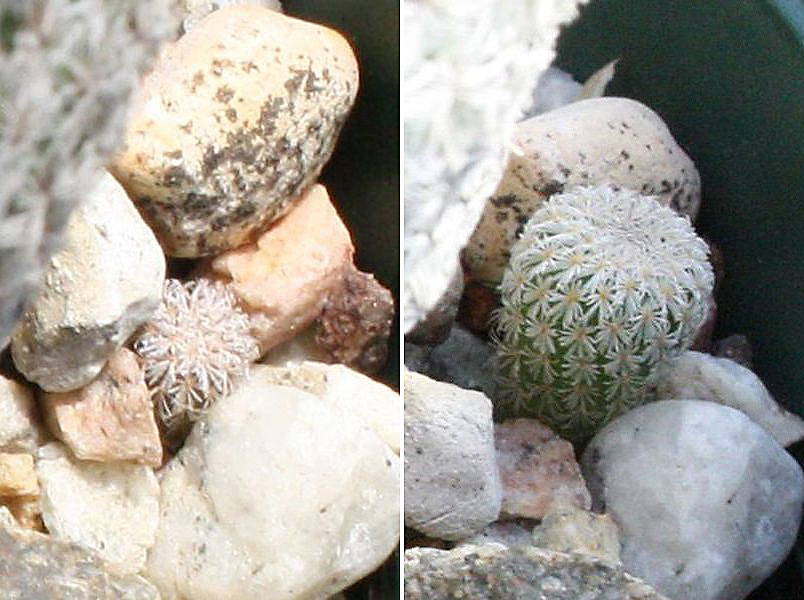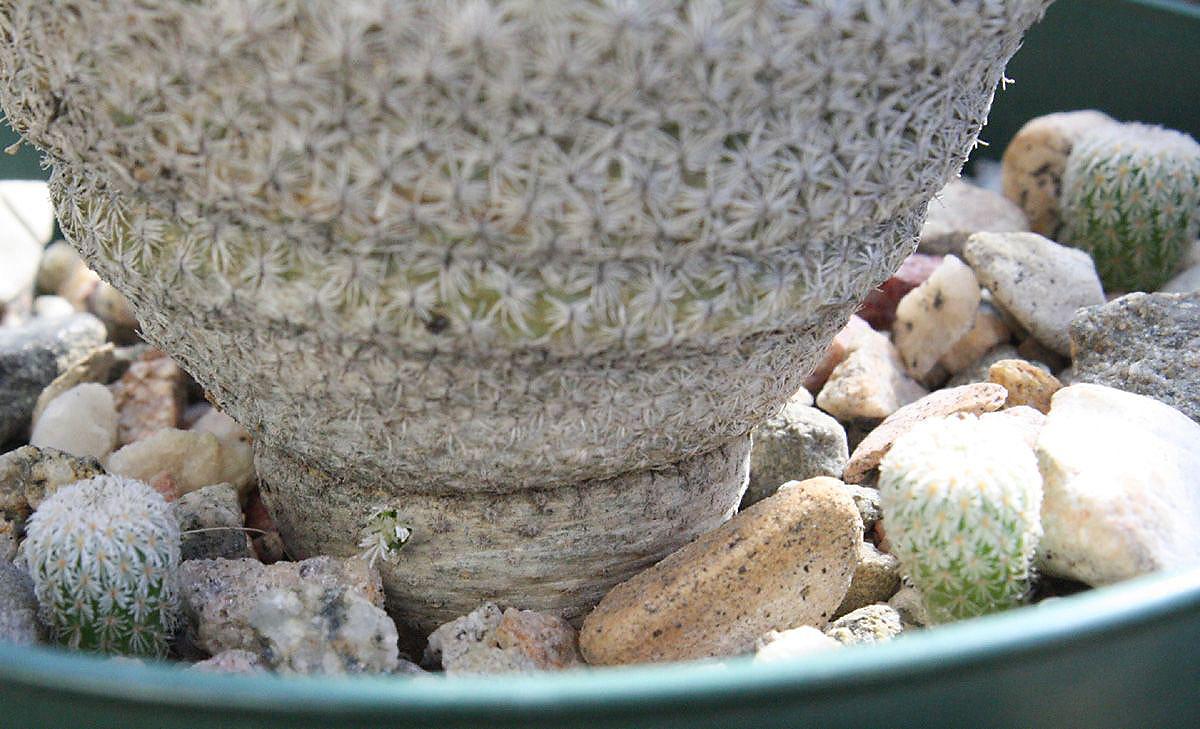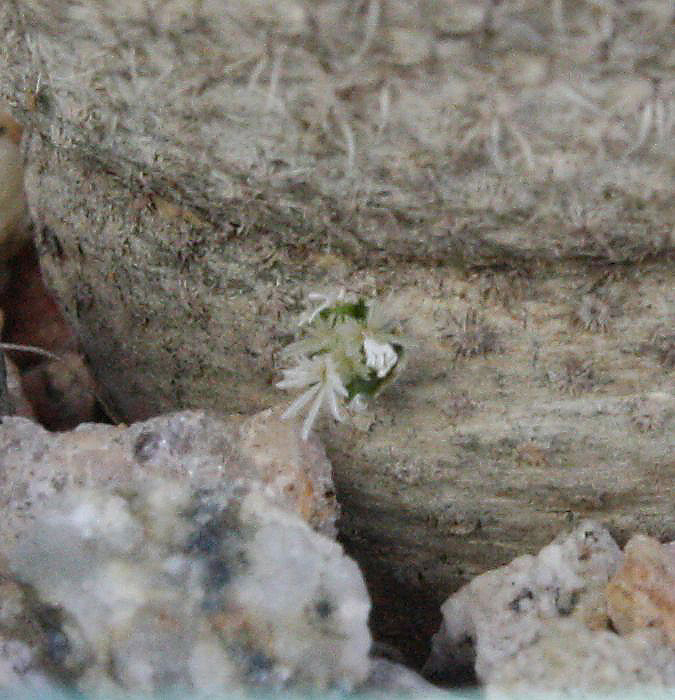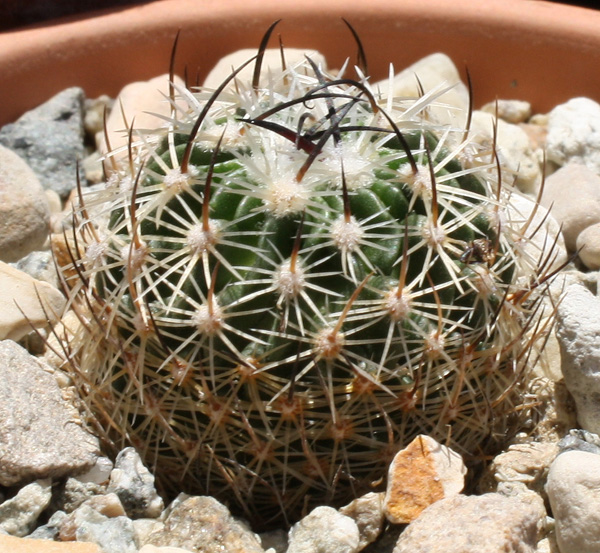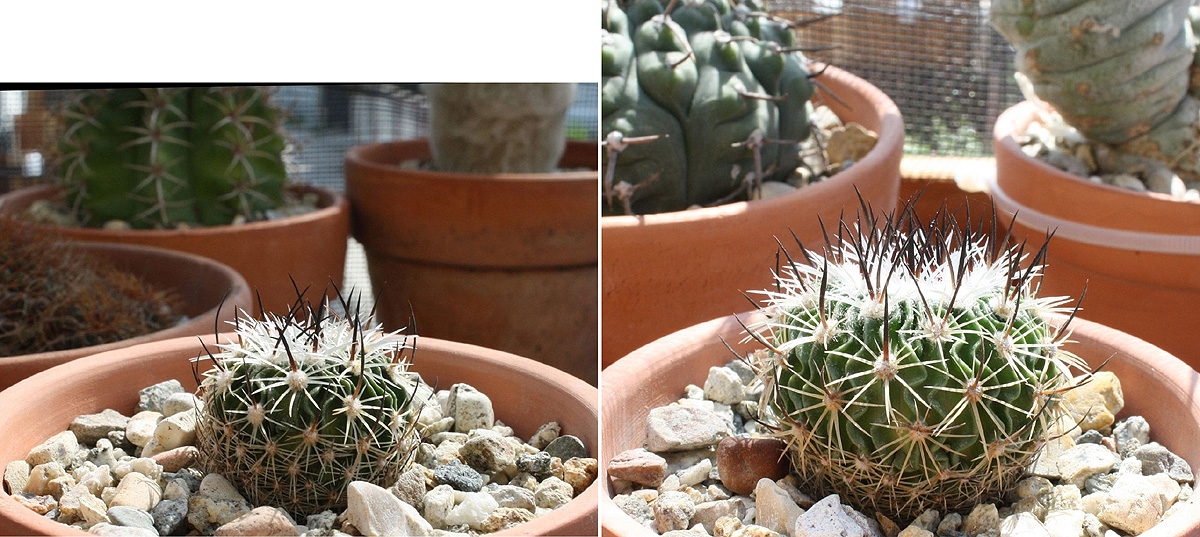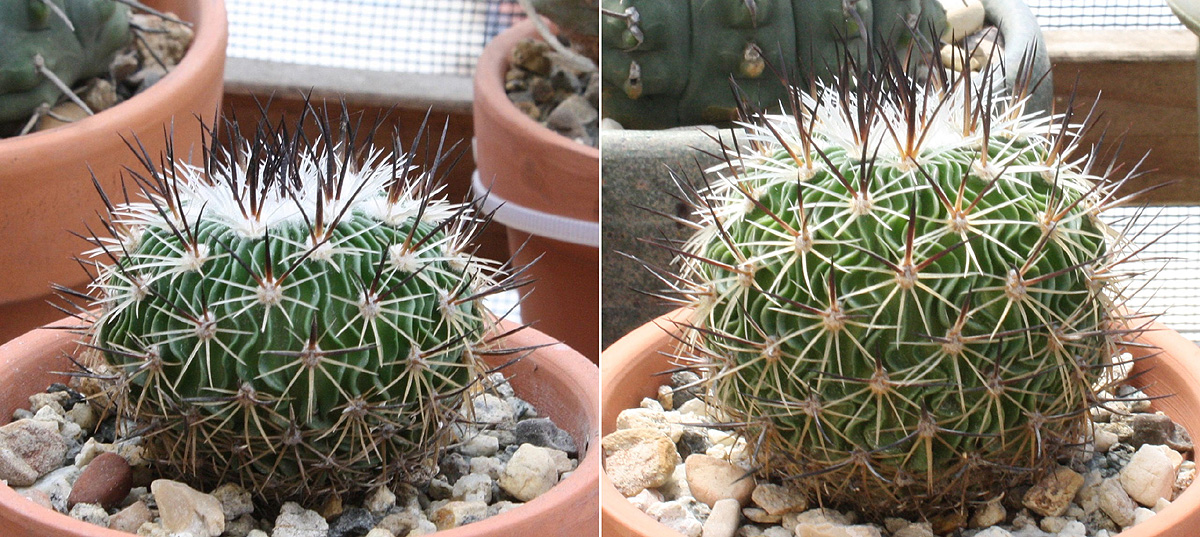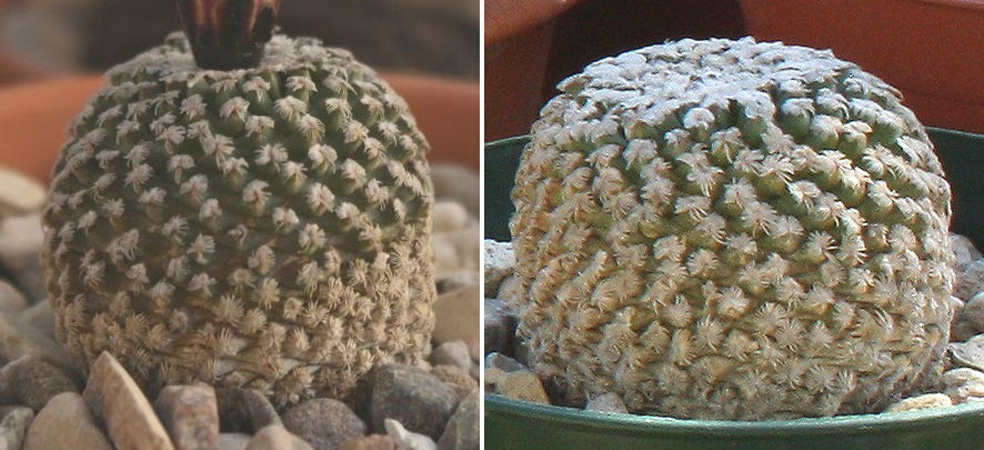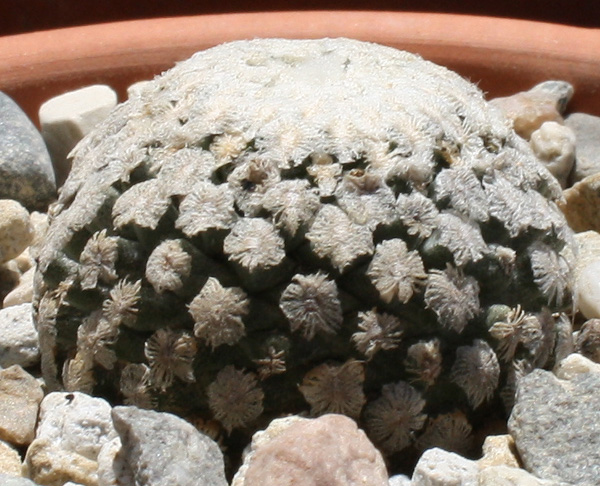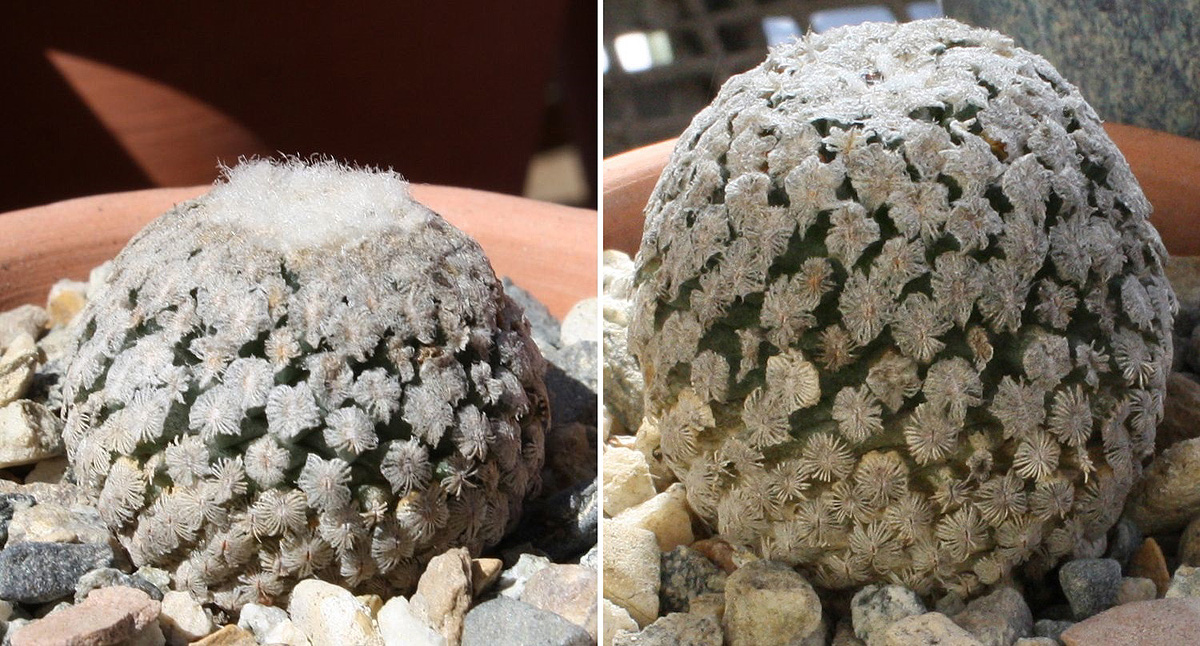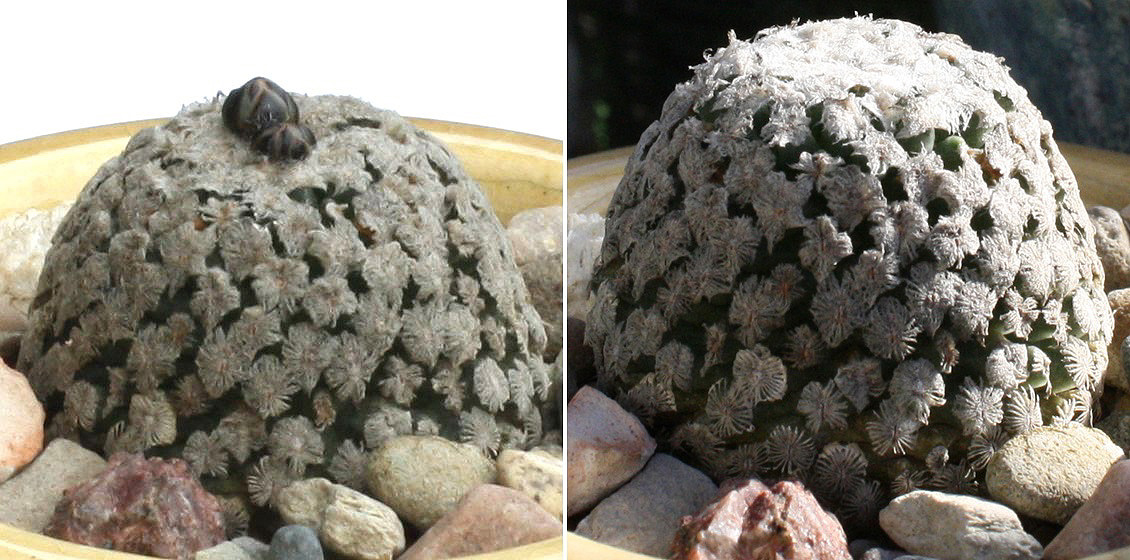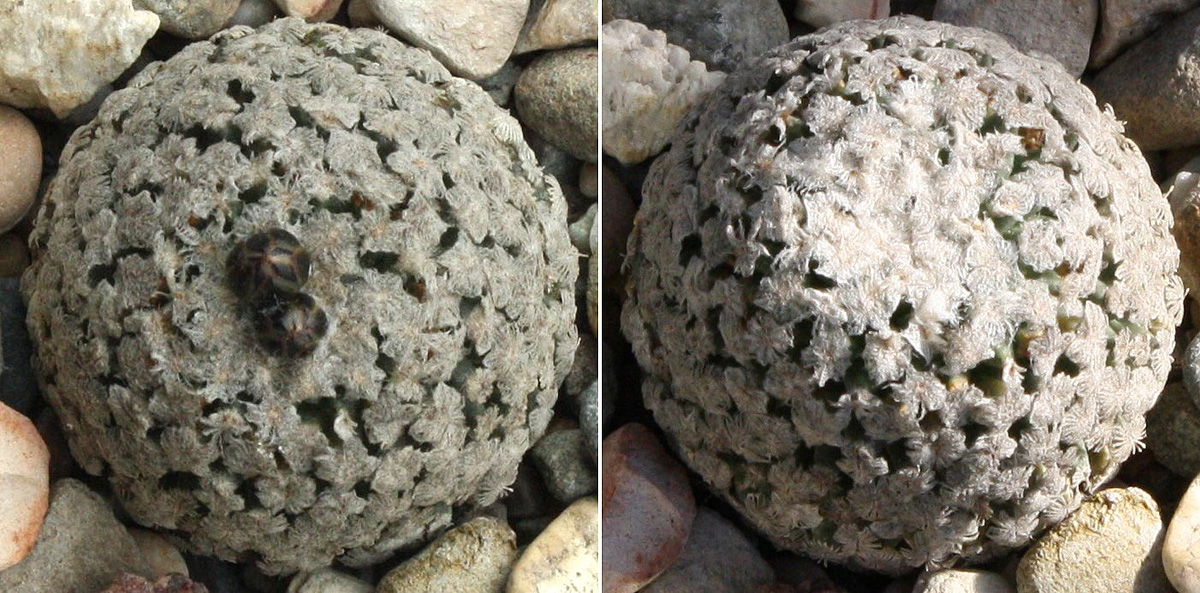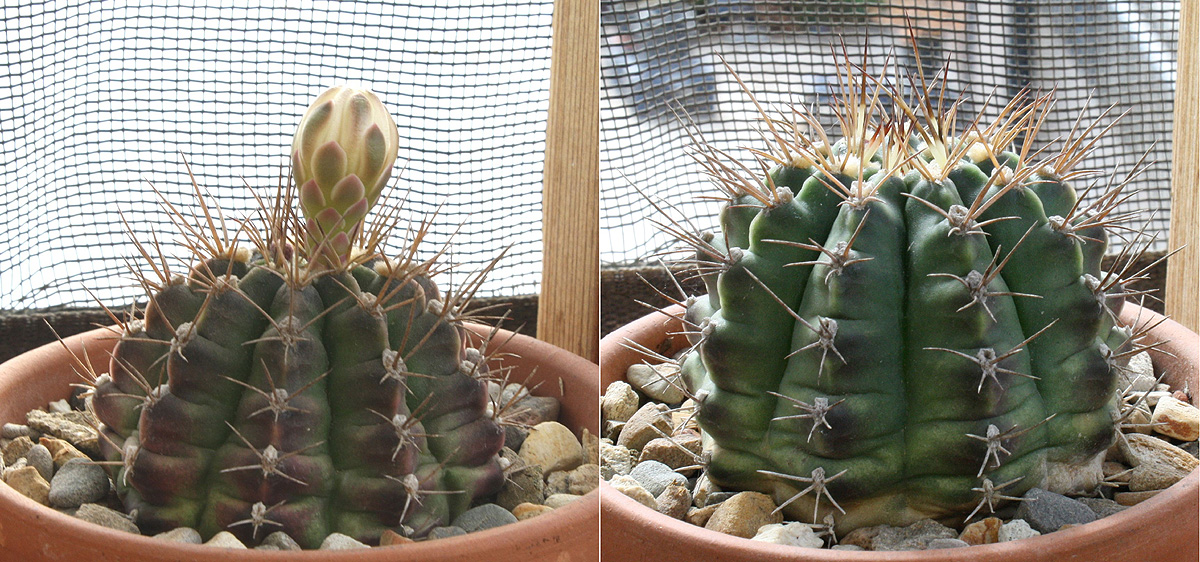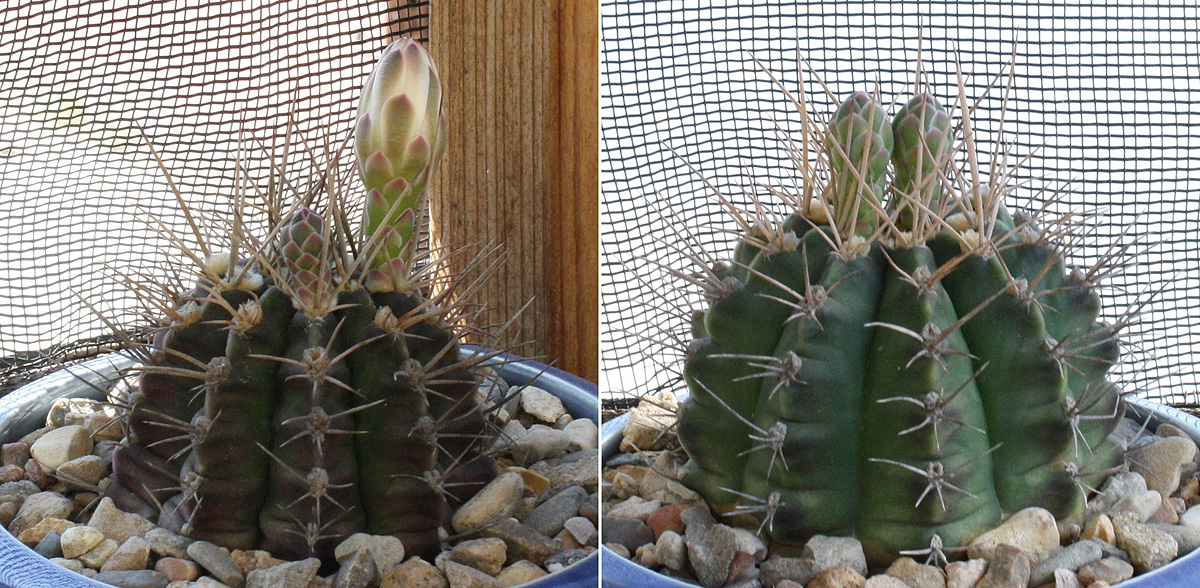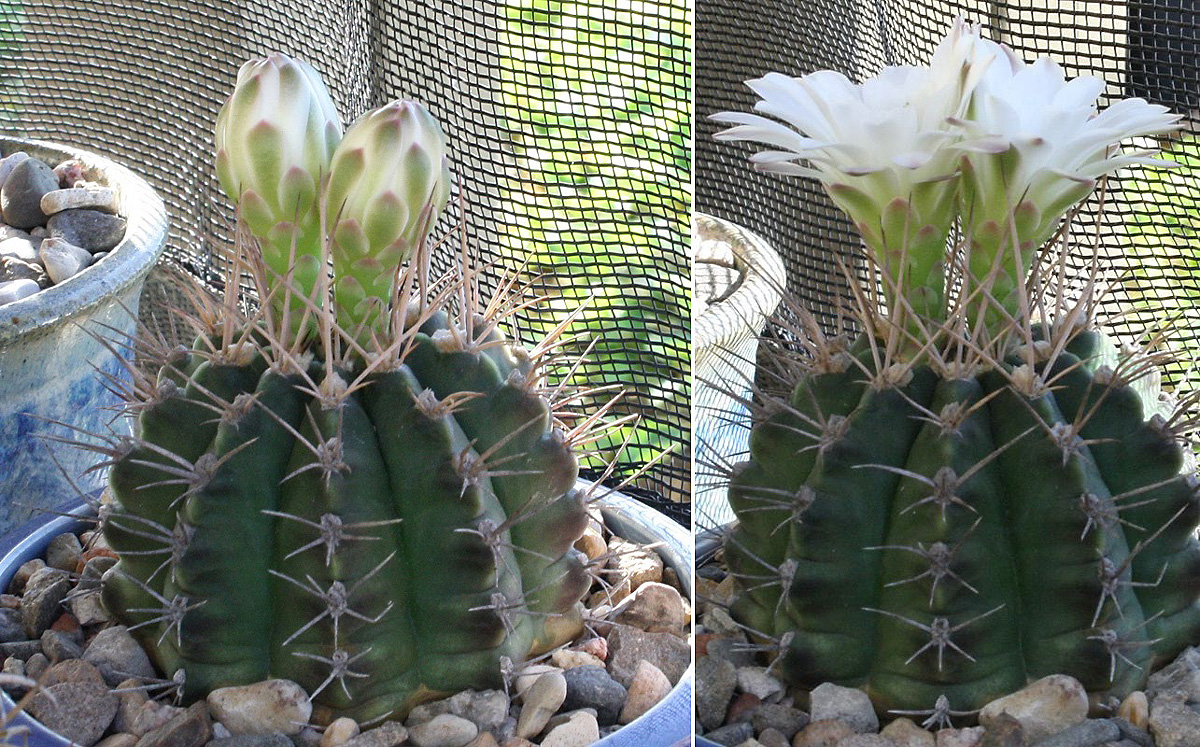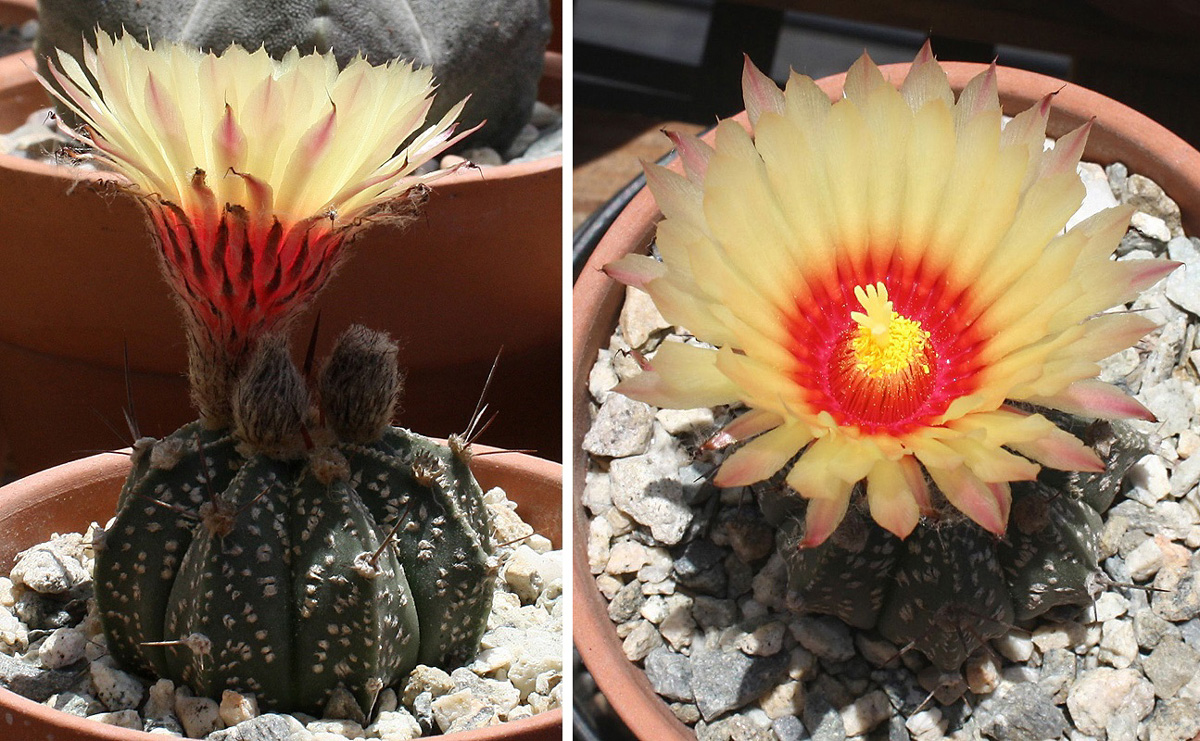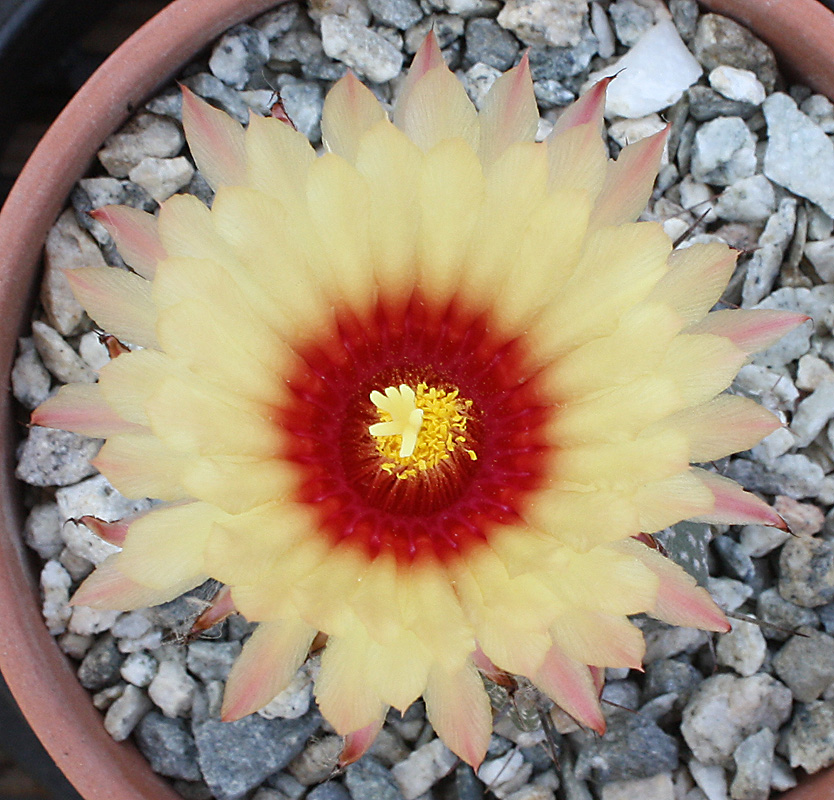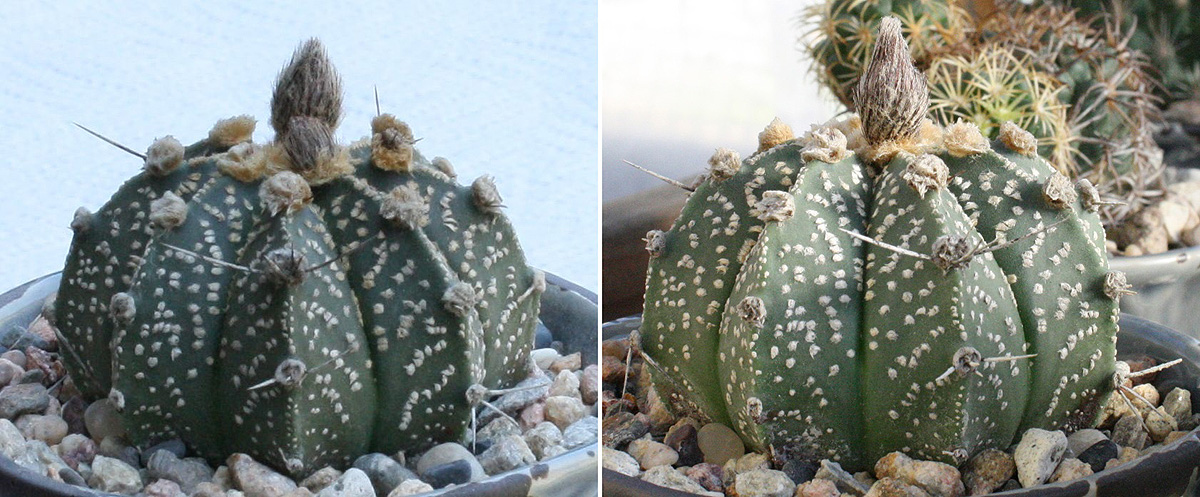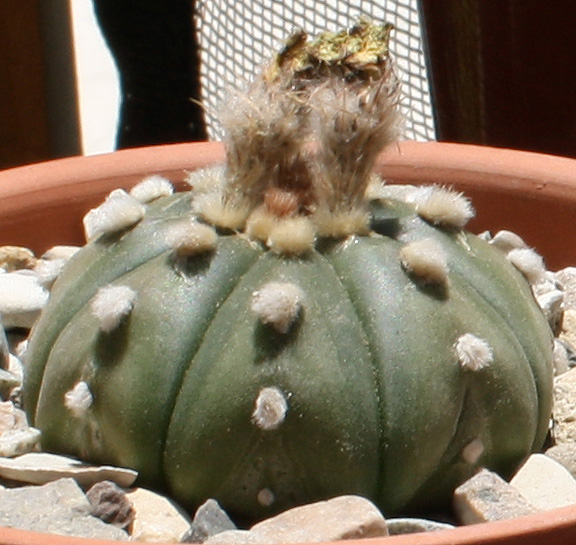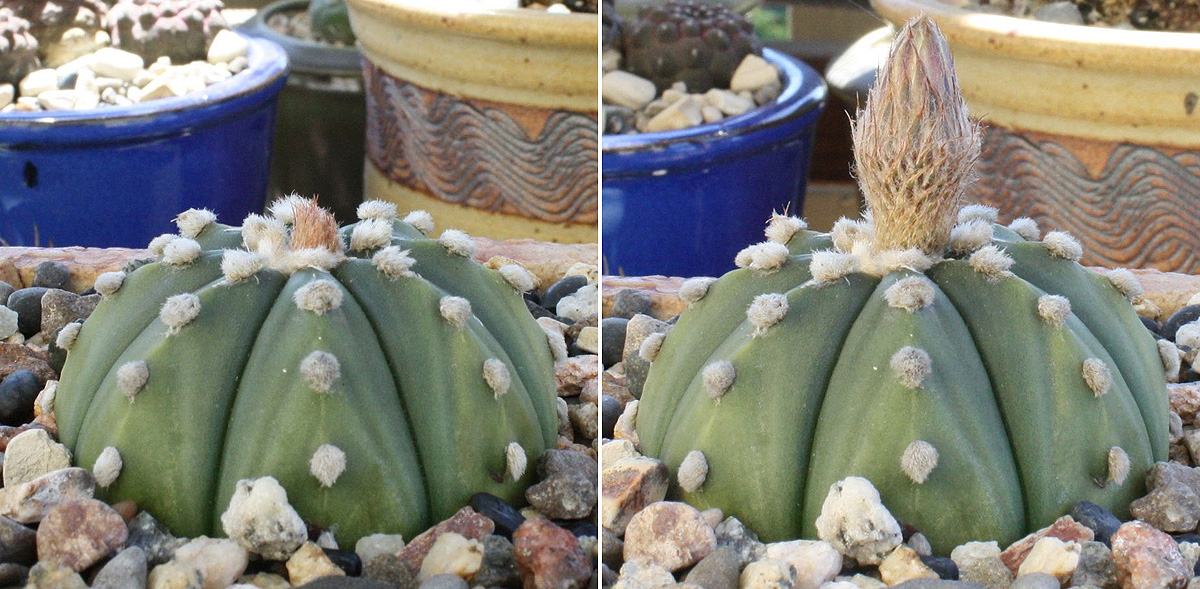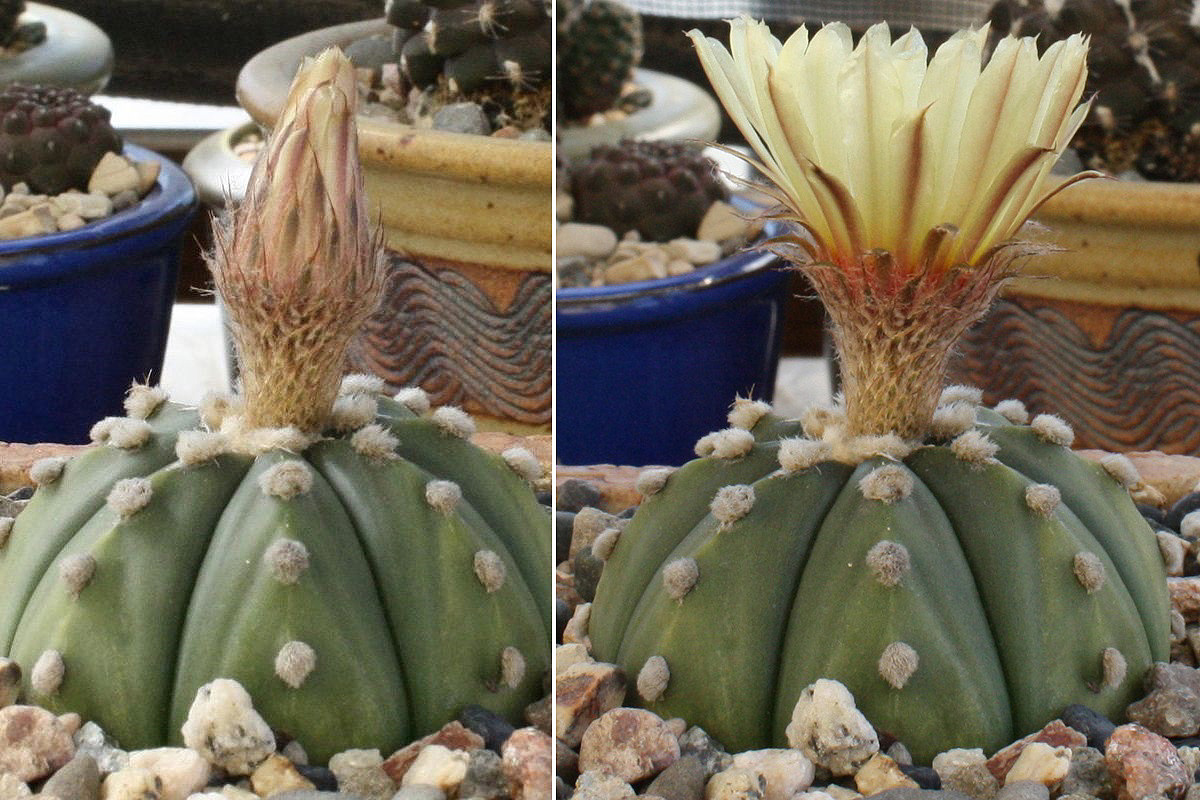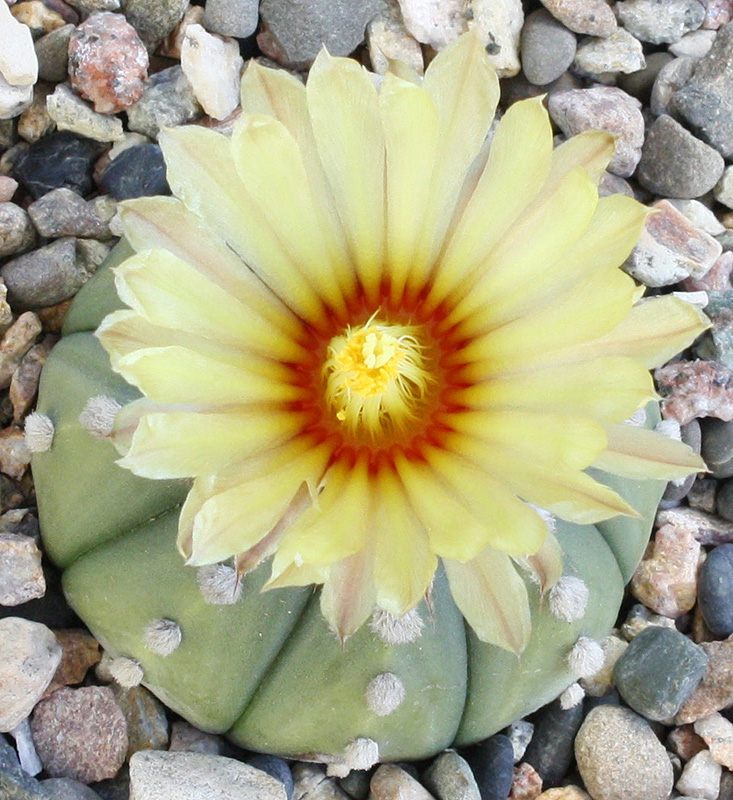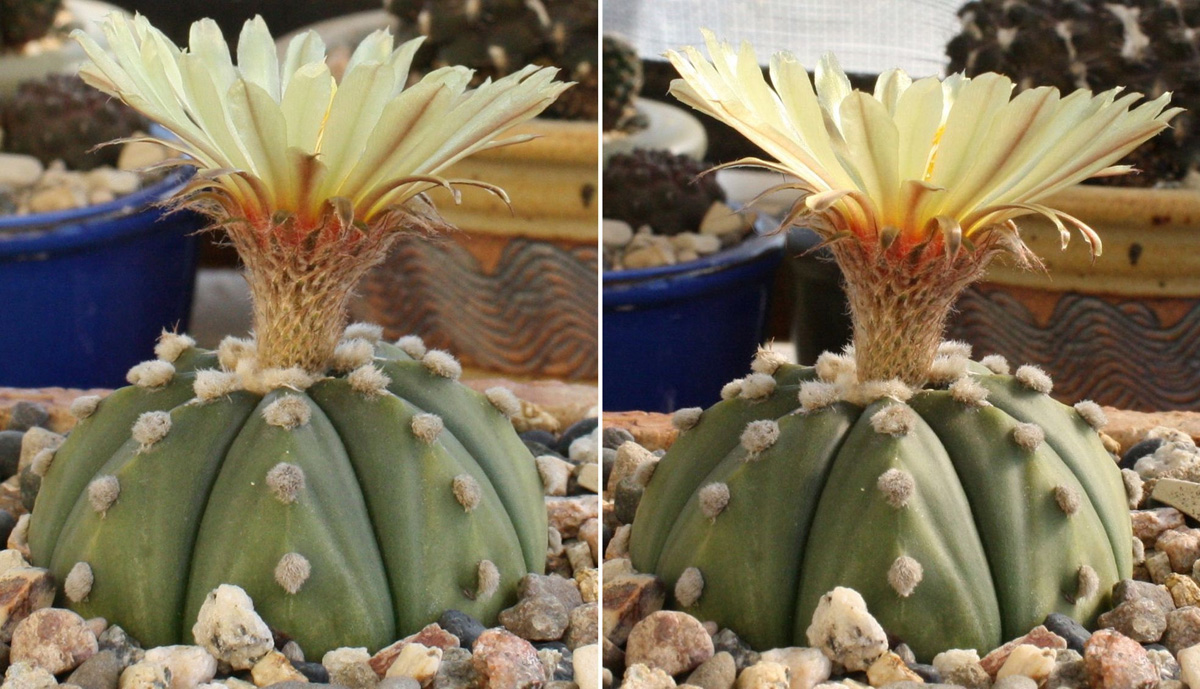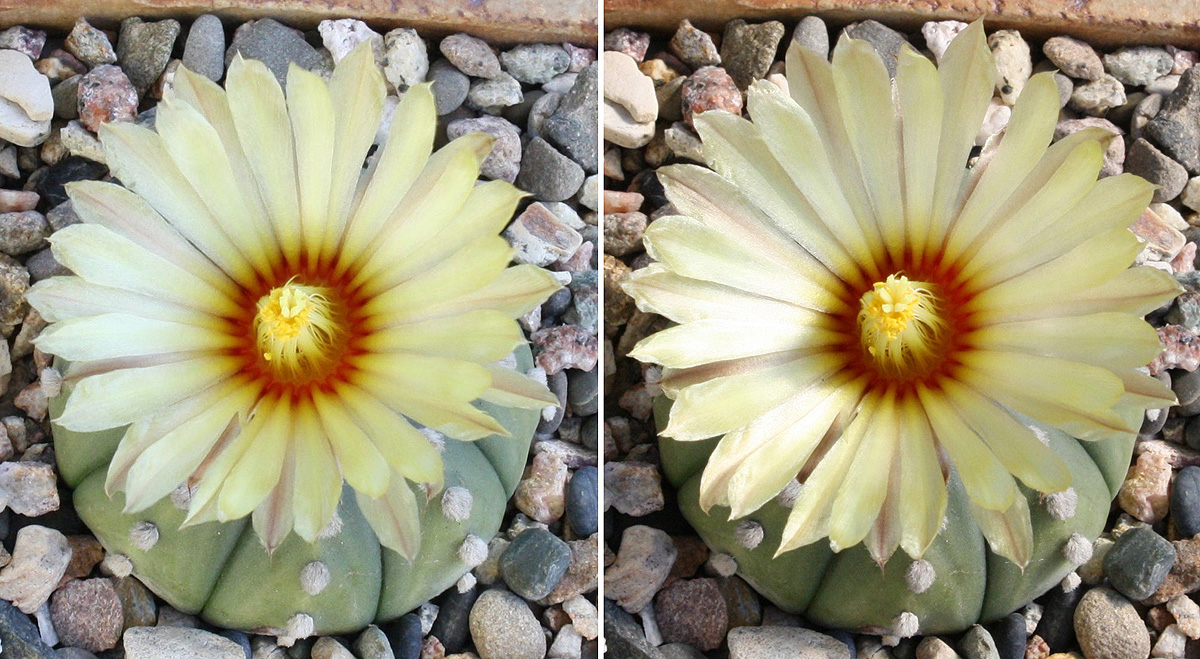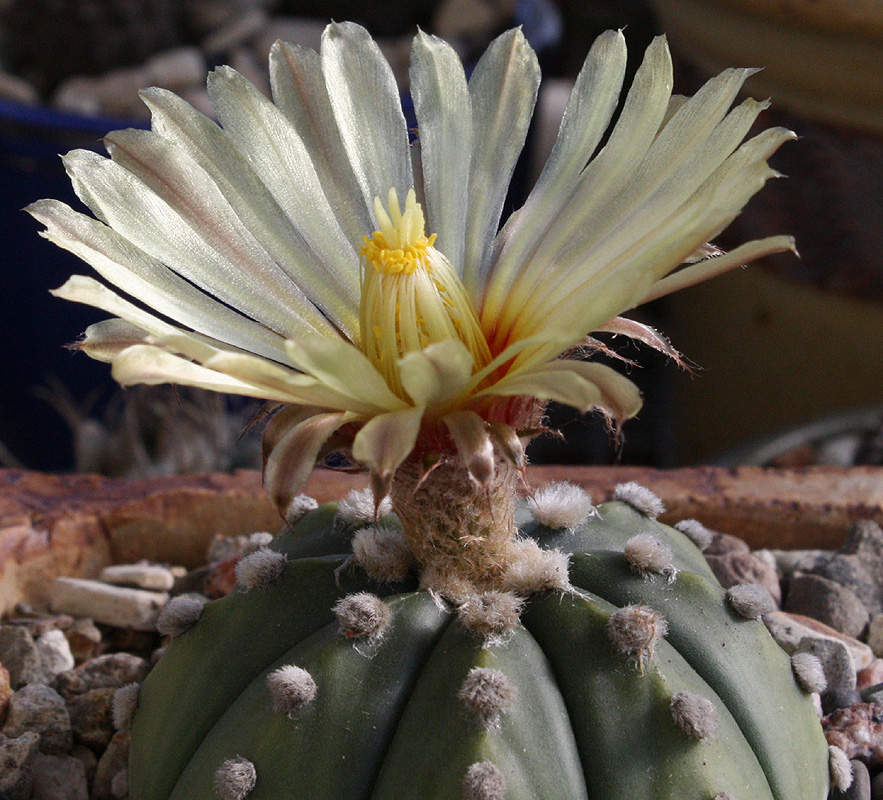2012 was an important year as I quickly corrected my newbie mistakes from the previous summer, then watched the resulting improvements with no small amount of satisfaction. Aside from the changes in growing practice, there was another one percolating under the surface after the new year began...
The old plant bench had room for more cacti -- not much, but enough to put me in the buying mood for whatever items of interest I could find at the California Cactus Center that spring. Round 1 in early March was Sulcorebutia callichroma longispina, Tephrocactus articulatus inermis, and Turbinicarpus valdezianus, round 2 in early May Echinocereus rigidissimus rubispinus, Epithelantha micromeris, and Mammillaria deherdtiana. It was also the last time I would buy plants from the CCC, when I switched preference to buying cacti from reputable sources online. No disrespect to the CCC and the people who go there, but I had 3 reasons for this decision. First, their plants can be expensive (when you see a letter instead of a price on some of their plant tags, watch out!). Second, the inventories we find on the Web go far beyond what's avaible from even the best brick-and-mortar nurseries. And third, shipping bare-root cacti means they can be repotted without all the mess and bother of cleaning the roots coming out of a nursery pot.
Like ships passing in the night, my last time getting cacti from the CCC coincided with my first experience with CoronaCactus Nursery. The first group on 4/27 included the Turbinicarpus polaskii "mama" I showed you in Part 1, Eriosyce odieri, and Mamm blossfeldiana. Didn't take long before I knew I was going to the right place, so the rest of 2012 was all about CCN. Here's what came in on July 15, 2012: Astrophytum asterias (replaced the CCC asterias I lost), A. 'capristigma' (2 that Darryl kindly sent as freebies), Gymnocalycium stenopleurum, Stenocactus zacatecasensis, and Turb valdezianus.
The collection is a little bigger at this point in our story, so I have the "family portrait" broken out into 3 groups here on 9/8/12:
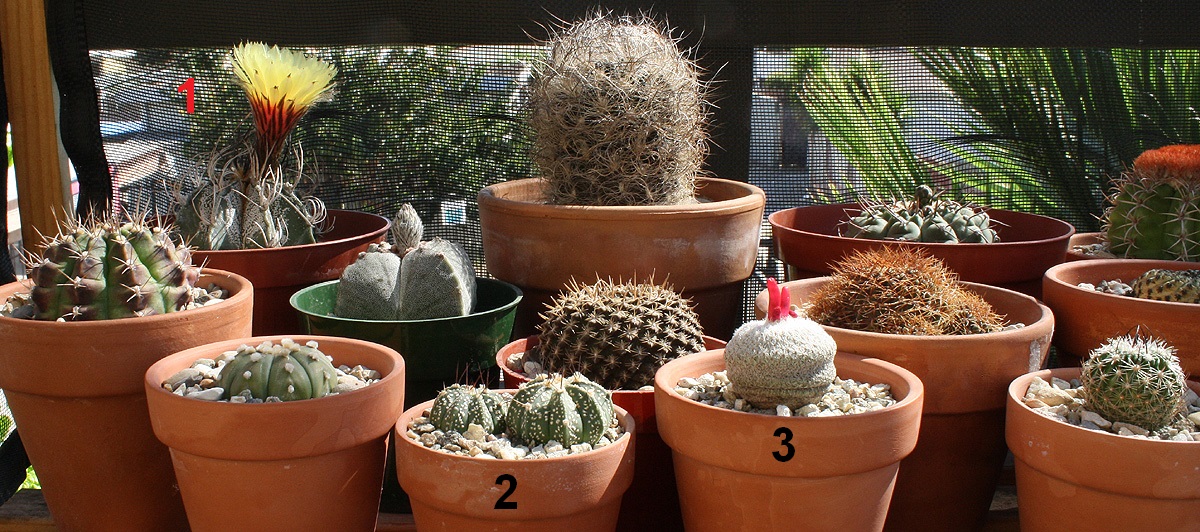
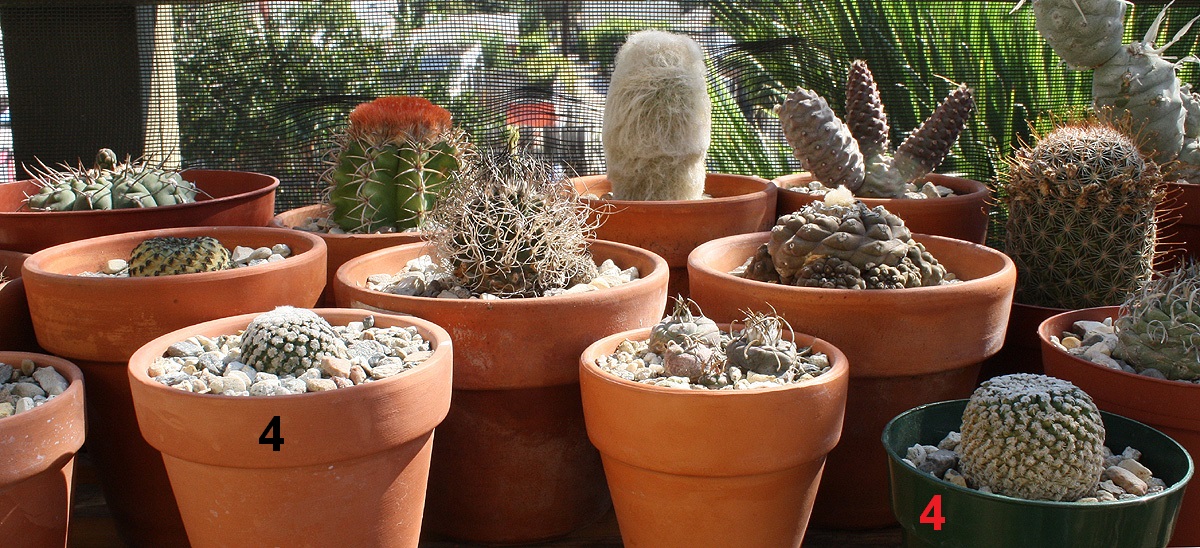

And of course some notes to go with these shots:
1. The A. capricorne's way of thanking me for giving it better care in its first full season on my plant bench.
2. Limited space on the bench, so I eventually gave away the smaller 'capristigma' to make room for something else.
3. Ooh, the Epithelantha doesn't look happy, does it? Should blow your mind a little bit when you see what it looks like these days.
4. The Turb valdezianus on the right came from the CCC. It corked badly in a matter of months, so off it went to a Long Beach Cactus Club member who wanted it. You'll see the CCN valdezianus later on.
5. I tried putting paper-spine Jr. and Sr. back in the same pot. Swimming in a big potful of coarse mineral aggregate -- bad idea, and no wonder they didn't want to grow for me.
6. Mamm blossfeldiana -- a beautiful plant that grew so well and flowered a lot. Such a shame that it rotted when I left it out for some rain in early April of this year.
Since we have 2012 setting a new place at the table, we'll look at the individual plants -- cast in order of appearance from when they arrived. FYI, from here on out all undated pics you see were taken on the weekend of September 19-20 2015.
Sulcorebutia callichroma longispina (often misidentified as pulchra) -- came home with me on 3/4/12, and here it is in its new home a month later:
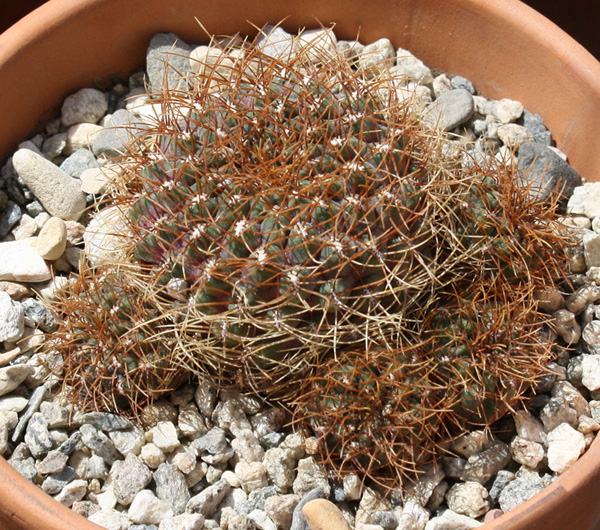
What a beautiful cactus, and trouble-free from the start. And it just
loves to grow in mineral mix. Here's an example from last year -- 4/29 and 9/20/14:
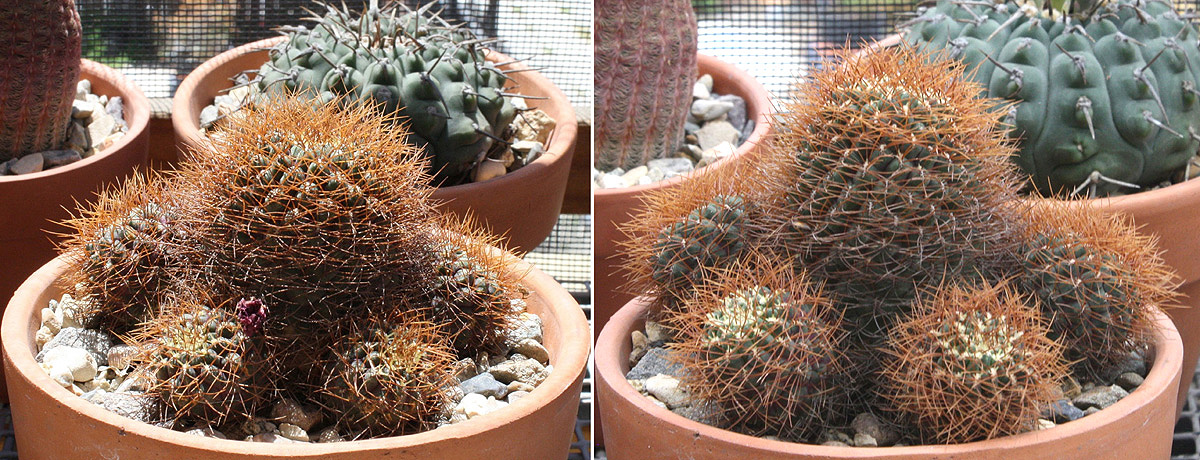
Same dates with a view from the top:
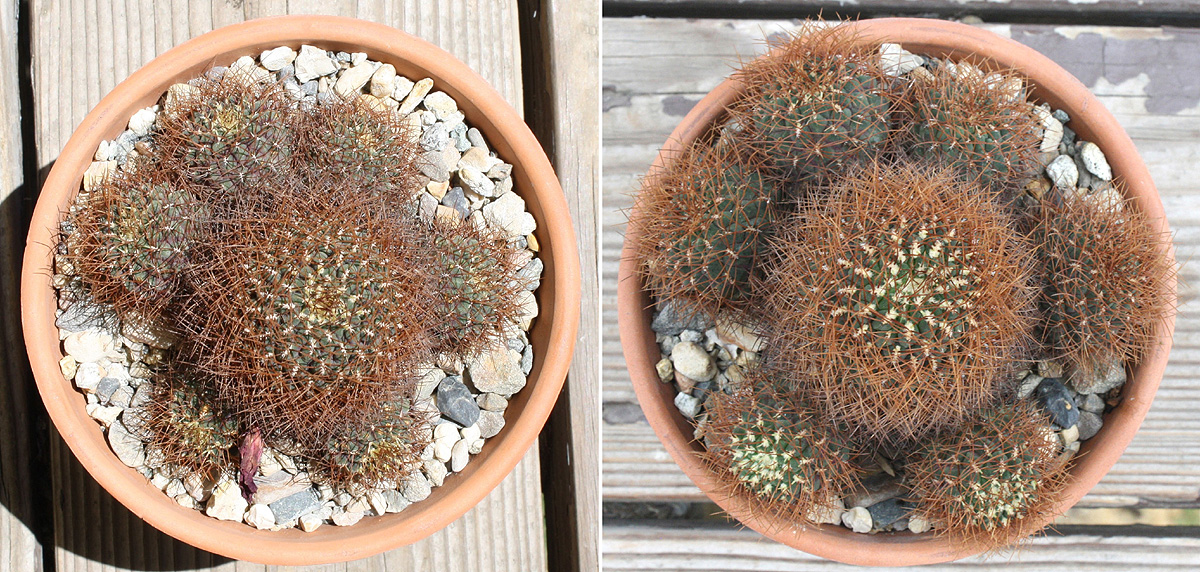
Repotted into high-fired ceramic on 4/26/15 -- ooh, I think the callichroma likes its new home!

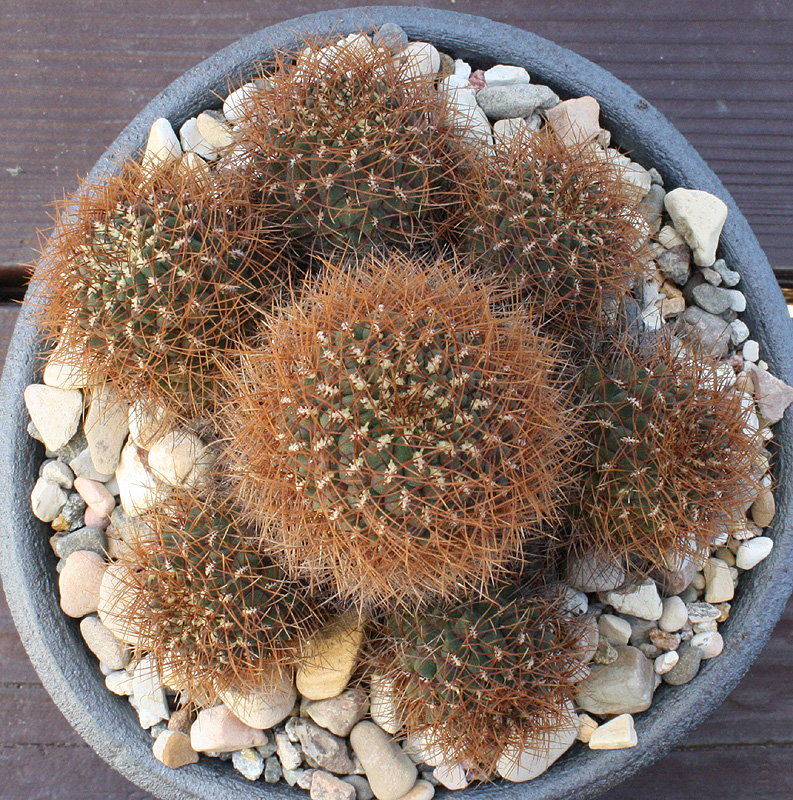
Tephrocactus articulatus inermis, AKA the famous pine cone cactus (or "cat turd" if you will

). Came in with the Sulco, and its first pic is already showing a new stem -- here on 5/6/12:
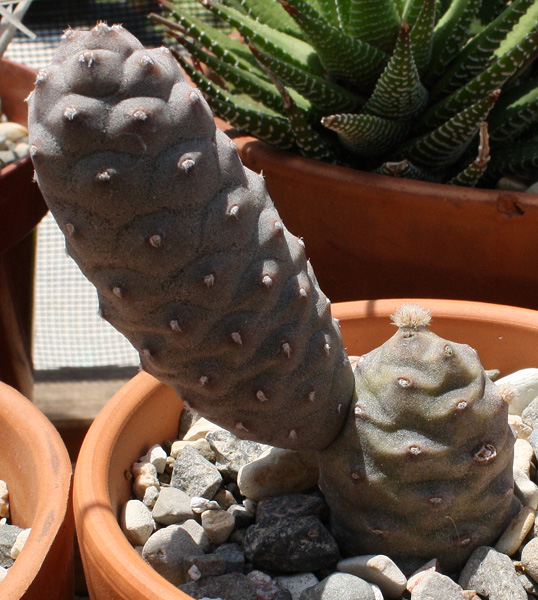
Back then I was growing my Tephros in mineral mix, and the pine cone didn't mind it as much as the paper-spines. Showing nice new stem growth in its first year under my care -- 5/6, 5/26, 8/5, and 10/7:

The brand-new stem you see in the 8/5 pic started, then suddenly quit -- unfortunately too late in the year for it. No biggie, although there is something else I should point out concerning the photo from 5/6/12. I've heard about this practice before, but I never paid enough attention to see if it could be happening in one of my own plants. Well, here we are -- nurseries are known to pump up their cacti with Nitrogen to make them more "presentable" for sale. I think that's exactly what happened, and I would avoid any nursery doing it. If nothing else, IMO it's a form of false advertising. At least no serious harm was done, and I could look forward to a pine cone that eventually took on a more natural look.
I was still concerned about the lack of growth on my paper-spines, and Ian suggested that Tephros may need soil in the mix to support their fine roots. Growth above ground needs growth below, so if he was correct, then a 50/50 soil-pumice mix should do the job. And he certainly was -- time to get them in the right mix! I repotted them in mid-March 2013, but I had an oopsie with the pine cone when it dropped a stem. I hoped to see a new stem replacing it, although if the plant wanted to work on a better root system instead, then once again no biggie. Now, I just
have to post this pic so I can show you what a wonderful year it was for paper-spine Jr. and the pine cone in 2014, here on 6/7 and 9/1:
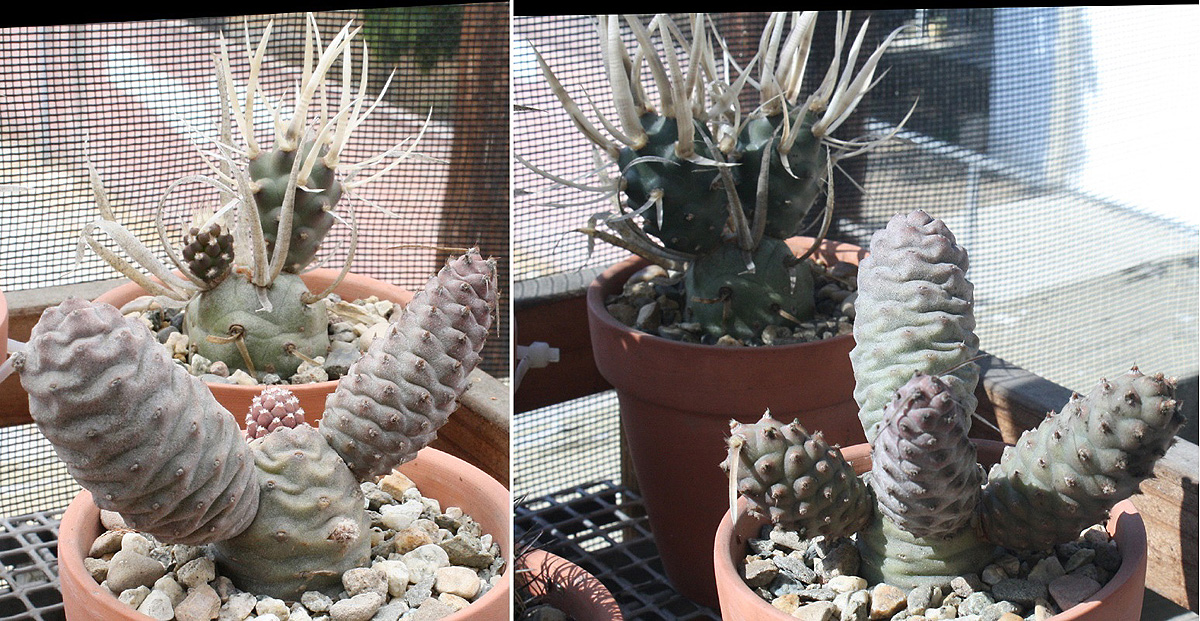
We're up to this year and the transition from terracotta to glazed ceramic, 3/14 on the left:
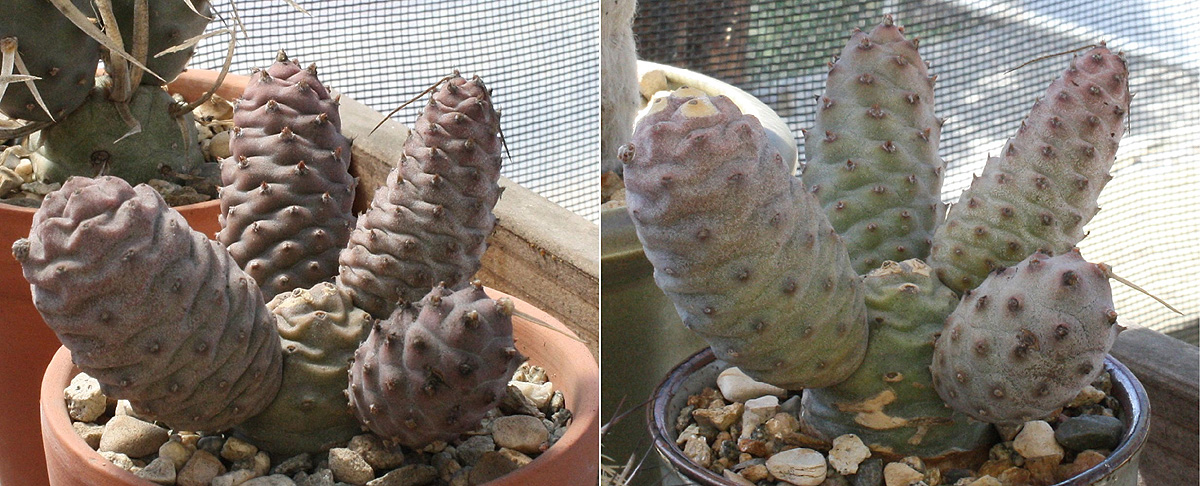
My 2 Tephros got matching glazed ceramic pots on 4/18. How ironic -- after growing 1 new stem, the paper-spine wasn't bothered by the repot as it pushed out another afterwards. The pine cone just got back to work on its roots, so no new growth this year. However, they're doing great at taking up water and nutrients, and I'm sure the plant will produce another new stem or two in spring. The only thing I'm not thrilled with at the moment is the appearance of light patches on the old growth. Hopefully they're precursors pointing to the places where new growth comes in, although I also have to wonder if this could be a delayed effect of the pine cone showing some unhappiness about the way it was treated at the CCC. Clearly my dealings there have been a mixed blessing. Exhibit A -- a Turb valdezianus that came with the Sulco and the pine cone, the details of which aren't worth going into. Exhibit B -- another try with Echinocereus rubispinus, which gave me a lovely flower in mid-June of that year, then promptly rotted. (To be honest, I may have to own an ignorant mistake on that one.) I got the rubispinus on 5/6/12, but there was nothing mixed about the blessing that came along with it -- Mammillaria deherdtiana:
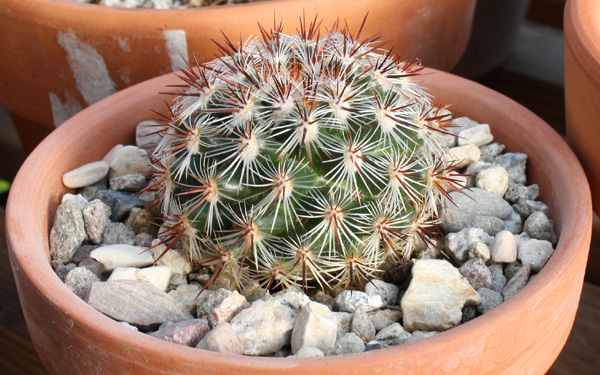
The species is rarely seen in US collections, and it was sheer luck that I found one. While the constraints of an apartment collection don't allow me the luxury of making impulse buys, this was a time when my rare bit of indulgence paid off.
I knew nothing about the species going into it, but I found out later that deherdtiana is slow to establish its roots. First signs of new growth toward the end of September 2012, that's about right:
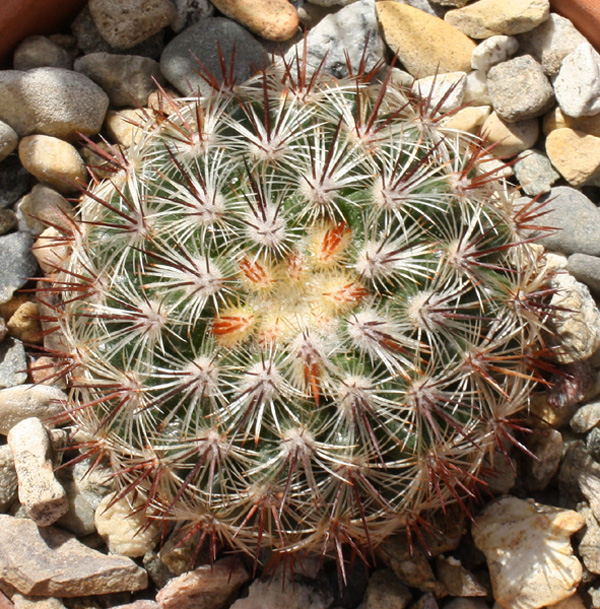
Everything about deherdtiana is slow -- slow to get the roots going, slow to grow, slow to offest. Maybe true, or -- what about mineral mix? The deherdtiana started growing new pups in March 2013. I don't think this is a coincidence, and I've seen my pumice-DG mix do wonders for too many other cacti to believe otherwise.
My first encounter with flat mites took place 3 months later, and those incredibly tiny nasty things were happily munching away at the plant's base before I knew they were even there. But once I noticed the telltale damage, I knew what they are, what they do, and how to get rid of them. (Many thanks to A. Dean Stock for recommending TetraSan. While flat mites occasionally visit some of my cacti, I reach for the TetraSan spray bottle well before their damage has the chance to go far.) More coincidence, or did the deherdtiana take sweet revenge by accelerating its new pup growth? I'll let you decide -- here's a 360-degree view on 4/12/14:

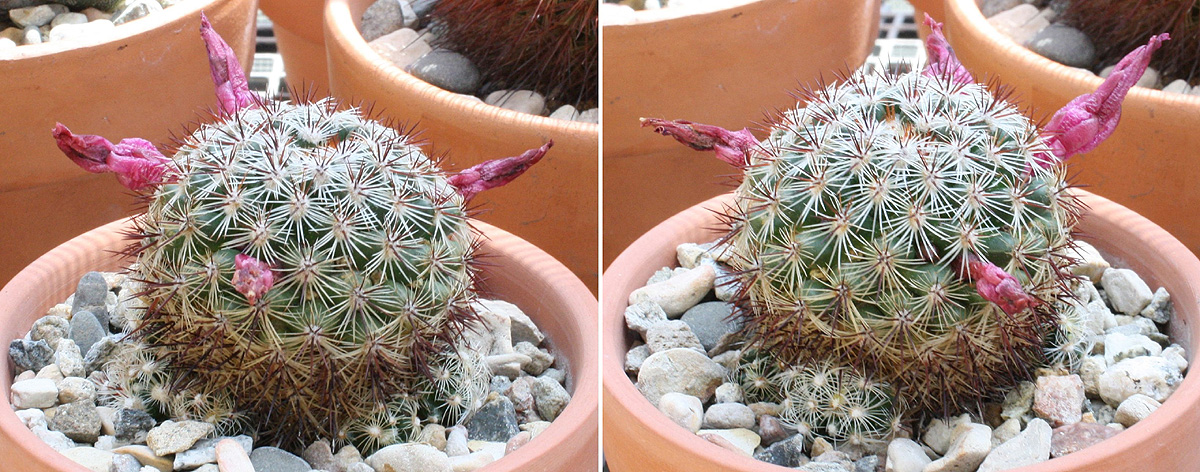
That was just the beginning, and now I'll bring you up to the end of summer 2015:
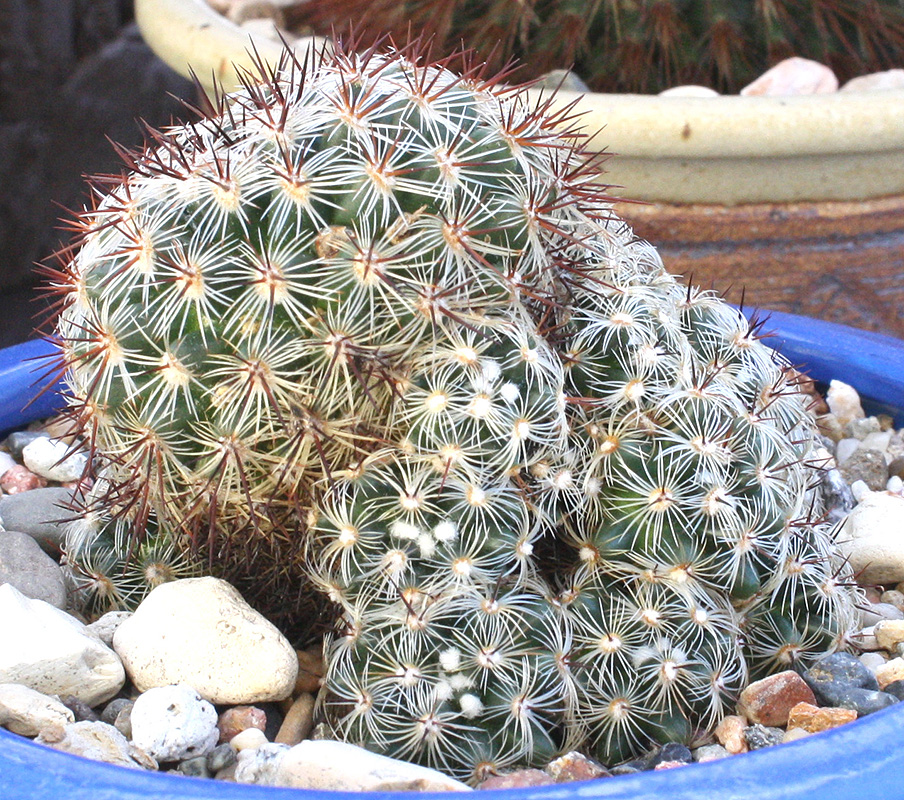
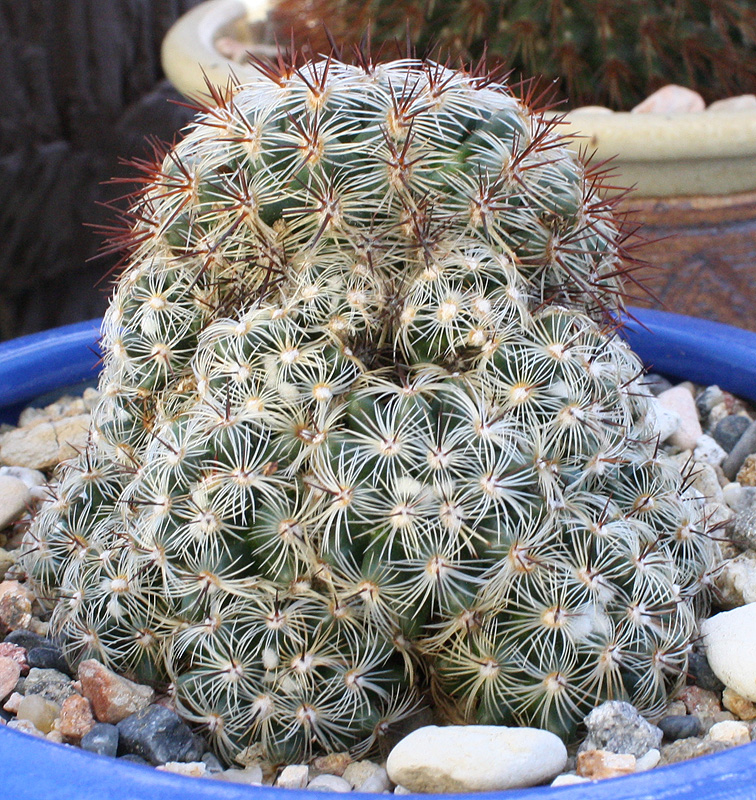

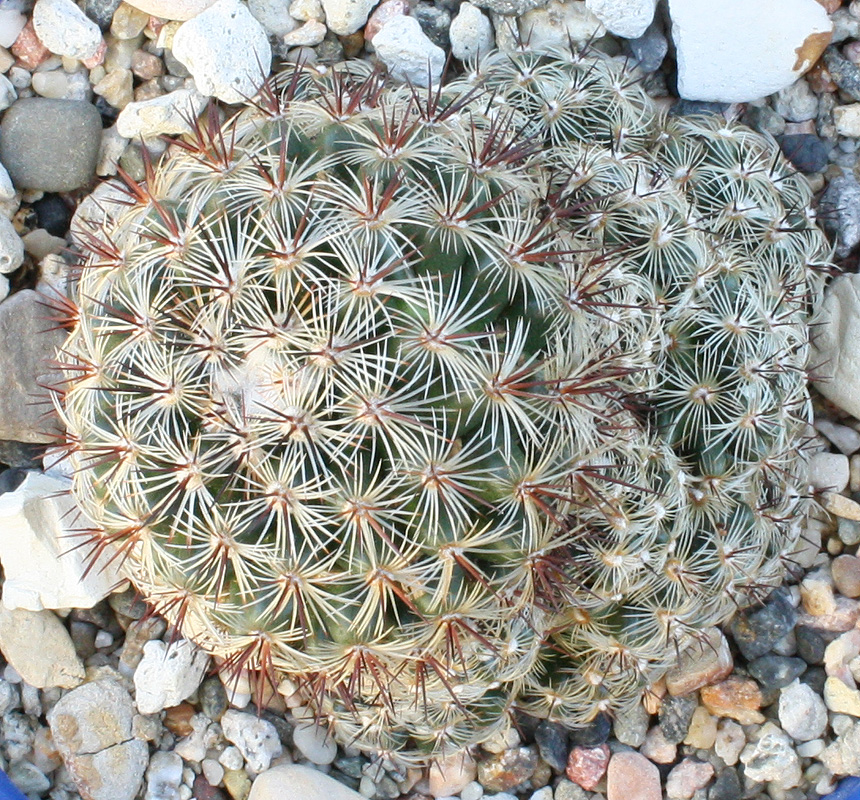
It's interesting to see how the deherdtiana is favoring its west-facing side for most of the pups. Since I repotted the plant in glazed ceramic at the end of January, I think it's safe to assume that its roots have been a bit slow to establish again. But because it's in a potful of clean, open mineral mix this time, I wouldn't be surprised if the deherdtiana starts filling that space with new pups next year.
As we countinue our journey, we'll look at my acquisitions from CoronaCactus. The Turb polaskii "mama" on repotting day (1/4/15), and 4/13 in the middle:

A bird's-eye view:

Now that the remaining members of the polaskii family are in their own pots, they're finally starting to grow, and it confirmed my suspicion that they would've continued to struggle if I kept all 4 polaskiis together in the same pot. Not much in the way of progress yet, but enough for a promising start on what the polaskiis will do next year. In the meantime, this is
really what I've been waiting for -- both flowering at the same time. The buds on 9/24/15:
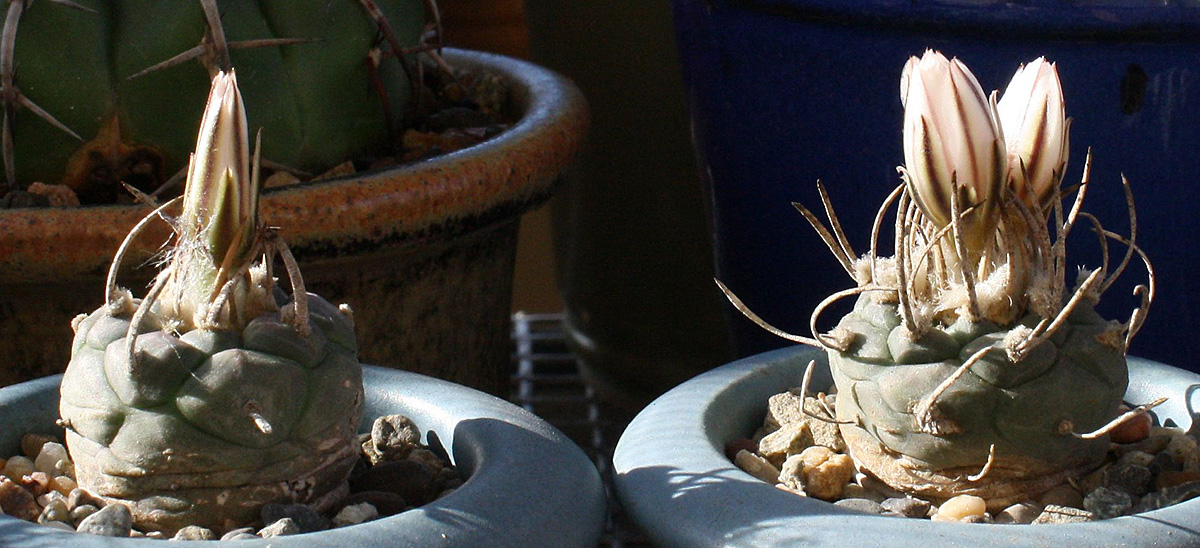
2 days later, and possibly the biggest polaskii flowers I've ever seen:


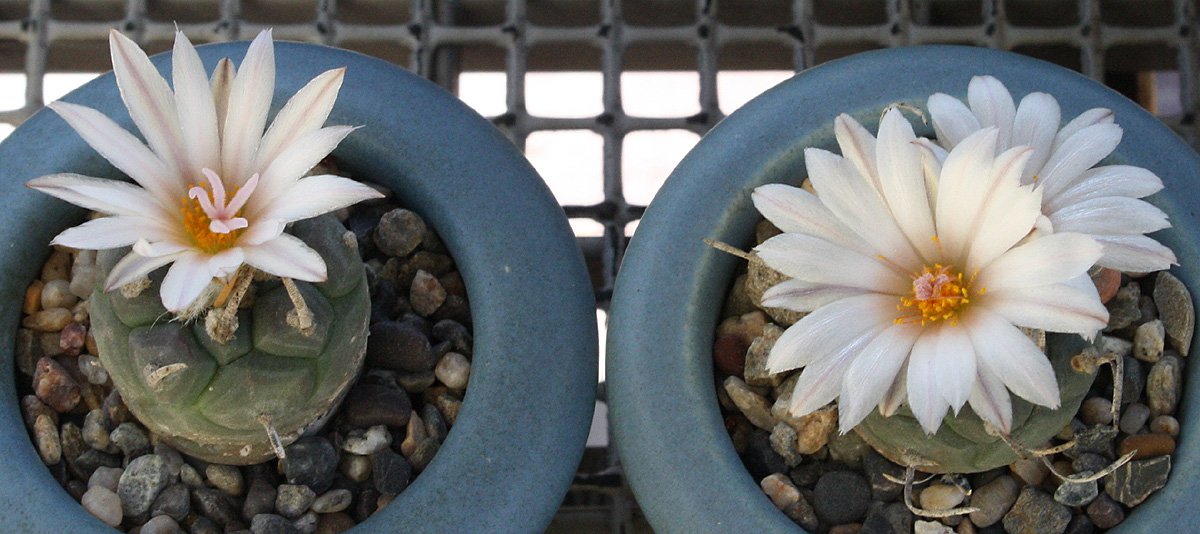
Eriosyce odieri, arrived on 4/27/12 with a very nice set of buds -- here a week later:
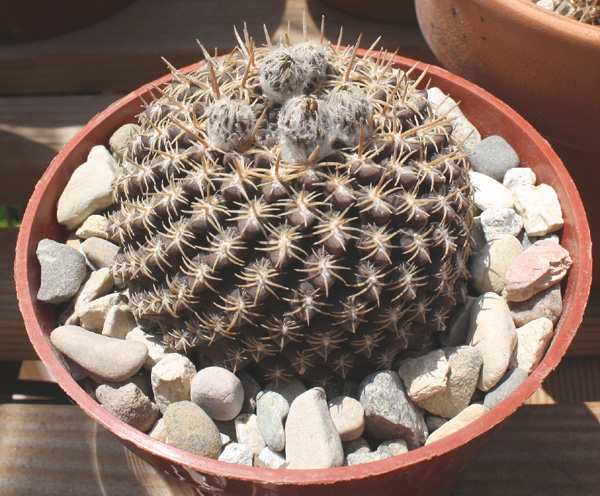
Yep, that's right -- a plastic pot! After briefly flirting with plastic, I decided it wasn't for me, and I went over to waterproofing my terracotta pots in 2013. (Neither here nor there, I just wanted to mention it.) There's not much to tell about the plant besides beautiful flowers in late spring (only 1 this year), and slow, steady growth. Flat mites generally don't find brown-skinned cacti appealing, although they've had a go with the odieri a couple of times. I posted a pic of the wonderfully funky glazed ceramic pot I found for it in "Terracotta out, glazed ceramic in (Part 7)", so here it is on 9/20/14 and repotting day on 4/18/15:
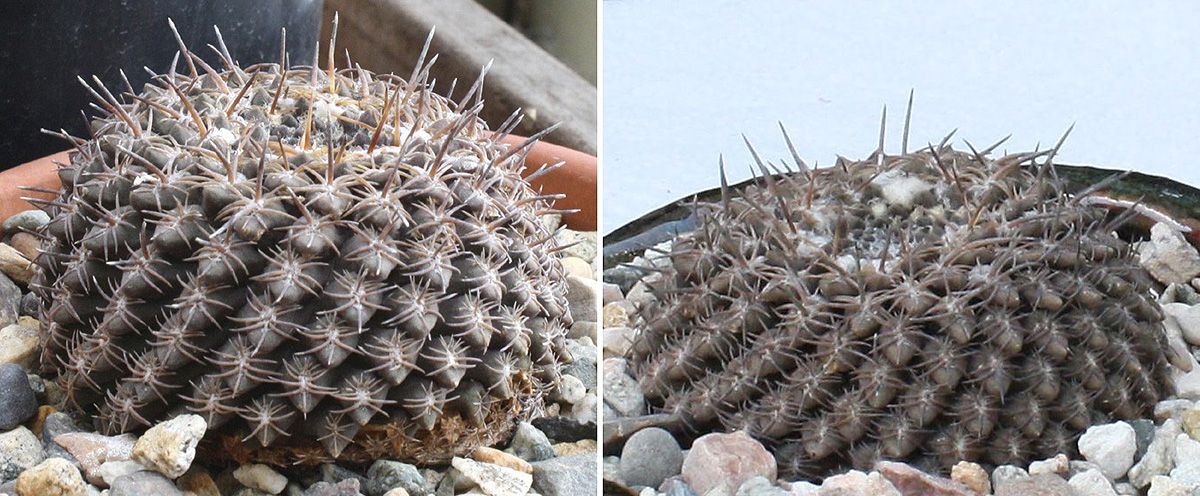
The odieri lost a lot of water over the winter, but that's totally normal. In fact, Thelocephalas (E. odieri and napina, for example) need to stay completely dry during winter, and they should get most or all of their water in summer. (Stretches of hot, sunny weather are acceptable for springtime watering, but sometimes difficult to come by.) What we'll be looking for here are signs that the odieri has re-established well enough to take up water and show at least a little bit of new growth. The benchmarks on 4/18 and 9/20:
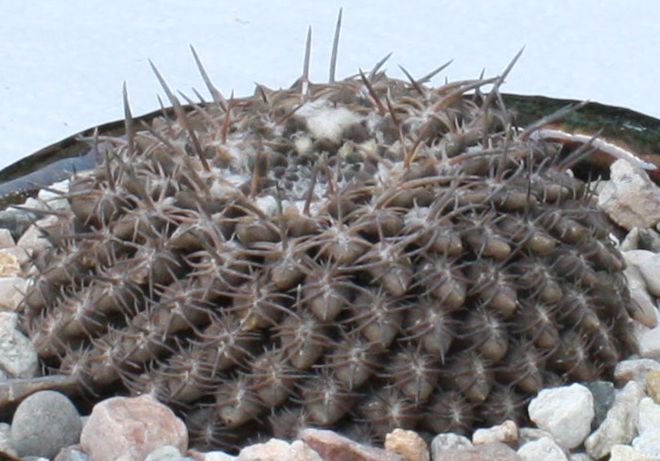
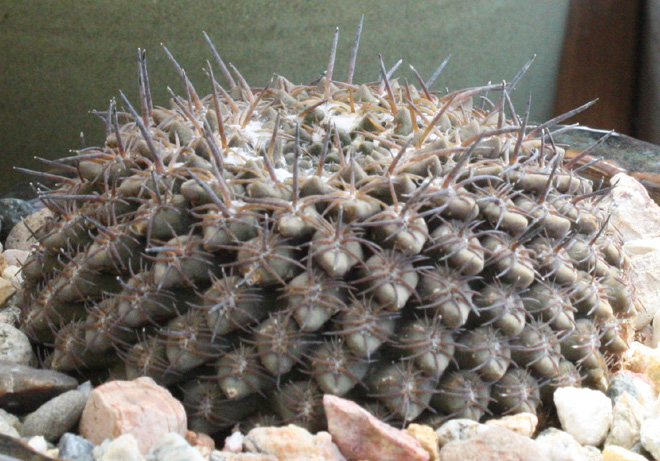
Changes are barely noticeable from the side, so let's try the top:

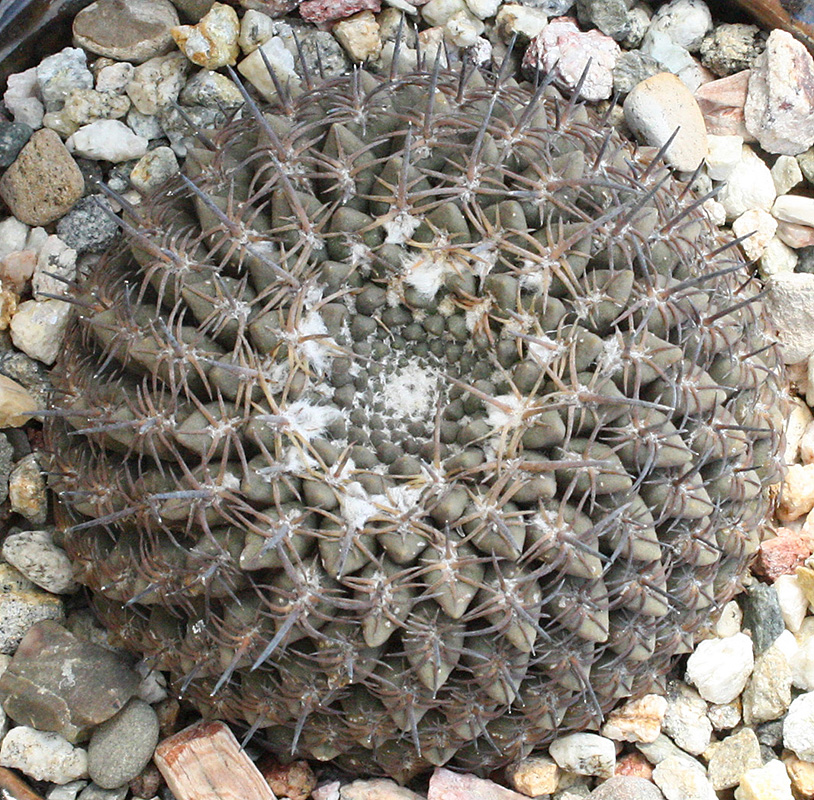
Ahhh, that's better -- the odieri is definitely taking up water, and yes, a little bit of new growth. Also, if you look at the before-and-after pics from the top, you'll notice the plant's skin has taken on a subtle greenish tinge. It's a sure sign that water and nutrients are getting into its tissues.
Uh oh, there I go again -- we're only halfway through the 2012 cacti, and I underestimated how much I have to show you. There are 2 special cases that deserve their own post, albeit for different reasons. Of course this messes up the chronology I had in mind, but I think you'll enjoy my next installment. After that, we'll resume the "CoronaCactus show".

